
Category of Astronomical Heritage: tangible immovable
Odessa Observatory, Ukraine

Format: IAU - Outstanding Astronomical Heritage
Description
Geographical position - InfoTheme: Astronomy from the Renaissance to the mid-twentieth century
Entity: 173
Subentity: 1
Version: 5
Status: PUB
Date: 2022-03-09 03:29:27
Author(s): Gudrun Wolfschmidt
Odesa Astronomical Observatory, vulytsia Marazliivska 1v, Shevchenko Park, Odessa 65014, Ukraine
Odessa [Ukrainian: Odesa, English, German and Russian: Odessa]
Location - InfoTheme: Astronomy from the Renaissance to the mid-twentieth century
Entity: 173
Subentity: 1
Version: 2
Status: PUB
Date: 2021-03-13 04:50:51
Author(s): Gudrun Wolfschmidt
Latitude 46°28.6’ N, Longitude 30°45.5’ E, Elevation 60m above mean sea level.
IAU observatory code - InfoTheme: Astronomy from the Renaissance to the mid-twentieth century
Entity: 173
Subentity: 1
Version: 1
Status: PUB
Date: 2021-03-13 04:24:05
Author(s): Gudrun Wolfschmidt
086
Description of (scientific/cultural/natural) heritage - InfoTheme: Astronomy from the Renaissance to the mid-twentieth century
Entity: 173
Subentity: 1
Version: 3
Status: PUB
Date: 2022-03-08 15:50:18
Author(s): Gudrun Wolfschmidt
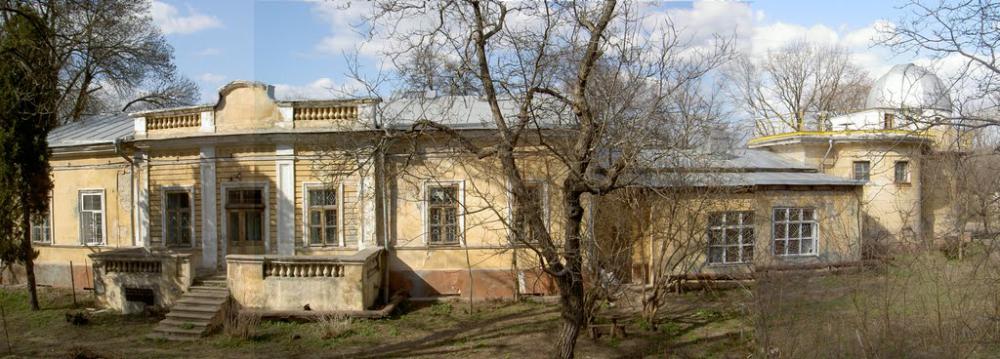
Fig. 1a. Main building of Odessa Astronomical Observatory (1871), (Wikipedia)
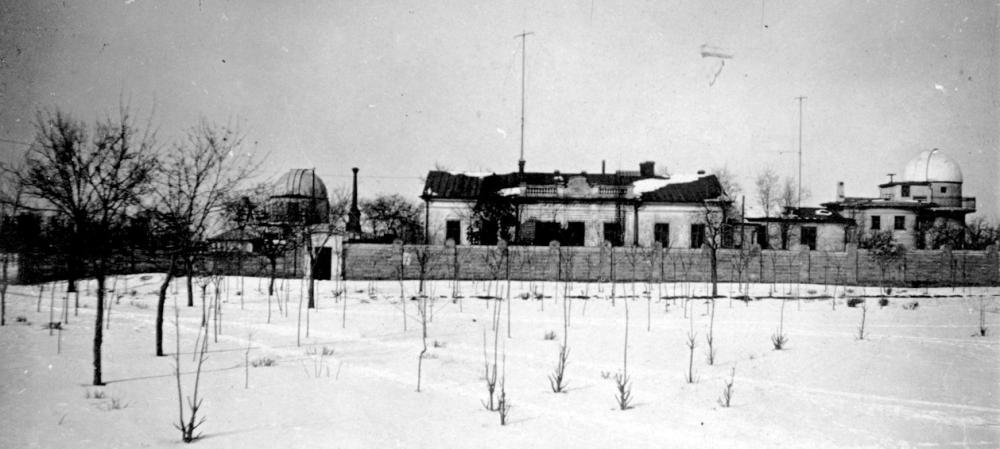
Fig. 1b. Historical photo of Odessa Astronomical Observatory (1871) (© OAO, history No. 15)
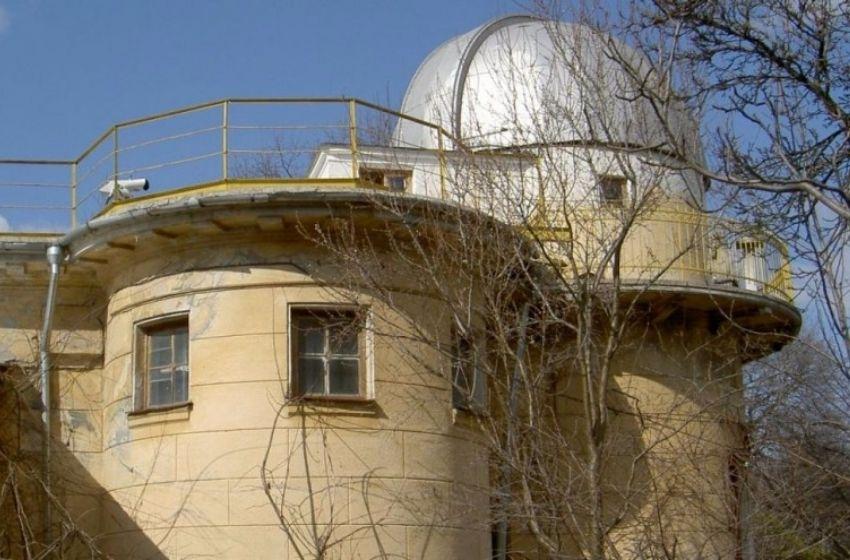
Fig. 2a. Odessa Astronomical Observatory (1871), Tower for the Cooke Refractor (Odessa Journal, January 22, 2022)
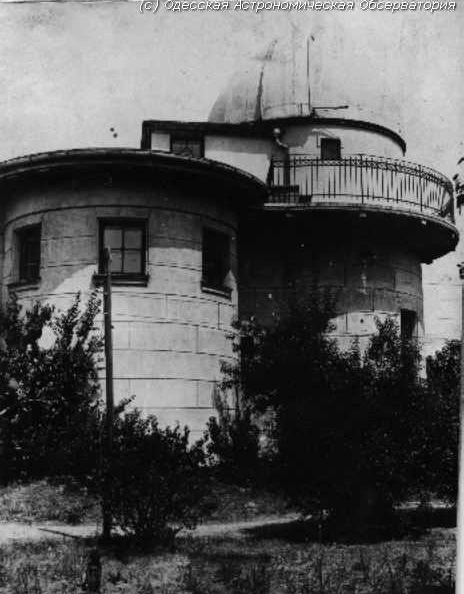
Fig. 2b. Historical photo of Odessa Astronomical Observatory (1871) (© OAO, history No. 18)
The city of Odessa in "New Russia", part of the Russian Empire, was founded in 1794 by Catherine the Great.
Astronomy in Odessa started in the "Richelieu Lyceum" in 1817 (Armand-Emmanuel, 5th Duke of Richelieu (1766--1822) was appointed in 1803/05 by Czar Alexander I as Governor of Odessa and New Russia). Odessa as a prominent port of the Black Sea, was interested in astronomical navigation for training navigators, checking nautical instruments, and providing the time for the city and for navigation. The observatory in the department of physics and mathematics was equipped with 24 astronomical and topographic instruments, which were mainly used for educational purposes but not yet for scientific.
The "Odessa Astronomical Observatory" was founded in 1865 as part of the Imperial Novorossiysk (New Russian) University of Odessa (*1865). The construction of the Odessa Observatory began in 1870 in Alexander Park (now Shevchenko Park), opened in 1871. The head of the Astronomy Department of the Novorossia University was also director of the observatory.
The first director from 1871 to 1880 was Professor Leopold Fomich Berkevitch (1828--1897), graduate and PhD, St. Petersburg University. His research interest was meteorology and celestial mechanics; he made an expedition for observing a Mercury transit (1891). The Odessa Observatory developed into one of the largest scientific institutions of the Russian Empire’s universities.
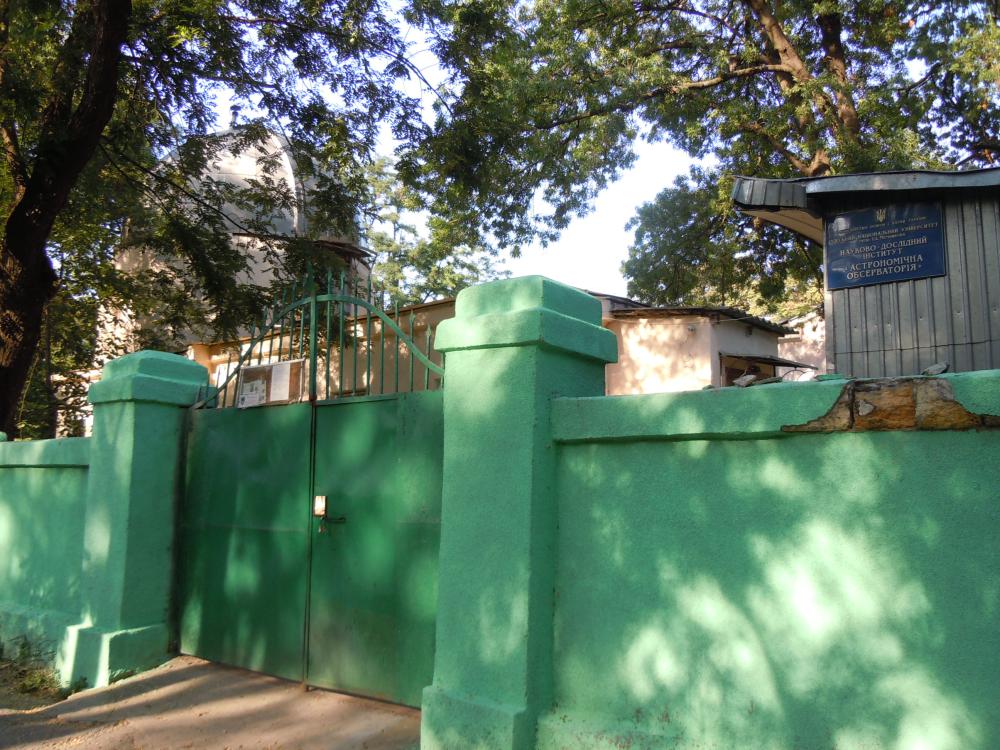
Fig. 3a. Entrance Gate of Odessa Astronomical Observatory (1871) (Wikipedia, CC3, Yuriy Kvach)
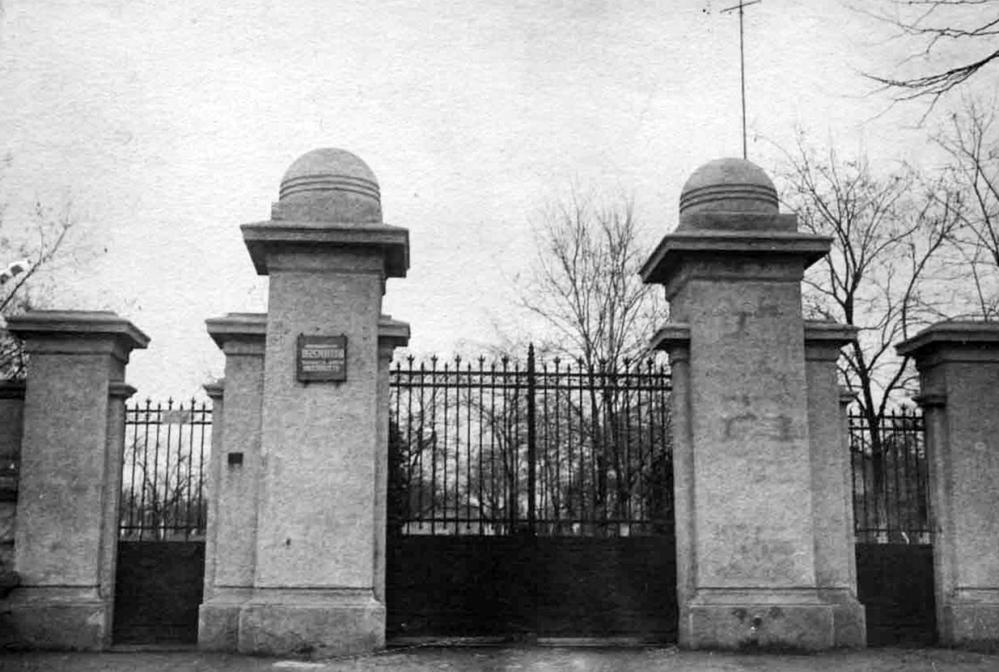
Fig. 3b. Entrance, Historical photo of Odessa Astronomical Observatory (1871) (© OAO, history No. 17)
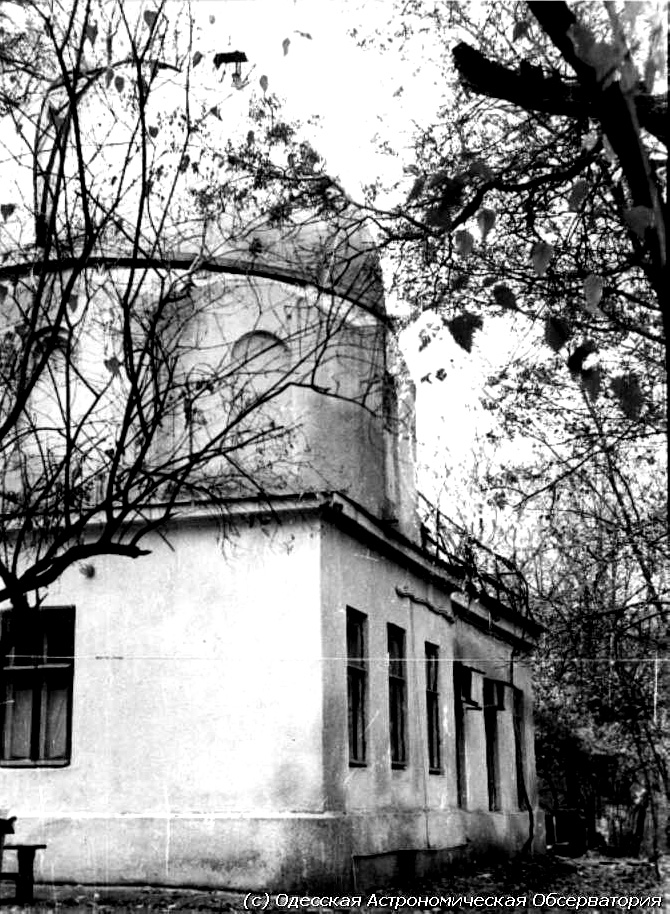
Fig. 3c. Tower with dome, Historical photo of Odessa Astronomical Observatory (1871) (© OAO, history No. 1)
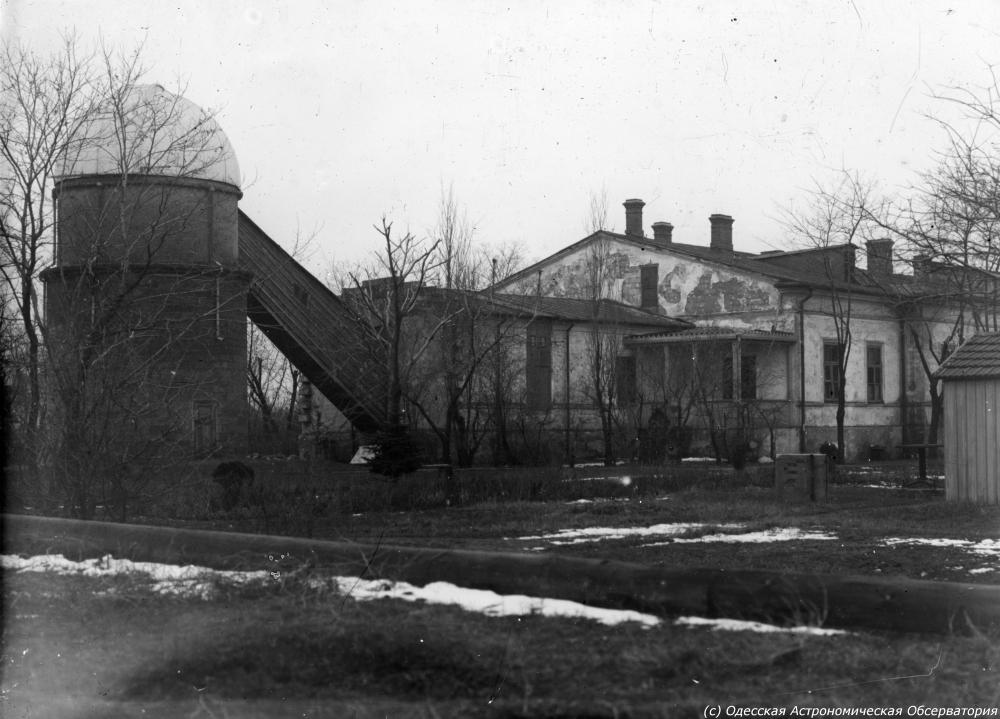
Fig. 3d. Tower with dome, Historical photo of Odessa Astronomical Observatory (1871) (© OAO, history No. 13)
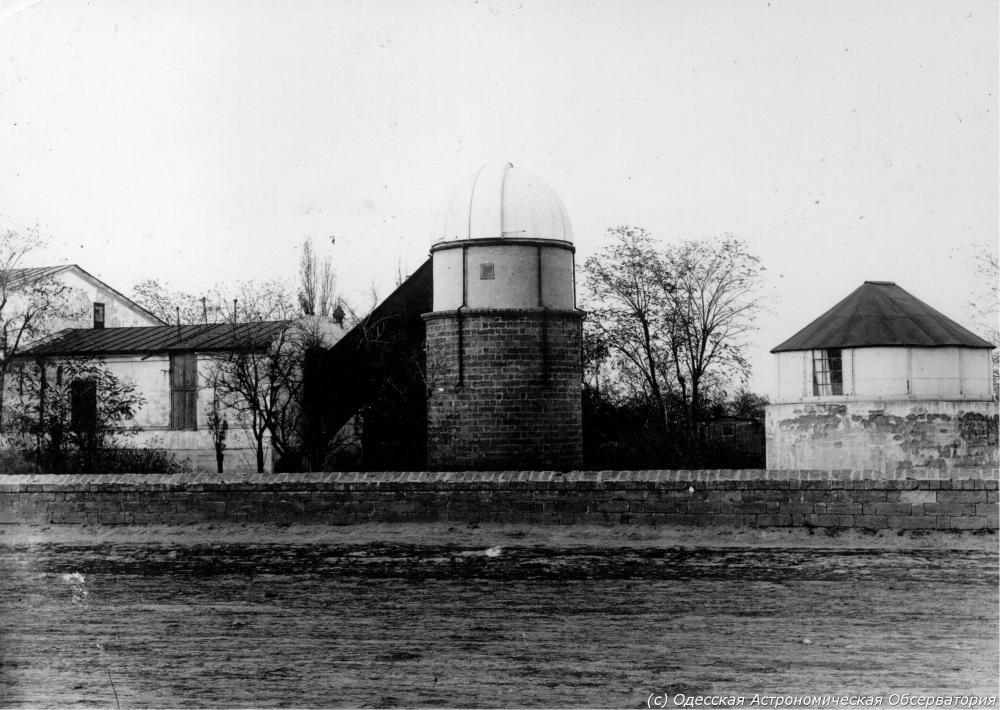
Fig. 3e. Historical photo of Odessa Astronomical Observatory (1871) (© OAO, history No. 16)
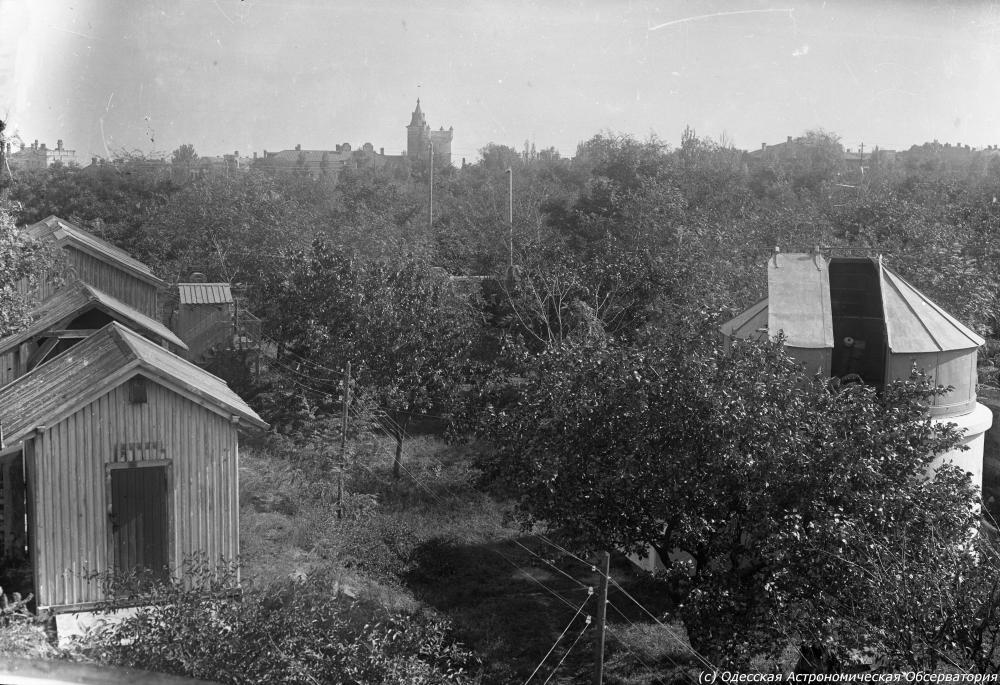
Fig. 3f. Historical photo of Odessa Astronomical Observatory (1871) (© OAO, history No. 6)
In 1885, a dome was added by the Odessa city architect Aleksander Osipovich Bernardazzi (1831--1907) for the 6.5-inch refractor purchased in England with money donated by Dr.med. P.A. Ivanov.
Since 1920, Odessa was part of the Ukrainian SSR and from 1922 part of the Soviet Union. In 1920, after liquidation of the Novorossia University, Odessa became the Main State Astronomical Observatory of Ukraine. In 1933, the Odessa Astronomical Observatory (OAO) was again included in the Department of Astronomy at the restored Odessa State University, now Odessa National University named after Ilya Ilyich Mechnikov (1845--1916).
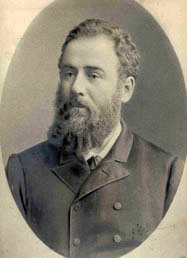
Fig. 4a. Aleksandr Konstantinovich Kononovich (1850--1910) (Wikipedia)
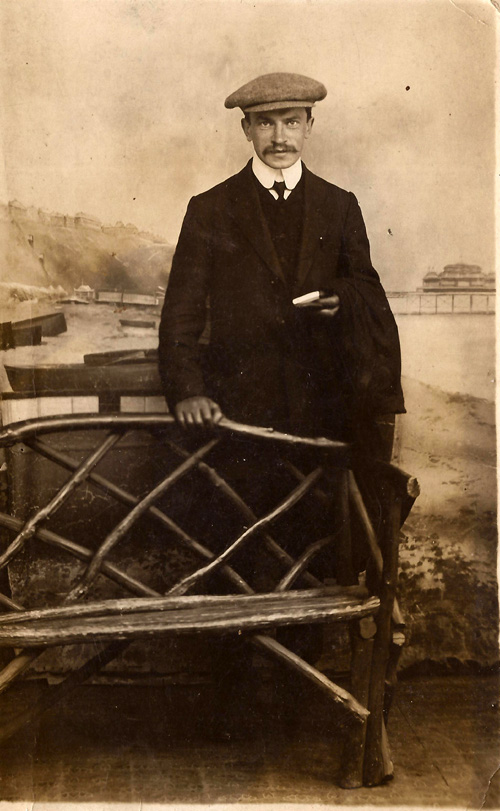
Fig. 4b. Aleksandr Yakovlevich Orlov (1880--1954) (Wikipedia)
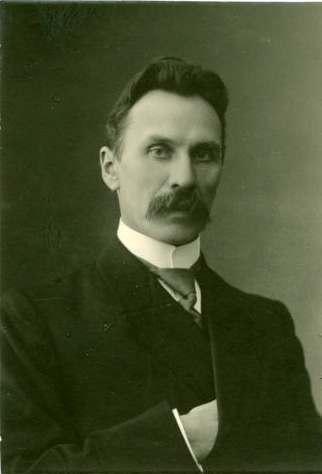
Fig. 4c. Konstantin Dorimedontovich Pokrovsky (1868--1944) (Wikipedia)
Important research
Aleksandr Konstantinovich Kononovich (1850--1910), the first astrophysicist in the South of Russia, acquired new instruments, made photometric observations of planets and stars, photographs of the Sun and prominences.
Aleksandr Yakovlevich Orlov (1880--1954), director in Odessa from 1912 to 1934 and Member of the Ukrainian Academy of Sciences, studied in St. Petersburg, and attended lectures in Paris, Lund and Göttingen; his emphasis was seismology besides astronomy (comets, planets, celestial mechanics). He succeeded to get outstanding scientists in the Odessa Observatory, amoung them George Anthony [Georgiy Antonovich] Gamov (1904--1968). Orlov undertook expeditions, creating several stations (in Moscow, Poltava, Tomsk, Blagoveshchensk) for gravimetrical mapping, identifying many mineral deposits; in addition he was active in creating geodetic landmarks. He published the "Transactions of the Astronomical Observatory’’ (1914--1915), "Odessa Astronomical Calendar" (1919), the "Nautical Astronomical Annual’’ (1921--1924) for the Black Sea Fleet, and the "Circular of Odessa Astronomical Observatory’’ (1921--1927); preprints were published in Ukrainian, German, Russian, and French languages. His later career was in Sternberg-Institute for Astronomy in Moscow (1934 to 1938) and in Kiev Observatory as director from 1944 to 1952.
Konstantin Dorimedontovich Pokrovsky (1868--1944) developed methods of celestial mechanics for determining the orbits of cloud formations in comet tails. For a "Fundamental Catalogue of Faint Stars" (FCFS) 645 stars were observed with the meridian circle. In addition, he started spectral observations for stellar atmospheres study. New topics besides comets and asteroids were introduced: binary systems, photometrical and spectral investigations of the stars. He also organized an expedition to Siberia for observing the Total Solar Eclipse (June 19, 1936). New publication series were the "Odessa State University Transactions -- Collections of the Astronomical Observatory’’ (1935, 1937 and 1940) and "Travaux de l’Université d’Odessa -- Reciel de l’observatoire astronomique O.U.’’ in Ukrainian with summaries in French and Russian; the first English summary was published by A.R. Shulberg in 1940 ("Travaux", Vol. 3).
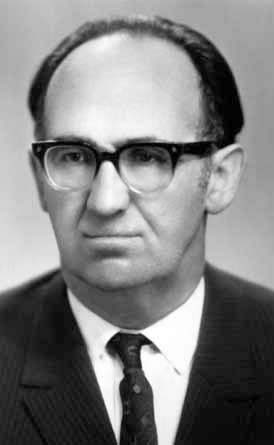
Fig. 5a. Vladimir Platonovich Tsesevich (1907--1983), director from 1944/45 to 1983 (Wikipedia)
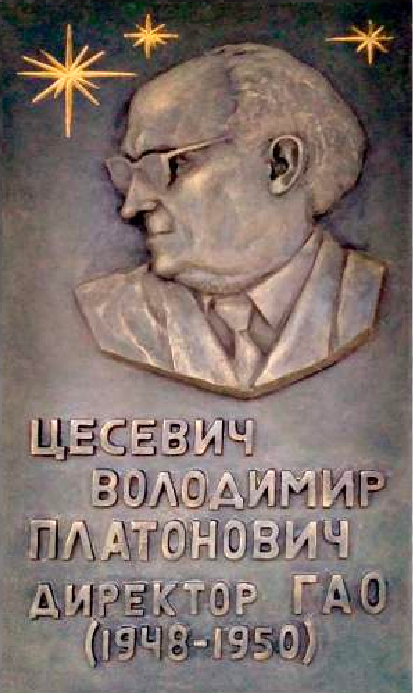
Fig. 5b. Memorial plaque in honor of Vladimir Platonovich Tsesevich (1907--1983), MAO Kiev, Sculptor A. Kusnetsov (credit: I.B. Vavilova, Odessa Astronomical Publications, vol. 30 (2017))
A prominent astronomer Vladimir Platonovich Tsesevich (1907--1983), director from 1944/45 to 1983, founded the Odessa Scientific School of Researchers of Variable Stars, e.g. pulsating variables from DSct and RR through C and RV to SR and M, "magnetic" and "non-magnetic" cataclysmic variables, symbiotic, X-Ray, and other interacting binaries. Tsesevich defended his PhD thesis "On the methods of determining the orbits of Algol type stars" at the Kazan State University in 1944. He was called as correspondent member of the USSR Academy of Science (1948), and functioned as Past Vice-President of IAU Comission 42 Close Binary Stars (1961--1967).
A new "Publications" series was started in Odessa in 1947 (until 1963) in Russian; Vol. 4 was a monograph by Prof. Tsesevich about "Investigations of the eclipsing variable stars’’. There were also results of research published in Russian journals with titles like "Variable Stars’’, "Astronomical Journal’’, "Astronomical Circular’’.
Two new topics of the institute were photography of small planets (sonce 1945) in order to get mass and density of the asteroids’ ring, during the International Geophysical Year (1957--1958) meteor research. The staff was enlarged from 1957 with 30 members to 130 members in 1992.
Tsesevich also initiated a telescope manufacturing group optical and mechanical workshop, which made telescopes up to 1m, starting a 1.5-m-reflector.
Tsesevich erected the Odessa Radio Telescope RATAN-4 -- now in the Mayaki village (1957), 40 km to the West of Odessa (latitude 46.4° N, longitude 30.27° E, altitude 25m), and created the Krizhanovka out-of-town observing station; in addition, three high-altitude stations, located in Armenia, North Caucasus and Turkmenistan. The number of employees was increased from 15 to 150 research scientists, and the Tsesevich’s "scientific school of variable star research" got high acknowledgment from abroad. The Odessa Planetarium was opened in 1963.
After the long successful time of Tsesevich as director (44 years), Valentin G. Karetnikov, director from 1990 to 2006, started the time with Ukraine as an independent state. The "Odessa Astronomical Publications’’ -- now in English -- paved the way for international reception. Observations of variable stars were maade with the 6-m-telescope of Special Astrophysical Observatory (SAO) of the Russian Academy of Sciences.
The Research topics were in the beginning -- besides navigation and timekeeping responsibilities -- astrometry, celestial-mechanics, and observing variable stars, comets, and meteors, in the 20th century astrophysics, especially physical variable stars and eclipsing binaries, especially close binary systems, stellar spectrophotometry, rapid photometry of flare activity of Wolf-Rayet stars, chemical analysis the stellar atmospheres, composition and evolution of stars, as well as tracking artificial Earth satellites.
Since the collapse of the Soviet Union in December 1991, Odessa has been part of independent Ukraine.
History - InfoTheme: Astronomy from the Renaissance to the mid-twentieth century
Entity: 173
Subentity: 1
Version: 6
Status: PUB
Date: 2022-03-09 03:34:14
Author(s): Gudrun Wolfschmidt
Directors of Odessa Astronomical Observatory
- Leopold Fomich Berkevitch (1828--1897), director from 1871 to 1880
- Aleksandr Konstantinovich Kononovich (1850--1910), director from 1881 to 1910
- Aleksandr Yakovlevich Orlov (1880--1954), director from 1912 to 1934
- Konstantin Dorimedontovich Pokrovsky (1868--1944), director from 1934 to 1944. On May 11, 1944, Pokrovsky was arrested because he presented a lecture entitled "The destruction of the Pulkovo Observatory by the Bolsheviks".
- Vladimir Platonovich Tsesevich [Zessewitsch] (1907--1983), director from 1944 to 1983
- Yuri A. Medvedev (1937--1999), director from 1983 to 1990
- Valentin G. Karetnikov (....), since 1983, Chair of the Department of Astronomy, director from 1990 to 2006 - since 1990, the Declaration of State Sovereignty of Ukraine
- Sergei Mikhaylovich Andrievsky, director since 2006.
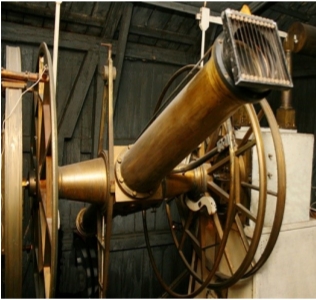
Fig. 6a. 3 ft meridian circle, made by A. Repsold & Söhne of Hamburg (1871) (credit: Andrievsky 2019)
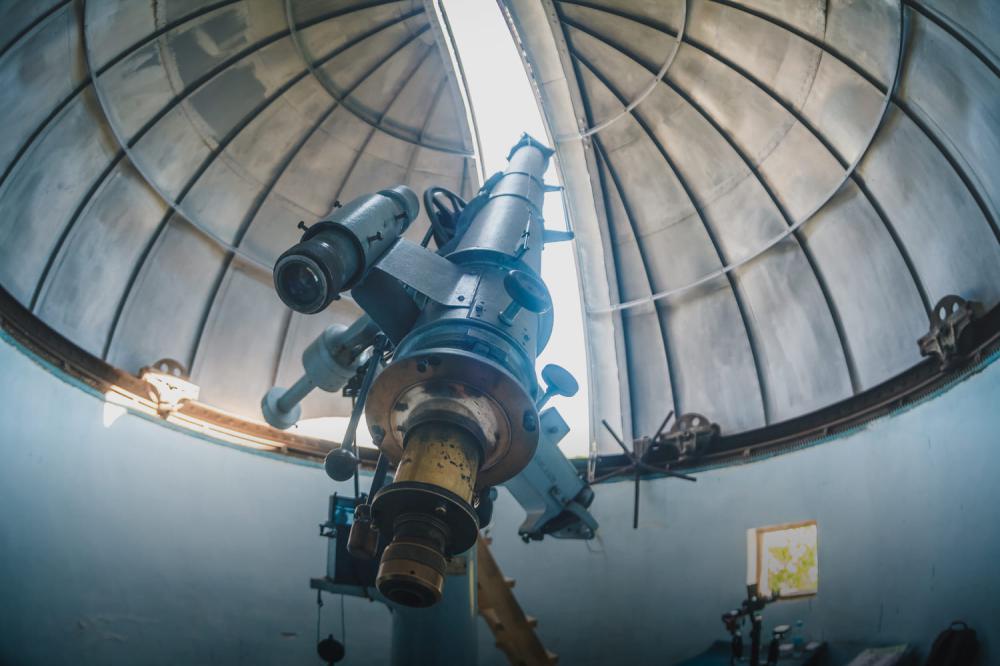
Fig. 6b. 16.5-m-Refractor, made by T. Cooke & Sons of York, England (1886) (Ukrainer, March 31, 2021)
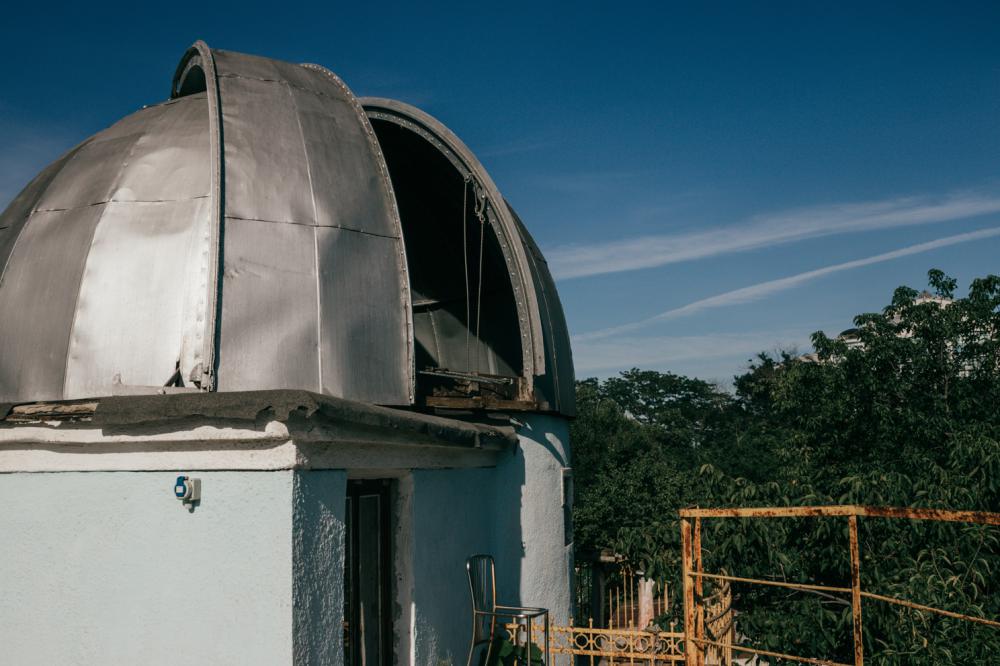
Fig. 6c. Large Astrograph, Odessa Observatory (Wikipedia, CC3, Kateryna Kulish)
Instruments of Odessa Astronomical Observatory (AO ONU)
- Repsold’s three-foot meridian circle (diameter of the lens 14cm, f = 2m; diameter of the circle 1m, made by A. Repsold & Söhne of Hamburg (1871); obtained from the Tiflis Physics Observatory, used until 2000.
- 6.5-inch Refractor (165-mm objective lens), made by T. Cooke & Sons of York, England (1886)
- "Small Astrograph" - first double-camera
- "Large Astrograph" in the tower
- "Three-camera Astrograph" (short-focus cameras)
With these three astrographs during 1945-1957 more than 10 thousand plates were exposed. This is a part of Odessa star sky image collection which is named "Old Collection".
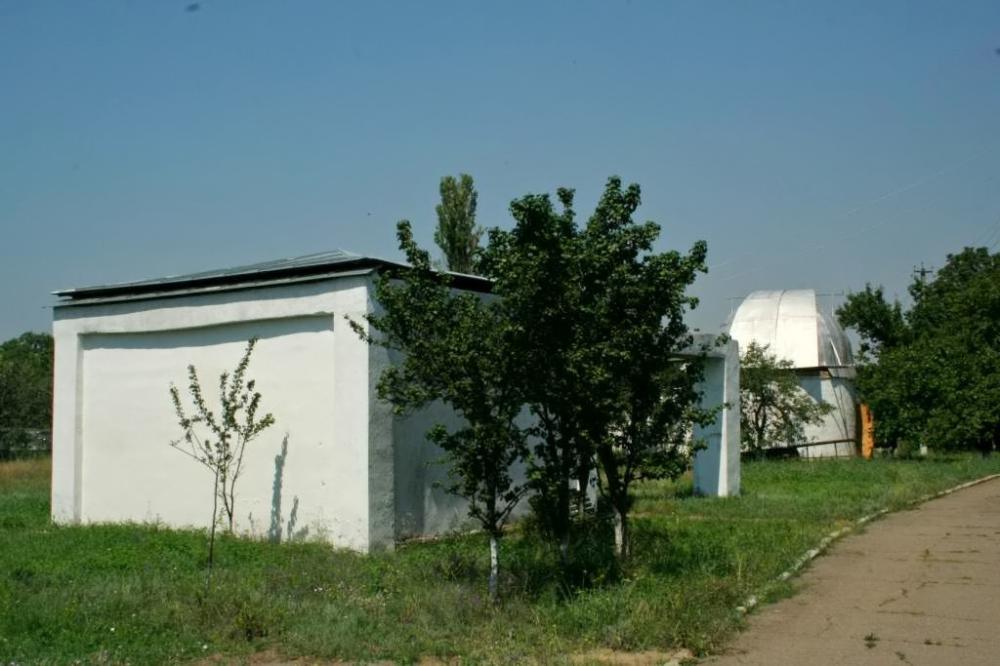
Fig. 8a. Mayaki Station (© OAO)
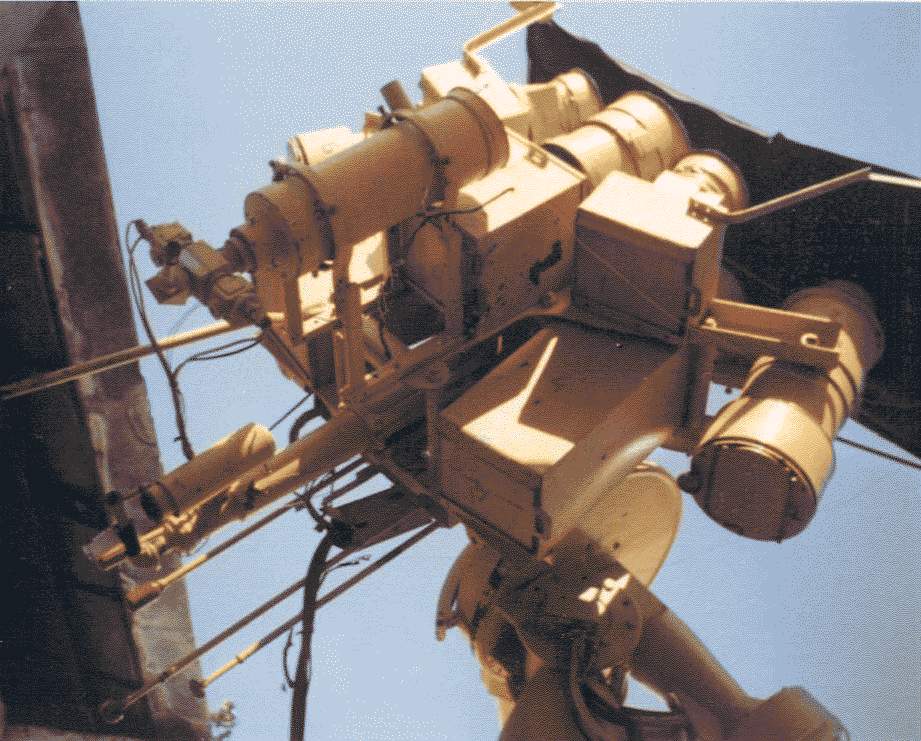
Fig. 8b. Astrograph with seven cameras (1957) (© OAO)
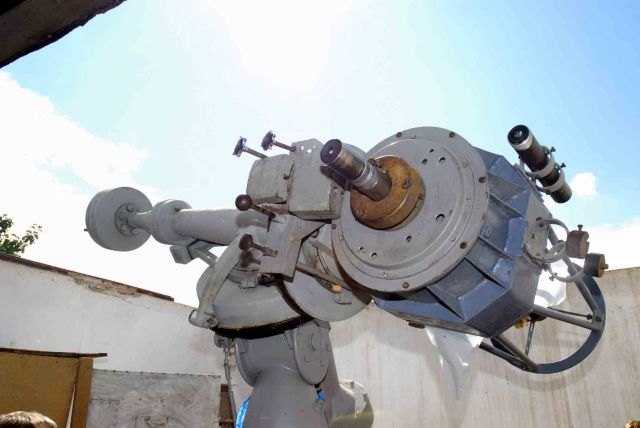
Fig. 8c. RCT-400 Reflector (© OAO)
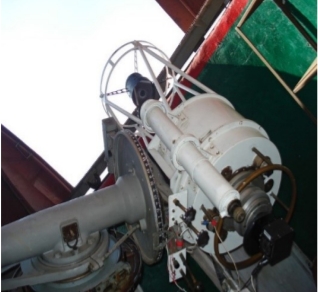
Fig. 8d. RCT-600 Reflector (Andrievsky et al., 2019)
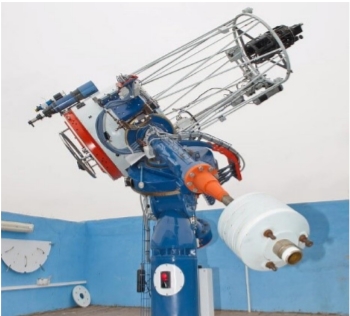
Fig. 8e. RCT-800 Reflector (Andrievsky et al., 2019)
Mayaki Station
- RCT-400 Reflector (diameter of the main mirror 40cm, f=2m), equatorial mount, Reducer 1:5 and 1:1.4, Detector CCD
- 20-inch-Cassegrain-Reflector (Main mirror diameter 48cm, secondary mirror diameter 13cm, equivalent focal length f=11m, f/23) with electro-photometer
- RCT-600 double reflector (2005--2012), Ritchey-Chrétien (diameter of the main mirror 60cm, f=4.8m, f/8), equatorial mount, Detector CCD for the observation of the solar system small bodies and cosmic debris
RCT-800 (diameter of the main mirror 80cm, f=2.14m, f/2.67), Ritchey-Chrétien, catadioptric plananastigmat, modification of N. Fashchevsky, equatorial mount, Detector CCD, Limiting magnitude: ~19.5mag.
- Old meteor patrol aerial cameras NAFA-3C/25 (1957--1993)
- Wide-angle optics: Tair-19 (17-cm aperture) and Uranium-12 (22-cm aperture) -- for wide-angle sky patrol photos, used for the search for the variable stars and for studying other celestial objects
- AZT-3 -- Azimuth telescope (diameter of the main mirror 48cm, f=2m, Newton focus 1/4.5), altazimuth mount, Detector CCD for photometrical observations of the short-period variable stars
- Astrograph with seven cameras (1957): four of them were based on the objective lenses Uran-9 (in 1959 two Uran-9 replaced by long focus objectives Zeiss Triplet and Industar-17, in 1966 new Uran glass), two Vierlinser, and one Tessar GOI. The photographic plates had standard size 18×24cm. All photo materials were produced in German Democratic Republic by one company (photo-plates Agfa Astro and ORWO).
- Radio telescope Uran-4 (RATAN-4)
- 100-cm-Laser-location telescope TPL-1M
- 80-cm theodolite LD-2
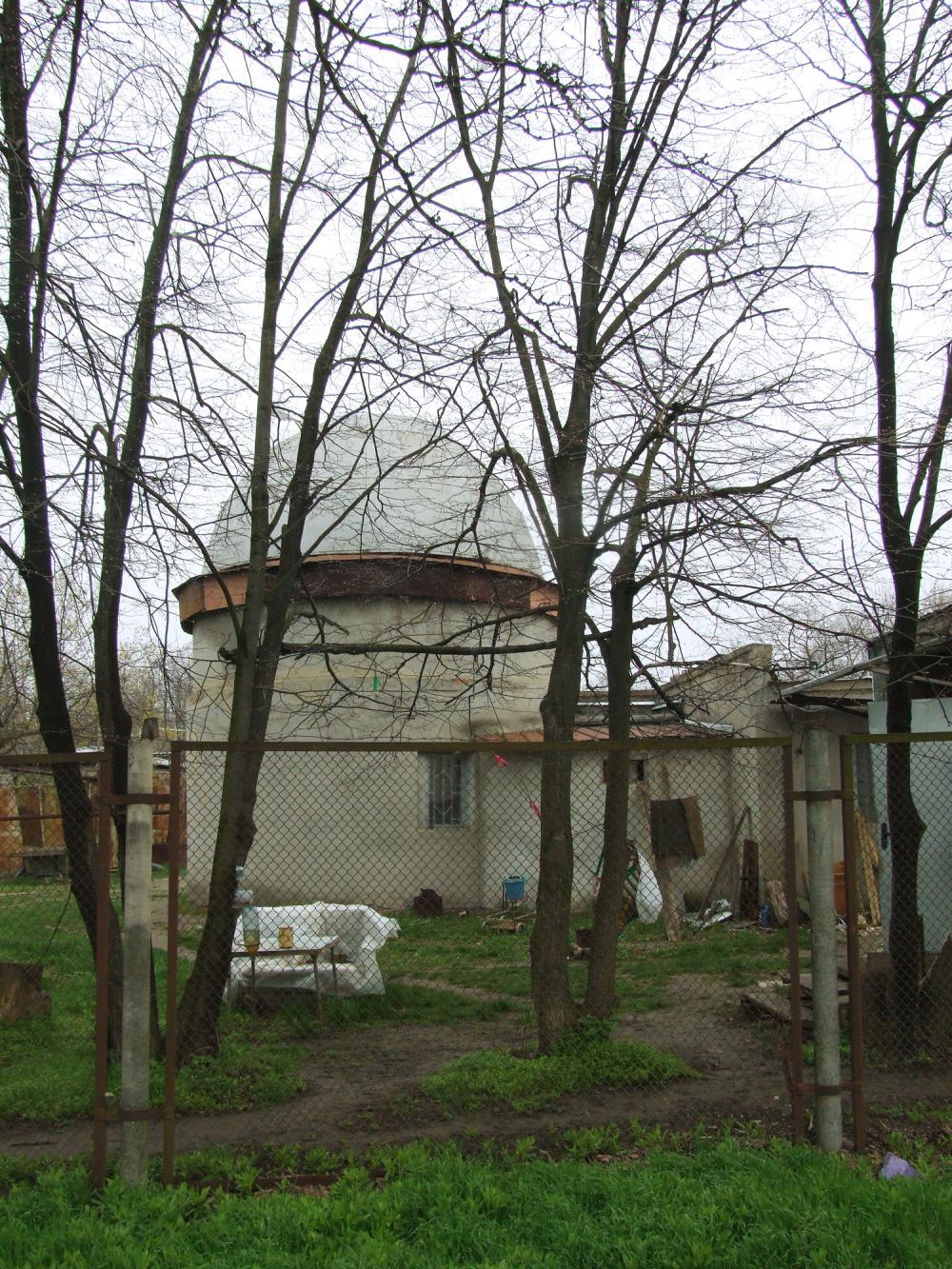
Fig. 9a. Kryzhanivka station (1957) (Wikipedia, CC2.5, Minami Himemiya)
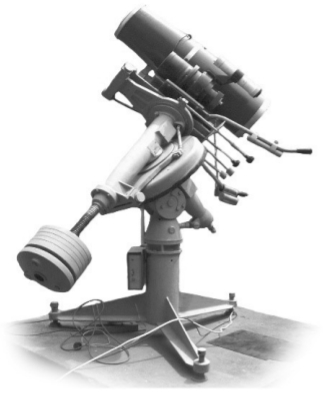
Fig. 9b. Schmidt telescope, Kryzhanivka station (Andrievsky et al., 2019)
Kryzhanivka station (1957)
- Schmidt telescope (22cm correction plate / 27cm main mirror, f=0.44m, f/2, field-of-view: 49.5’ x 37.4’, Limiting magnitude: ~19.2mag) and CCD camera, new meteor patrol camera TV camera WATEC LCL-902K (since 2003), Videoscan-415-2001 (since 2015), used for the observation of cometary tails.
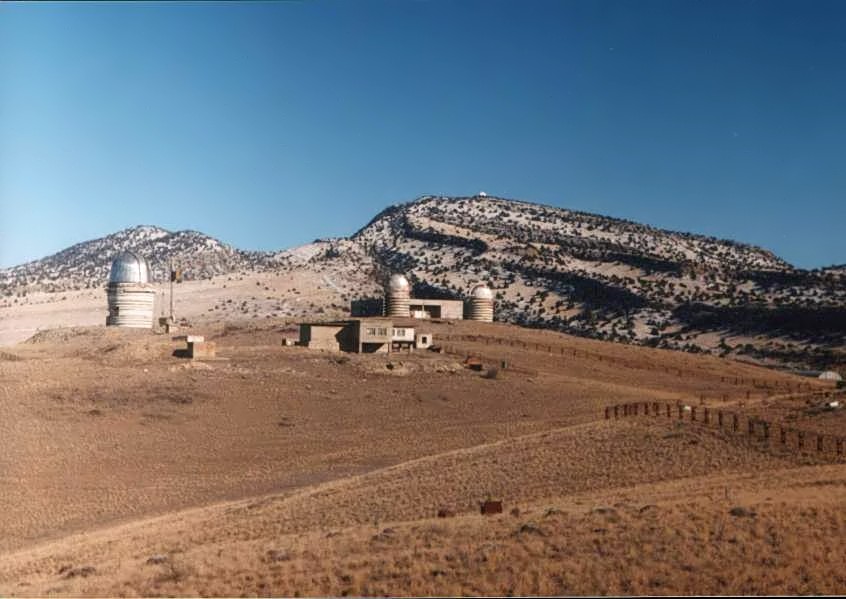
Fig. 10a. Dushak-Erekdag Observatory, South of Turkmenistan (© OAO)
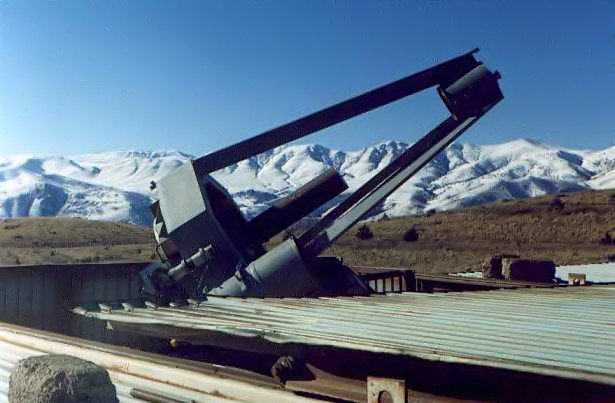
Fig. 10b. 80cm-Ritchey-Chretien Reflector (RCT-800), Dushak-Erekdag Observatory, South of Turkmenistan (© OAO)
Dushak-Erekdag Observatory, South of Turkmenistan
- RCT-800 -- 80cm-Ritchey-Chrétien telescope with a two-channel photometer
- AZT-28, Double tube telescope 2x0.5
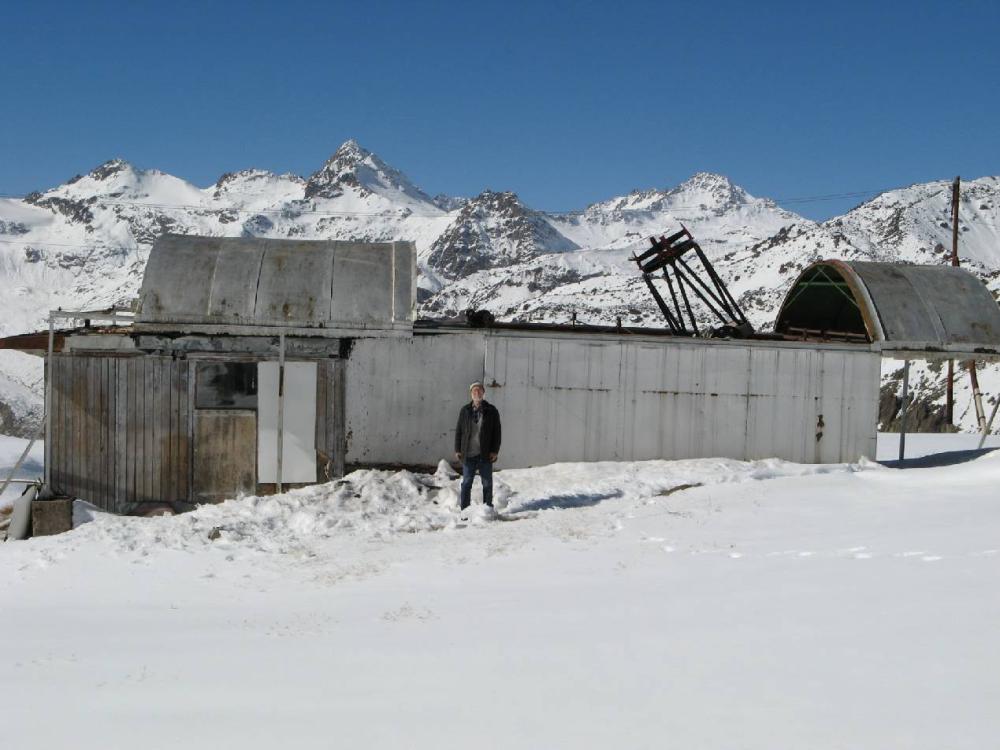
Fig. 11a. Pavilion for the RCT-800, Peak Terskol, North Caucasus (© OAO)
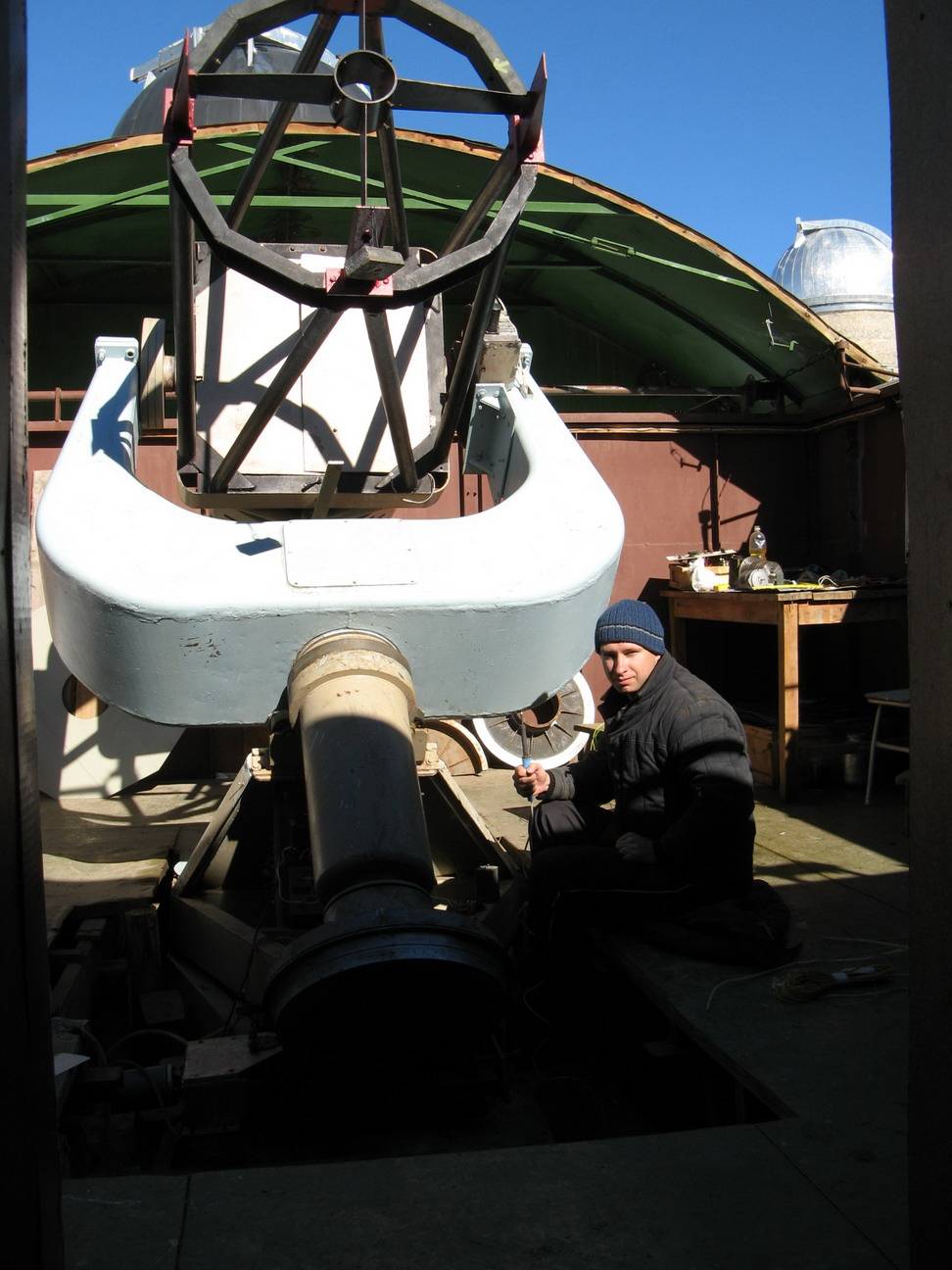
Fig. 11b. 80-cm-Cassegrain telescope (RCT-800), Peak Terskol (© OAO)
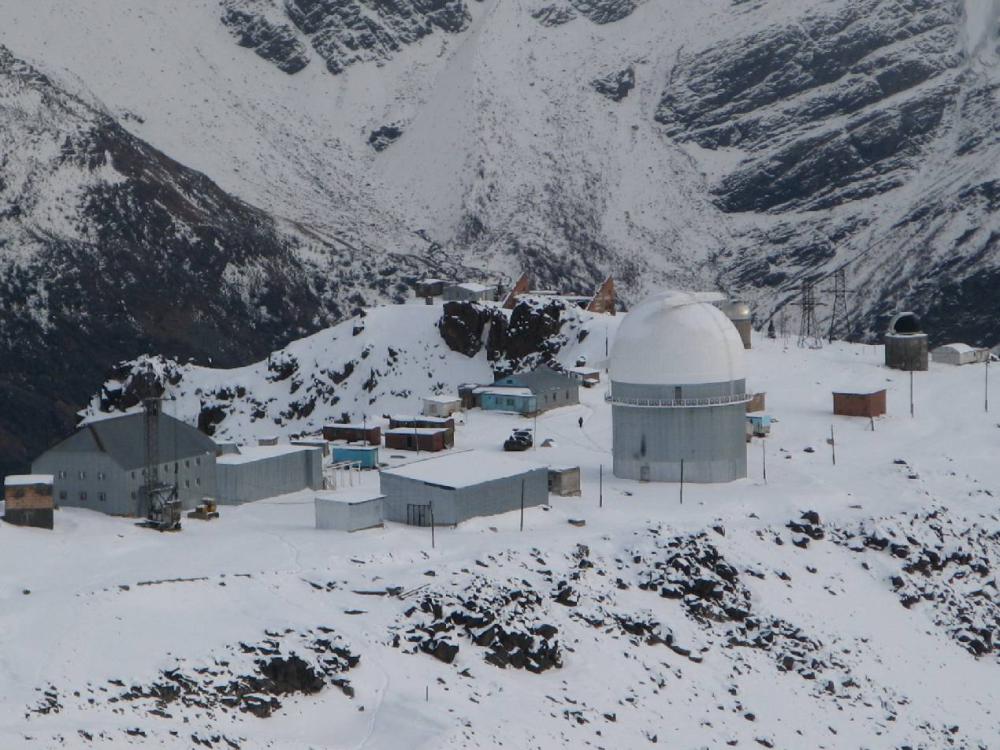
Fig. 11c. Peak Terskol Observatory, North Caucasus (© OAO)
Peak Terskol, North Caucasus, Southern Russia (1970/74)
- RCT-800 -- 80-cm-Cassegrain telescope (D = 0.8m, f=10m)
- Zeiss-2000, 2-m-Reflector -- Ritchey-Chrétien-Coudé (RCC) telescope (1995) in large telescope dome
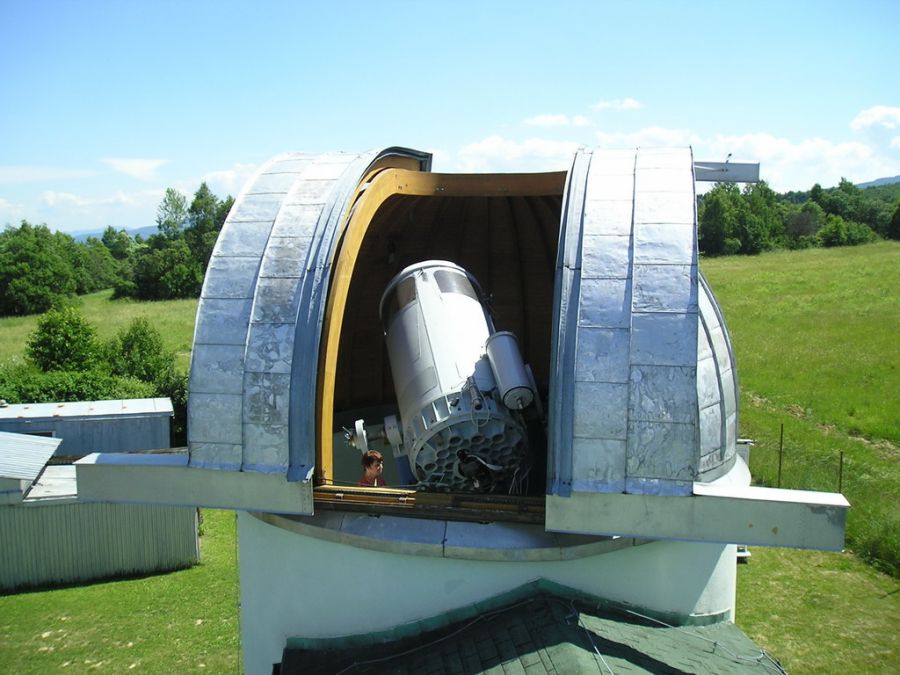
Fig. 12. 1-m-Ritchey-Chrétien system, Vihorlat National Telescope (VNT), Kolonica, Vihorlat Astronomic Observatory, Slovakia (© OAO)
Kolonica - Vihorlat astronomic observatory, Slovakia -- cooperation of Slovak and Ukrainian astronomers
- VNT - Vihorlat National Telescope, 1-m-Ritchey-Chrétien system, built by Odessa Observatory, used for the observation of the variable stars
State of preservation - InfoTheme: Astronomy from the Renaissance to the mid-twentieth century
Entity: 173
Subentity: 1
Version: 4
Status: PUB
Date: 2022-03-08 15:51:24
Author(s): Gudrun Wolfschmidt
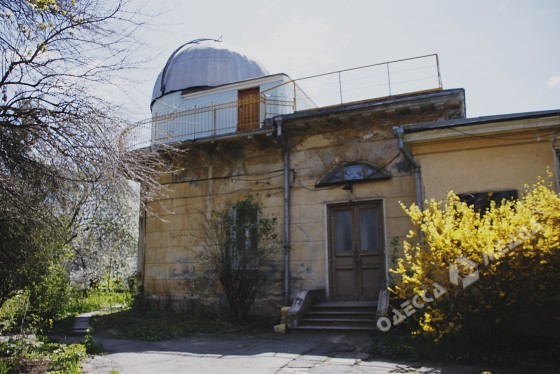
Fig. 13a. Odessa Astronomical Observatory (Wikipedia)
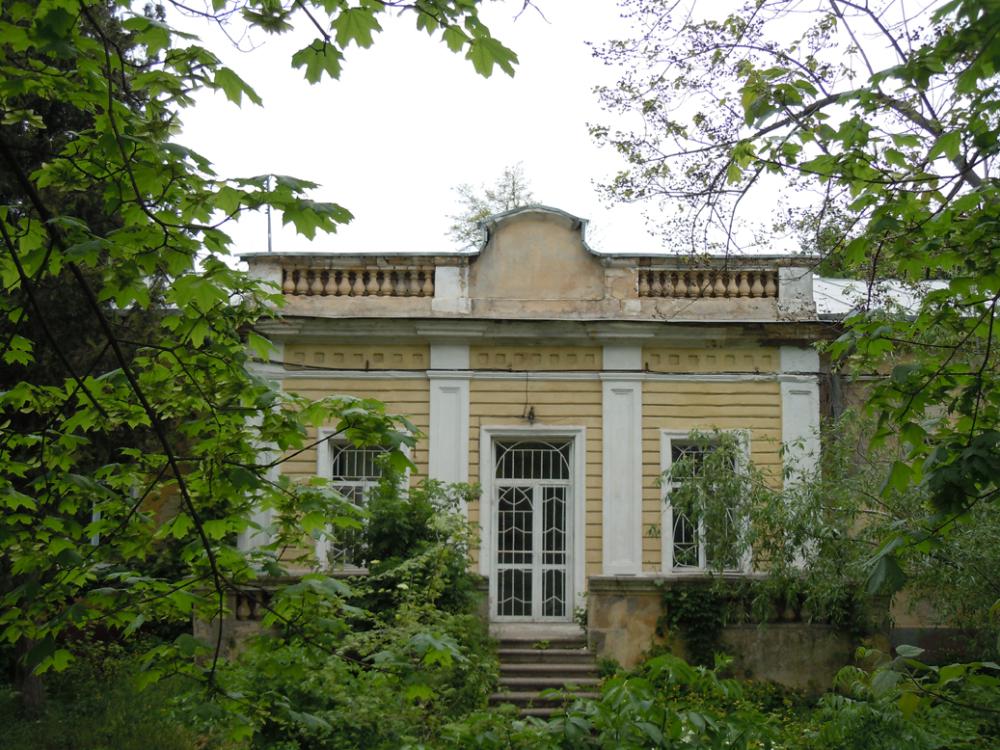
Fig. 13b. Odessa Astronomical Observatory, main building (Wikipedia)
The Astronomical Observatory Odessa is listed as a monument in Ukraine (number: 51-101-0645).
The main instrument was the equatorial refractor, made by T. Cooke & Sons of York (1886). In the tower is a marble floor is covered with astronomical symbols, marble steps of a spiral staircase lead to the telescope.
"The last renovation here was almost thirty years ago. The roof began to leak, the ceiling under it, which has an unusual domed shape, is losing its original appearance. If a collapse occurs, it will be impossible to get to the telescope. Cook’s equatorial is no longer suitable for scientific research, but it is very valuable as a historical exhibit and part of the excursion route around the observatory." Natalya Bazey, fundraiser and researcher at the Astronomical Observatory Research Institute of Odessa University Mechnikov (Odessa Journal, January 22, 2022)
The Astronomical Observatory Odessa of ONU has a large "Sky Patrol" plate collection, more than 104,000 plates collected in period 1909--1998, which is the third in the world according to the number of plates -- after Harvard (USA), 500,000 plates of northern and southern hemispheres up to 17 mag, and Sonneberg (Germany), 250 thousands of negatives collected since 1926.
Odessa made with 7-camera astrograph three series: "old" (1957--1959), "new" (1959--1966) and "third" series (1966--1998). In addition, there is the Simeiz’s astro-plate collection, consisting of about 10 thousands of plates, exposed during 1909--1953.
Comparison with related/similar sites - InfoTheme: Astronomy from the Renaissance to the mid-twentieth century
Entity: 173
Subentity: 1
Version: 3
Status: PUB
Date: 2022-03-15 17:51:48
Author(s): Gudrun Wolfschmidt
Concerning the large photographic plate collection with the emphasis on variable stars, one can compare Odessa in this respect with Harvard Observatory, USA, Sonneberg and Bamberg observatories, Germany, and Lomonosov Moscow State University (MGU), Russia.
See also Astronomical Observatories of Ukraine: Mykolaiv Observatory, Observatory of Kyiv National University, Odessa Observatory, Simeiz, Crimean Astrophysical Observatory near Yalta (2008):
"This transnational nomination brings together important astronomical observatories. Four observatories from the 19th and 20th centuries in Ukraine are included in the nomination: Mykolaiv Observatory, Astronomical Observatory of Kyiv National University, Astronomical Observatory of Odessa National University, and Crimean Astrophysical Observatory." - UNESCO World Heritage, Ukraine Tentative List (2008), Criteria (ii), (iv) and (vi) (cultural).
Threats or potential threats - InfoTheme: Astronomy from the Renaissance to the mid-twentieth century
Entity: 173
Subentity: 1
Version: 2
Status: PUB
Date: 2022-03-07 05:26:14
Author(s): Gudrun Wolfschmidt
no threats, but now the war in the Ukraine!
Present use - InfoTheme: Astronomy from the Renaissance to the mid-twentieth century
Entity: 173
Subentity: 1
Version: 2
Status: PUB
Date: 2022-03-07 05:26:37
Author(s): Gudrun Wolfschmidt
The Odessa Astronomical Observatory is still used for astronomical research, e.g. astrophysics, especially variable stars and eclipsing binaries, small bodies of the solar system, as well as tracking artificial Earth satellites.
Astronomical relevance today - InfoTheme: Astronomy from the Renaissance to the mid-twentieth century
Entity: 173
Subentity: 1
Version: 2
Status: PUB
Date: 2022-03-07 05:27:25
Author(s): Gudrun Wolfschmidt
The emphasis of Odessa Astronomical Observatory, as a unit of Odessa National University, is research on comets, asteroids and meteors, astrophysics of the Sun and the stars, the study of the chemical and dynamic evolution of stars and the Galaxy, and also cosmology.
Departments:
Physics of stars and galaxies
Physics of small bodies of the solar system
Space research
Working groups:
cosmologyy and extragalactic objects
astrometry and celestial mechanics
The Odessa Astronomical Observatory has several out-stations:
- Mayaki Station (1957), 40 km west of Odessa
- Kryzhanovka station, Kominternivskyi district, near Odessa,
- Peak Terskol Observatory, North Caucasus, Southern Russia,
- Observatory on the mountain Dushak - Erekdag, South of Turkmenistan.
- Kolonica Saddle, Vihorlat astronomical observatory, Slovakia.
In addition, there exists the Odessa Department of the Radioastronomical Institute of NASU.
References
Bibliography (books and published articles) - InfoTheme: Astronomy from the Renaissance to the mid-twentieth century
Entity: 173
Subentity: 1
Version: 3
Status: PUB
Date: 2022-03-08 14:42:39
Author(s): Gudrun Wolfschmidt
- Andronov, Ivan Leonidovich: Odessa Scientific School of Researchers of Variable Stars: From V.P. Tsesevich (1907--1983) to Our Days. In: Odessa Astronomical Publications 30 (2017), p. 252-255.
(DOI: 10.18524/1810-4215.2017.30.118686)
- Andronov, Ivan Leonidovich: Highlights of recent research in the Odessa branch. In: Annales Astronomiae Novae, v. 1 (2020).
(http://astronomianova.org/pdf/AAN1_2020.pdf).
- Andrievsky, S.M.; Bazyey, N.V.; Zhukov, V.V.; Koshkin, N.I.; Kashuba, V.I.; Kashuba, S.G.; Gorbanev, Yu.M.; Sukhov, P.P.; Podlesnyak, S.V.; Udovichenko, S.N. & L.E. Keir: Monitoring of Space Objects Using Odessa Observatory Network of Telescopes. Large surveys with small
telescopes: Past, Present, and Future (Astroplate III), Bamberg, Germany, March 11-13, 2019.
- Birshtein A.: Pokrovsky Konstantin Dormidontovich (1868--1944). They left a mark on the history of Odessa. Odessa Biographical Reference book 1993.
(http://odessa-memory.info/index.php?id=326)
- Fenina, Z.N. & Yu.S. Romanov: Vladimir Platonovich
Tsesevich or the Golden Age of the Odessa Astronomical
Observatory. Kiev: LOGOS 2008.
- Gurshtein, Alexander A.: Orlov, Alexander Yakovlevich. In: Biographical Encyclopedia of Astronomers 1628-1629.
- Karetnikov, Valentin G. & T.N. Dorokhova: Odessa Observatory as a Cultural and Scientific Educational Center on the Black Sea l. In: Library and Information Services in Astronomy V: Common Challenges, Uncommon Solutions. Proceedings of the conference held 18-21 June 2006 in Cambridge, Massachusetts, USA. Edited by Sandra Ricketts, Christina Birdie, and Eva Isaksson. ASP Conference Series, Vol. 377 (2007), p. 375-379.
- Karetnikov, Valentin G.: Mass loss and shell masses of close binary stars. In: IAU, Colloquium on Cataclysmic Variables. Recent Multi-Frequency Observations and Theoretical Developments, 93rd, Bamberg, West Germany, June 16-19, 1986. Astrophysics and Space Science, vol. 131 (March 1987), no. 1-2, p. 675-679.
(1987Ap&SS.131..675K).
- Karetnikov, Valentin G.: 200 years of astronomy in Odessa. In: Astrophysical Transactions, Vol. 10 (1996), 1, p. 21-32. Online (2006),
(https://doi.org/10.1080/10556799608203241)
- Pinigin, Gennadiy Ivanovich et al.: B5. Astronomical Observatories in Ukraine relevance to the Unesco Astronomy World Heritage Initiative. In: Astronomy and World Heritage: Across Time and Continents. Proceedings of the UNESCO Conference Kazan, August 2009. Ed. by Mikhail Ya. Marov. Associate Scientific Editors: Olga B. Dluzhnevskaya, Jarita C. Holbrook, Viktor K. Abalakin, Yuri A. Nefedyev, Tamila M. Potyomkina. International Astronomical Union, UNESCO. Kazan: Publishing House of Kazan University 2016, p. 203-211.
- Tsesevich, Vladimir Platonovich: RR Lyrae-type Stars. Moscow: Nauka 1969. Jerusalem: Israel Program for Scientific Translations (IPST) 1969.
- Tsesevich, Vladimir Platonovich: Peremennye zvezdy i sposoby ikh issledovaniia. [Variable Stars and Methods of their Observations]. Moscow: Nauka 1970, 1980. Eclipsing variable stars. [Zatmennye peremennye zvezdy]. Translated from Russian by R. Hardin. New York: J. Wiley 1973.
- Tsesevich, Vladimir Platonovich & M.S. Kazanasmas: Atlas of finding charts of variable stars. Moskva: Nauka 1971.
- Tsesevich, Vladimir Platonovich: Instationary stars and methods of their investigation. Eclipsing variables. Moscow: Nauka 1971.
- Tsesevich, Vladimir Platonovich: Investigation of variable stars in selected regions of the Milky Way, Kiev: Nauk. dumka 1976.
- Ukrainian Soviet Encyclopedia in 12 volumes. Ed. by M.P. Bazhan, O.K. Antonov et al. Kyiv: URE Main Editorial Office (2nd ed.) 1974--1985.
- Volyanskaya, Margaryta Ju. & O.E. Mandel: On the history of Astronomy in Odessa. K.D. Pokrovsky. In: Astronomical & Astrophysical Transactions 4 (1993), 1, p. 21-24.
(https://doi.org/10.1080/10556799308205350)
Links to external sites - InfoTheme: Astronomy from the Renaissance to the mid-twentieth century
Entity: 173
Subentity: 1
Version: 3
Status: PUB
Date: 2022-03-15 17:53:54
Author(s): Gudrun Wolfschmidt
- Odessa Astronomical Observatory
- Andrievsky, Sergiy Mikhaylovich: Scientific Research Institute Astronomical Observatory of Odessa National University
- Odessa Astronomical Publications
- Dorokhova, Tatyana N.: The Development of Astronomy in Odessa and its Reflection in Publications of the Astronomical Observatory, Odessa State University In: ASP Conference Series, Vol. 153 (1998). Ed. by U. Grothkopf, H. Andernach, S. Stevens-Rayburn, and M. Gomez.
- Alexander Jakowlewitsch Orlow (1880--1954) (Wikipedia)
- Konstantin Dorimedontovich Pokrovsky (Wikipedia)
- Pokrovsky Konstantin Dorimedontovich (Ukrainian astronomical portal)
- Andronov, Ivan Leonidovich: Vladimir Platonovich Tsesevich (11.10.1907--28.10.1983)
- Samus, N.N.: In memoriam of Vladimir Platonovich Tsesevich In: Perem. Zvezdy, Tom 22 (1988), No. 6, p. 816-817.
- Vavilova, I.B.: Scientific Astronomical School by Professor Volodymyr P. Tsesevich on the Physics of Variable Stars In: Odessa Astronomical Publications, vol. 30 (2017).
- Where to see stars in Odesa Ukrainer (March 31, 2021), video
- Fund raising for the restoration of the old observatory tower in Odessa The Odessa Journal (January 22, 2022)
- Odessa Astronomical Observatory, The Odessa Journal (April 7, 2020).
- S. Kashuba, A. Pikhun, S. Andrievsky: Odessa Astronomic Photo Material Collection
- Mayaki Station of the Odessa Astronomical Observatory
- Kryzhanovka station of the Odessa Astronomical Observatory -- Kryzhanovka station
- Peak Terskol, International astronomical, medical and ecological research center, latitude 43°16’, longitude 2h50m E, altitude 3092m -- Peak Terskol, North Caucasus, Southern Russia
- Observatory on the mountain Dushak - Erekdag (latitude +37°56’, longitude 03h51m E), South of Turkmenistan, 3000 km from Odessa
- Kolonica Saddle, Cooperation of Slovak and Ukrainian astronomers during observations in Vihorlat astronomical observatory (latitude=+48°57’, longitude=22°16’E, altitude 465m) or Vihorlatská hvezdáre&scaronn; v Humennom
- Ukraine IAU members
- Jack L. Cross: A Guide to the Russian Academy of Sciences (RAS), founded in 1724 (1995)
- List of Russian architects
Links to external on-line pictures - InfoTheme: Astronomy from the Renaissance to the mid-twentieth century
Entity: 173
Subentity: 1
Version: 1
Status: PUB
Date: 2021-03-13 04:24:05
Author(s): Gudrun Wolfschmidt
no information available
PrintPrint contents of 'Description' tab
(opens in a new window) Theme
Astronomy from the Renaissance to the mid-twentieth century
Case Study Navigation
- InfoTheme: Astronomy from the Renaissance to the mid-twentieth century
Entity: 173
Subentity: 1
Version: 5
Status: PUB
Date: 2022-03-09 03:29:27
Author(s): Gudrun Wolfschmidt
Odesa Astronomical Observatory, vulytsia Marazliivska 1v, Shevchenko Park, Odessa 65014, Ukraine
Odessa [Ukrainian: Odesa, English, German and Russian: Odessa]
Location - InfoTheme: Astronomy from the Renaissance to the mid-twentieth century
Entity: 173
Subentity: 1
Version: 2
Status: PUB
Date: 2021-03-13 04:50:51
Author(s): Gudrun Wolfschmidt
Latitude 46°28.6’ N, Longitude 30°45.5’ E, Elevation 60m above mean sea level.
IAU observatory code - InfoTheme: Astronomy from the Renaissance to the mid-twentieth century
Entity: 173
Subentity: 1
Version: 1
Status: PUB
Date: 2021-03-13 04:24:05
Author(s): Gudrun Wolfschmidt
086
Description of (scientific/cultural/natural) heritage - InfoTheme: Astronomy from the Renaissance to the mid-twentieth century
Entity: 173
Subentity: 1
Version: 3
Status: PUB
Date: 2022-03-08 15:50:18
Author(s): Gudrun Wolfschmidt

Fig. 1a. Main building of Odessa Astronomical Observatory (1871), (Wikipedia)

Fig. 1b. Historical photo of Odessa Astronomical Observatory (1871) (© OAO, history No. 15)

Fig. 2a. Odessa Astronomical Observatory (1871), Tower for the Cooke Refractor (Odessa Journal, January 22, 2022)

Fig. 2b. Historical photo of Odessa Astronomical Observatory (1871) (© OAO, history No. 18)
The city of Odessa in "New Russia", part of the Russian Empire, was founded in 1794 by Catherine the Great.
Astronomy in Odessa started in the "Richelieu Lyceum" in 1817 (Armand-Emmanuel, 5th Duke of Richelieu (1766--1822) was appointed in 1803/05 by Czar Alexander I as Governor of Odessa and New Russia). Odessa as a prominent port of the Black Sea, was interested in astronomical navigation for training navigators, checking nautical instruments, and providing the time for the city and for navigation. The observatory in the department of physics and mathematics was equipped with 24 astronomical and topographic instruments, which were mainly used for educational purposes but not yet for scientific.
The "Odessa Astronomical Observatory" was founded in 1865 as part of the Imperial Novorossiysk (New Russian) University of Odessa (*1865). The construction of the Odessa Observatory began in 1870 in Alexander Park (now Shevchenko Park), opened in 1871. The head of the Astronomy Department of the Novorossia University was also director of the observatory.
The first director from 1871 to 1880 was Professor Leopold Fomich Berkevitch (1828--1897), graduate and PhD, St. Petersburg University. His research interest was meteorology and celestial mechanics; he made an expedition for observing a Mercury transit (1891). The Odessa Observatory developed into one of the largest scientific institutions of the Russian Empire’s universities.

Fig. 3a. Entrance Gate of Odessa Astronomical Observatory (1871) (Wikipedia, CC3, Yuriy Kvach)

Fig. 3b. Entrance, Historical photo of Odessa Astronomical Observatory (1871) (© OAO, history No. 17)

Fig. 3c. Tower with dome, Historical photo of Odessa Astronomical Observatory (1871) (© OAO, history No. 1)

Fig. 3d. Tower with dome, Historical photo of Odessa Astronomical Observatory (1871) (© OAO, history No. 13)

Fig. 3e. Historical photo of Odessa Astronomical Observatory (1871) (© OAO, history No. 16)

Fig. 3f. Historical photo of Odessa Astronomical Observatory (1871) (© OAO, history No. 6)
In 1885, a dome was added by the Odessa city architect Aleksander Osipovich Bernardazzi (1831--1907) for the 6.5-inch refractor purchased in England with money donated by Dr.med. P.A. Ivanov.
Since 1920, Odessa was part of the Ukrainian SSR and from 1922 part of the Soviet Union. In 1920, after liquidation of the Novorossia University, Odessa became the Main State Astronomical Observatory of Ukraine. In 1933, the Odessa Astronomical Observatory (OAO) was again included in the Department of Astronomy at the restored Odessa State University, now Odessa National University named after Ilya Ilyich Mechnikov (1845--1916).

Fig. 4a. Aleksandr Konstantinovich Kononovich (1850--1910) (Wikipedia)

Fig. 4b. Aleksandr Yakovlevich Orlov (1880--1954) (Wikipedia)

Fig. 4c. Konstantin Dorimedontovich Pokrovsky (1868--1944) (Wikipedia)
Important research
Aleksandr Konstantinovich Kononovich (1850--1910), the first astrophysicist in the South of Russia, acquired new instruments, made photometric observations of planets and stars, photographs of the Sun and prominences.
Aleksandr Yakovlevich Orlov (1880--1954), director in Odessa from 1912 to 1934 and Member of the Ukrainian Academy of Sciences, studied in St. Petersburg, and attended lectures in Paris, Lund and Göttingen; his emphasis was seismology besides astronomy (comets, planets, celestial mechanics). He succeeded to get outstanding scientists in the Odessa Observatory, amoung them George Anthony [Georgiy Antonovich] Gamov (1904--1968). Orlov undertook expeditions, creating several stations (in Moscow, Poltava, Tomsk, Blagoveshchensk) for gravimetrical mapping, identifying many mineral deposits; in addition he was active in creating geodetic landmarks. He published the "Transactions of the Astronomical Observatory’’ (1914--1915), "Odessa Astronomical Calendar" (1919), the "Nautical Astronomical Annual’’ (1921--1924) for the Black Sea Fleet, and the "Circular of Odessa Astronomical Observatory’’ (1921--1927); preprints were published in Ukrainian, German, Russian, and French languages. His later career was in Sternberg-Institute for Astronomy in Moscow (1934 to 1938) and in Kiev Observatory as director from 1944 to 1952.
Konstantin Dorimedontovich Pokrovsky (1868--1944) developed methods of celestial mechanics for determining the orbits of cloud formations in comet tails. For a "Fundamental Catalogue of Faint Stars" (FCFS) 645 stars were observed with the meridian circle. In addition, he started spectral observations for stellar atmospheres study. New topics besides comets and asteroids were introduced: binary systems, photometrical and spectral investigations of the stars. He also organized an expedition to Siberia for observing the Total Solar Eclipse (June 19, 1936). New publication series were the "Odessa State University Transactions -- Collections of the Astronomical Observatory’’ (1935, 1937 and 1940) and "Travaux de l’Université d’Odessa -- Reciel de l’observatoire astronomique O.U.’’ in Ukrainian with summaries in French and Russian; the first English summary was published by A.R. Shulberg in 1940 ("Travaux", Vol. 3).

Fig. 5a. Vladimir Platonovich Tsesevich (1907--1983), director from 1944/45 to 1983 (Wikipedia)

Fig. 5b. Memorial plaque in honor of Vladimir Platonovich Tsesevich (1907--1983), MAO Kiev, Sculptor A. Kusnetsov (credit: I.B. Vavilova, Odessa Astronomical Publications, vol. 30 (2017))
A prominent astronomer Vladimir Platonovich Tsesevich (1907--1983), director from 1944/45 to 1983, founded the Odessa Scientific School of Researchers of Variable Stars, e.g. pulsating variables from DSct and RR through C and RV to SR and M, "magnetic" and "non-magnetic" cataclysmic variables, symbiotic, X-Ray, and other interacting binaries. Tsesevich defended his PhD thesis "On the methods of determining the orbits of Algol type stars" at the Kazan State University in 1944. He was called as correspondent member of the USSR Academy of Science (1948), and functioned as Past Vice-President of IAU Comission 42 Close Binary Stars (1961--1967).
A new "Publications" series was started in Odessa in 1947 (until 1963) in Russian; Vol. 4 was a monograph by Prof. Tsesevich about "Investigations of the eclipsing variable stars’’. There were also results of research published in Russian journals with titles like "Variable Stars’’, "Astronomical Journal’’, "Astronomical Circular’’.
Two new topics of the institute were photography of small planets (sonce 1945) in order to get mass and density of the asteroids’ ring, during the International Geophysical Year (1957--1958) meteor research. The staff was enlarged from 1957 with 30 members to 130 members in 1992.
Tsesevich also initiated a telescope manufacturing group optical and mechanical workshop, which made telescopes up to 1m, starting a 1.5-m-reflector.
Tsesevich erected the Odessa Radio Telescope RATAN-4 -- now in the Mayaki village (1957), 40 km to the West of Odessa (latitude 46.4° N, longitude 30.27° E, altitude 25m), and created the Krizhanovka out-of-town observing station; in addition, three high-altitude stations, located in Armenia, North Caucasus and Turkmenistan. The number of employees was increased from 15 to 150 research scientists, and the Tsesevich’s "scientific school of variable star research" got high acknowledgment from abroad. The Odessa Planetarium was opened in 1963.
After the long successful time of Tsesevich as director (44 years), Valentin G. Karetnikov, director from 1990 to 2006, started the time with Ukraine as an independent state. The "Odessa Astronomical Publications’’ -- now in English -- paved the way for international reception. Observations of variable stars were maade with the 6-m-telescope of Special Astrophysical Observatory (SAO) of the Russian Academy of Sciences.
The Research topics were in the beginning -- besides navigation and timekeeping responsibilities -- astrometry, celestial-mechanics, and observing variable stars, comets, and meteors, in the 20th century astrophysics, especially physical variable stars and eclipsing binaries, especially close binary systems, stellar spectrophotometry, rapid photometry of flare activity of Wolf-Rayet stars, chemical analysis the stellar atmospheres, composition and evolution of stars, as well as tracking artificial Earth satellites.
Since the collapse of the Soviet Union in December 1991, Odessa has been part of independent Ukraine.
History - InfoTheme: Astronomy from the Renaissance to the mid-twentieth century
Entity: 173
Subentity: 1
Version: 6
Status: PUB
Date: 2022-03-09 03:34:14
Author(s): Gudrun Wolfschmidt
Directors of Odessa Astronomical Observatory
- Leopold Fomich Berkevitch (1828--1897), director from 1871 to 1880
- Aleksandr Konstantinovich Kononovich (1850--1910), director from 1881 to 1910
- Aleksandr Yakovlevich Orlov (1880--1954), director from 1912 to 1934
- Konstantin Dorimedontovich Pokrovsky (1868--1944), director from 1934 to 1944. On May 11, 1944, Pokrovsky was arrested because he presented a lecture entitled "The destruction of the Pulkovo Observatory by the Bolsheviks".
- Vladimir Platonovich Tsesevich [Zessewitsch] (1907--1983), director from 1944 to 1983
- Yuri A. Medvedev (1937--1999), director from 1983 to 1990
- Valentin G. Karetnikov (....), since 1983, Chair of the Department of Astronomy, director from 1990 to 2006 - since 1990, the Declaration of State Sovereignty of Ukraine
- Sergei Mikhaylovich Andrievsky, director since 2006.

Fig. 6a. 3 ft meridian circle, made by A. Repsold & Söhne of Hamburg (1871) (credit: Andrievsky 2019)

Fig. 6b. 16.5-m-Refractor, made by T. Cooke & Sons of York, England (1886) (Ukrainer, March 31, 2021)

Fig. 6c. Large Astrograph, Odessa Observatory (Wikipedia, CC3, Kateryna Kulish)
Instruments of Odessa Astronomical Observatory (AO ONU)
- Repsold’s three-foot meridian circle (diameter of the lens 14cm, f = 2m; diameter of the circle 1m, made by A. Repsold & Söhne of Hamburg (1871); obtained from the Tiflis Physics Observatory, used until 2000.
- 6.5-inch Refractor (165-mm objective lens), made by T. Cooke & Sons of York, England (1886)
- "Small Astrograph" - first double-camera
- "Large Astrograph" in the tower
- "Three-camera Astrograph" (short-focus cameras)
With these three astrographs during 1945-1957 more than 10 thousand plates were exposed. This is a part of Odessa star sky image collection which is named "Old Collection".

Fig. 8a. Mayaki Station (© OAO)

Fig. 8b. Astrograph with seven cameras (1957) (© OAO)

Fig. 8c. RCT-400 Reflector (© OAO)

Fig. 8d. RCT-600 Reflector (Andrievsky et al., 2019)

Fig. 8e. RCT-800 Reflector (Andrievsky et al., 2019)
Mayaki Station
- RCT-400 Reflector (diameter of the main mirror 40cm, f=2m), equatorial mount, Reducer 1:5 and 1:1.4, Detector CCD
- 20-inch-Cassegrain-Reflector (Main mirror diameter 48cm, secondary mirror diameter 13cm, equivalent focal length f=11m, f/23) with electro-photometer
- RCT-600 double reflector (2005--2012), Ritchey-Chrétien (diameter of the main mirror 60cm, f=4.8m, f/8), equatorial mount, Detector CCD for the observation of the solar system small bodies and cosmic debris
RCT-800 (diameter of the main mirror 80cm, f=2.14m, f/2.67), Ritchey-Chrétien, catadioptric plananastigmat, modification of N. Fashchevsky, equatorial mount, Detector CCD, Limiting magnitude: ~19.5mag.
- Old meteor patrol aerial cameras NAFA-3C/25 (1957--1993)
- Wide-angle optics: Tair-19 (17-cm aperture) and Uranium-12 (22-cm aperture) -- for wide-angle sky patrol photos, used for the search for the variable stars and for studying other celestial objects
- AZT-3 -- Azimuth telescope (diameter of the main mirror 48cm, f=2m, Newton focus 1/4.5), altazimuth mount, Detector CCD for photometrical observations of the short-period variable stars
- Astrograph with seven cameras (1957): four of them were based on the objective lenses Uran-9 (in 1959 two Uran-9 replaced by long focus objectives Zeiss Triplet and Industar-17, in 1966 new Uran glass), two Vierlinser, and one Tessar GOI. The photographic plates had standard size 18×24cm. All photo materials were produced in German Democratic Republic by one company (photo-plates Agfa Astro and ORWO).
- Radio telescope Uran-4 (RATAN-4)
- 100-cm-Laser-location telescope TPL-1M
- 80-cm theodolite LD-2

Fig. 9a. Kryzhanivka station (1957) (Wikipedia, CC2.5, Minami Himemiya)

Fig. 9b. Schmidt telescope, Kryzhanivka station (Andrievsky et al., 2019)
Kryzhanivka station (1957)
- Schmidt telescope (22cm correction plate / 27cm main mirror, f=0.44m, f/2, field-of-view: 49.5’ x 37.4’, Limiting magnitude: ~19.2mag) and CCD camera, new meteor patrol camera TV camera WATEC LCL-902K (since 2003), Videoscan-415-2001 (since 2015), used for the observation of cometary tails.

Fig. 10a. Dushak-Erekdag Observatory, South of Turkmenistan (© OAO)

Fig. 10b. 80cm-Ritchey-Chretien Reflector (RCT-800), Dushak-Erekdag Observatory, South of Turkmenistan (© OAO)
Dushak-Erekdag Observatory, South of Turkmenistan
- RCT-800 -- 80cm-Ritchey-Chrétien telescope with a two-channel photometer
- AZT-28, Double tube telescope 2x0.5

Fig. 11a. Pavilion for the RCT-800, Peak Terskol, North Caucasus (© OAO)

Fig. 11b. 80-cm-Cassegrain telescope (RCT-800), Peak Terskol (© OAO)

Fig. 11c. Peak Terskol Observatory, North Caucasus (© OAO)
Peak Terskol, North Caucasus, Southern Russia (1970/74)
- RCT-800 -- 80-cm-Cassegrain telescope (D = 0.8m, f=10m)
- Zeiss-2000, 2-m-Reflector -- Ritchey-Chrétien-Coudé (RCC) telescope (1995) in large telescope dome

Fig. 12. 1-m-Ritchey-Chrétien system, Vihorlat National Telescope (VNT), Kolonica, Vihorlat Astronomic Observatory, Slovakia (© OAO)
Kolonica - Vihorlat astronomic observatory, Slovakia -- cooperation of Slovak and Ukrainian astronomers
- VNT - Vihorlat National Telescope, 1-m-Ritchey-Chrétien system, built by Odessa Observatory, used for the observation of the variable stars
State of preservation - InfoTheme: Astronomy from the Renaissance to the mid-twentieth century
Entity: 173
Subentity: 1
Version: 4
Status: PUB
Date: 2022-03-08 15:51:24
Author(s): Gudrun Wolfschmidt

Fig. 13a. Odessa Astronomical Observatory (Wikipedia)

Fig. 13b. Odessa Astronomical Observatory, main building (Wikipedia)
The Astronomical Observatory Odessa is listed as a monument in Ukraine (number: 51-101-0645).
The main instrument was the equatorial refractor, made by T. Cooke & Sons of York (1886). In the tower is a marble floor is covered with astronomical symbols, marble steps of a spiral staircase lead to the telescope.
"The last renovation here was almost thirty years ago. The roof began to leak, the ceiling under it, which has an unusual domed shape, is losing its original appearance. If a collapse occurs, it will be impossible to get to the telescope. Cook’s equatorial is no longer suitable for scientific research, but it is very valuable as a historical exhibit and part of the excursion route around the observatory." Natalya Bazey, fundraiser and researcher at the Astronomical Observatory Research Institute of Odessa University Mechnikov (Odessa Journal, January 22, 2022)
The Astronomical Observatory Odessa of ONU has a large "Sky Patrol" plate collection, more than 104,000 plates collected in period 1909--1998, which is the third in the world according to the number of plates -- after Harvard (USA), 500,000 plates of northern and southern hemispheres up to 17 mag, and Sonneberg (Germany), 250 thousands of negatives collected since 1926.
Odessa made with 7-camera astrograph three series: "old" (1957--1959), "new" (1959--1966) and "third" series (1966--1998). In addition, there is the Simeiz’s astro-plate collection, consisting of about 10 thousands of plates, exposed during 1909--1953.
Comparison with related/similar sites - InfoTheme: Astronomy from the Renaissance to the mid-twentieth century
Entity: 173
Subentity: 1
Version: 3
Status: PUB
Date: 2022-03-15 17:51:48
Author(s): Gudrun Wolfschmidt
Concerning the large photographic plate collection with the emphasis on variable stars, one can compare Odessa in this respect with Harvard Observatory, USA, Sonneberg and Bamberg observatories, Germany, and Lomonosov Moscow State University (MGU), Russia.
See also Astronomical Observatories of Ukraine: Mykolaiv Observatory, Observatory of Kyiv National University, Odessa Observatory, Simeiz, Crimean Astrophysical Observatory near Yalta (2008):
"This transnational nomination brings together important astronomical observatories. Four observatories from the 19th and 20th centuries in Ukraine are included in the nomination: Mykolaiv Observatory, Astronomical Observatory of Kyiv National University, Astronomical Observatory of Odessa National University, and Crimean Astrophysical Observatory." - UNESCO World Heritage, Ukraine Tentative List (2008), Criteria (ii), (iv) and (vi) (cultural).
Threats or potential threats - InfoTheme: Astronomy from the Renaissance to the mid-twentieth century
Entity: 173
Subentity: 1
Version: 2
Status: PUB
Date: 2022-03-07 05:26:14
Author(s): Gudrun Wolfschmidt
no threats, but now the war in the Ukraine!
Present use - InfoTheme: Astronomy from the Renaissance to the mid-twentieth century
Entity: 173
Subentity: 1
Version: 2
Status: PUB
Date: 2022-03-07 05:26:37
Author(s): Gudrun Wolfschmidt
The Odessa Astronomical Observatory is still used for astronomical research, e.g. astrophysics, especially variable stars and eclipsing binaries, small bodies of the solar system, as well as tracking artificial Earth satellites.
Astronomical relevance today - InfoTheme: Astronomy from the Renaissance to the mid-twentieth century
Entity: 173
Subentity: 1
Version: 2
Status: PUB
Date: 2022-03-07 05:27:25
Author(s): Gudrun Wolfschmidt
The emphasis of Odessa Astronomical Observatory, as a unit of Odessa National University, is research on comets, asteroids and meteors, astrophysics of the Sun and the stars, the study of the chemical and dynamic evolution of stars and the Galaxy, and also cosmology.
Departments:
Physics of stars and galaxies
Physics of small bodies of the solar system
Space research
Working groups:
cosmologyy and extragalactic objects
astrometry and celestial mechanics
The Odessa Astronomical Observatory has several out-stations:
- Mayaki Station (1957), 40 km west of Odessa
- Kryzhanovka station, Kominternivskyi district, near Odessa,
- Peak Terskol Observatory, North Caucasus, Southern Russia,
- Observatory on the mountain Dushak - Erekdag, South of Turkmenistan.
- Kolonica Saddle, Vihorlat astronomical observatory, Slovakia.
In addition, there exists the Odessa Department of the Radioastronomical Institute of NASU.
References
Bibliography (books and published articles) - InfoTheme: Astronomy from the Renaissance to the mid-twentieth century
Entity: 173
Subentity: 1
Version: 3
Status: PUB
Date: 2022-03-08 14:42:39
Author(s): Gudrun Wolfschmidt
- Andronov, Ivan Leonidovich: Odessa Scientific School of Researchers of Variable Stars: From V.P. Tsesevich (1907--1983) to Our Days. In: Odessa Astronomical Publications 30 (2017), p. 252-255.
(DOI: 10.18524/1810-4215.2017.30.118686)
- Andronov, Ivan Leonidovich: Highlights of recent research in the Odessa branch. In: Annales Astronomiae Novae, v. 1 (2020).
(http://astronomianova.org/pdf/AAN1_2020.pdf).
- Andrievsky, S.M.; Bazyey, N.V.; Zhukov, V.V.; Koshkin, N.I.; Kashuba, V.I.; Kashuba, S.G.; Gorbanev, Yu.M.; Sukhov, P.P.; Podlesnyak, S.V.; Udovichenko, S.N. & L.E. Keir: Monitoring of Space Objects Using Odessa Observatory Network of Telescopes. Large surveys with small
telescopes: Past, Present, and Future (Astroplate III), Bamberg, Germany, March 11-13, 2019.
- Birshtein A.: Pokrovsky Konstantin Dormidontovich (1868--1944). They left a mark on the history of Odessa. Odessa Biographical Reference book 1993.
(http://odessa-memory.info/index.php?id=326)
- Fenina, Z.N. & Yu.S. Romanov: Vladimir Platonovich
Tsesevich or the Golden Age of the Odessa Astronomical
Observatory. Kiev: LOGOS 2008.
- Gurshtein, Alexander A.: Orlov, Alexander Yakovlevich. In: Biographical Encyclopedia of Astronomers 1628-1629.
- Karetnikov, Valentin G. & T.N. Dorokhova: Odessa Observatory as a Cultural and Scientific Educational Center on the Black Sea l. In: Library and Information Services in Astronomy V: Common Challenges, Uncommon Solutions. Proceedings of the conference held 18-21 June 2006 in Cambridge, Massachusetts, USA. Edited by Sandra Ricketts, Christina Birdie, and Eva Isaksson. ASP Conference Series, Vol. 377 (2007), p. 375-379.
- Karetnikov, Valentin G.: Mass loss and shell masses of close binary stars. In: IAU, Colloquium on Cataclysmic Variables. Recent Multi-Frequency Observations and Theoretical Developments, 93rd, Bamberg, West Germany, June 16-19, 1986. Astrophysics and Space Science, vol. 131 (March 1987), no. 1-2, p. 675-679.
(1987Ap&SS.131..675K).
- Karetnikov, Valentin G.: 200 years of astronomy in Odessa. In: Astrophysical Transactions, Vol. 10 (1996), 1, p. 21-32. Online (2006),
(https://doi.org/10.1080/10556799608203241)
- Pinigin, Gennadiy Ivanovich et al.: B5. Astronomical Observatories in Ukraine relevance to the Unesco Astronomy World Heritage Initiative. In: Astronomy and World Heritage: Across Time and Continents. Proceedings of the UNESCO Conference Kazan, August 2009. Ed. by Mikhail Ya. Marov. Associate Scientific Editors: Olga B. Dluzhnevskaya, Jarita C. Holbrook, Viktor K. Abalakin, Yuri A. Nefedyev, Tamila M. Potyomkina. International Astronomical Union, UNESCO. Kazan: Publishing House of Kazan University 2016, p. 203-211.
- Tsesevich, Vladimir Platonovich: RR Lyrae-type Stars. Moscow: Nauka 1969. Jerusalem: Israel Program for Scientific Translations (IPST) 1969.
- Tsesevich, Vladimir Platonovich: Peremennye zvezdy i sposoby ikh issledovaniia. [Variable Stars and Methods of their Observations]. Moscow: Nauka 1970, 1980. Eclipsing variable stars. [Zatmennye peremennye zvezdy]. Translated from Russian by R. Hardin. New York: J. Wiley 1973.
- Tsesevich, Vladimir Platonovich & M.S. Kazanasmas: Atlas of finding charts of variable stars. Moskva: Nauka 1971.
- Tsesevich, Vladimir Platonovich: Instationary stars and methods of their investigation. Eclipsing variables. Moscow: Nauka 1971.
- Tsesevich, Vladimir Platonovich: Investigation of variable stars in selected regions of the Milky Way, Kiev: Nauk. dumka 1976.
- Ukrainian Soviet Encyclopedia in 12 volumes. Ed. by M.P. Bazhan, O.K. Antonov et al. Kyiv: URE Main Editorial Office (2nd ed.) 1974--1985.
- Volyanskaya, Margaryta Ju. & O.E. Mandel: On the history of Astronomy in Odessa. K.D. Pokrovsky. In: Astronomical & Astrophysical Transactions 4 (1993), 1, p. 21-24.
(https://doi.org/10.1080/10556799308205350)
Links to external sites - InfoTheme: Astronomy from the Renaissance to the mid-twentieth century
Entity: 173
Subentity: 1
Version: 3
Status: PUB
Date: 2022-03-15 17:53:54
Author(s): Gudrun Wolfschmidt
- Odessa Astronomical Observatory
- Andrievsky, Sergiy Mikhaylovich: Scientific Research Institute Astronomical Observatory of Odessa National University
- Odessa Astronomical Publications
- Dorokhova, Tatyana N.: The Development of Astronomy in Odessa and its Reflection in Publications of the Astronomical Observatory, Odessa State University In: ASP Conference Series, Vol. 153 (1998). Ed. by U. Grothkopf, H. Andernach, S. Stevens-Rayburn, and M. Gomez.
- Alexander Jakowlewitsch Orlow (1880--1954) (Wikipedia)
- Konstantin Dorimedontovich Pokrovsky (Wikipedia)
- Pokrovsky Konstantin Dorimedontovich (Ukrainian astronomical portal)
- Andronov, Ivan Leonidovich: Vladimir Platonovich Tsesevich (11.10.1907--28.10.1983)
- Samus, N.N.: In memoriam of Vladimir Platonovich Tsesevich In: Perem. Zvezdy, Tom 22 (1988), No. 6, p. 816-817.
- Vavilova, I.B.: Scientific Astronomical School by Professor Volodymyr P. Tsesevich on the Physics of Variable Stars In: Odessa Astronomical Publications, vol. 30 (2017).
- Where to see stars in Odesa Ukrainer (March 31, 2021), video
- Fund raising for the restoration of the old observatory tower in Odessa The Odessa Journal (January 22, 2022)
- Odessa Astronomical Observatory, The Odessa Journal (April 7, 2020).
- S. Kashuba, A. Pikhun, S. Andrievsky: Odessa Astronomic Photo Material Collection
- Mayaki Station of the Odessa Astronomical Observatory
- Kryzhanovka station of the Odessa Astronomical Observatory -- Kryzhanovka station
- Peak Terskol, International astronomical, medical and ecological research center, latitude 43°16’, longitude 2h50m E, altitude 3092m -- Peak Terskol, North Caucasus, Southern Russia
- Observatory on the mountain Dushak - Erekdag (latitude +37°56’, longitude 03h51m E), South of Turkmenistan, 3000 km from Odessa
- Kolonica Saddle, Cooperation of Slovak and Ukrainian astronomers during observations in Vihorlat astronomical observatory (latitude=+48°57’, longitude=22°16’E, altitude 465m) or Vihorlatská hvezdáre&scaronn; v Humennom
- Ukraine IAU members
- Jack L. Cross: A Guide to the Russian Academy of Sciences (RAS), founded in 1724 (1995)
- List of Russian architects
Links to external on-line pictures - InfoTheme: Astronomy from the Renaissance to the mid-twentieth century
Entity: 173
Subentity: 1
Version: 1
Status: PUB
Date: 2021-03-13 04:24:05
Author(s): Gudrun Wolfschmidt
no information available
PrintPrint contents of 'Description' tab
(opens in a new window) Theme
Astronomy from the Renaissance to the mid-twentieth century
Case Study Navigation
- InfoTheme: Astronomy from the Renaissance to the mid-twentieth century
Entity: 173
Subentity: 1
Version: 2
Status: PUB
Date: 2021-03-13 04:50:51
Author(s): Gudrun Wolfschmidt
Latitude 46°28.6’ N, Longitude 30°45.5’ E, Elevation 60m above mean sea level.
IAU observatory code - InfoTheme: Astronomy from the Renaissance to the mid-twentieth century
Entity: 173
Subentity: 1
Version: 1
Status: PUB
Date: 2021-03-13 04:24:05
Author(s): Gudrun Wolfschmidt
086
Description of (scientific/cultural/natural) heritage - InfoTheme: Astronomy from the Renaissance to the mid-twentieth century
Entity: 173
Subentity: 1
Version: 3
Status: PUB
Date: 2022-03-08 15:50:18
Author(s): Gudrun Wolfschmidt

Fig. 1a. Main building of Odessa Astronomical Observatory (1871), (Wikipedia)

Fig. 1b. Historical photo of Odessa Astronomical Observatory (1871) (© OAO, history No. 15)

Fig. 2a. Odessa Astronomical Observatory (1871), Tower for the Cooke Refractor (Odessa Journal, January 22, 2022)

Fig. 2b. Historical photo of Odessa Astronomical Observatory (1871) (© OAO, history No. 18)
The city of Odessa in "New Russia", part of the Russian Empire, was founded in 1794 by Catherine the Great.
Astronomy in Odessa started in the "Richelieu Lyceum" in 1817 (Armand-Emmanuel, 5th Duke of Richelieu (1766--1822) was appointed in 1803/05 by Czar Alexander I as Governor of Odessa and New Russia). Odessa as a prominent port of the Black Sea, was interested in astronomical navigation for training navigators, checking nautical instruments, and providing the time for the city and for navigation. The observatory in the department of physics and mathematics was equipped with 24 astronomical and topographic instruments, which were mainly used for educational purposes but not yet for scientific.
The "Odessa Astronomical Observatory" was founded in 1865 as part of the Imperial Novorossiysk (New Russian) University of Odessa (*1865). The construction of the Odessa Observatory began in 1870 in Alexander Park (now Shevchenko Park), opened in 1871. The head of the Astronomy Department of the Novorossia University was also director of the observatory.
The first director from 1871 to 1880 was Professor Leopold Fomich Berkevitch (1828--1897), graduate and PhD, St. Petersburg University. His research interest was meteorology and celestial mechanics; he made an expedition for observing a Mercury transit (1891). The Odessa Observatory developed into one of the largest scientific institutions of the Russian Empire’s universities.

Fig. 3a. Entrance Gate of Odessa Astronomical Observatory (1871) (Wikipedia, CC3, Yuriy Kvach)

Fig. 3b. Entrance, Historical photo of Odessa Astronomical Observatory (1871) (© OAO, history No. 17)

Fig. 3c. Tower with dome, Historical photo of Odessa Astronomical Observatory (1871) (© OAO, history No. 1)

Fig. 3d. Tower with dome, Historical photo of Odessa Astronomical Observatory (1871) (© OAO, history No. 13)

Fig. 3e. Historical photo of Odessa Astronomical Observatory (1871) (© OAO, history No. 16)

Fig. 3f. Historical photo of Odessa Astronomical Observatory (1871) (© OAO, history No. 6)
In 1885, a dome was added by the Odessa city architect Aleksander Osipovich Bernardazzi (1831--1907) for the 6.5-inch refractor purchased in England with money donated by Dr.med. P.A. Ivanov.
Since 1920, Odessa was part of the Ukrainian SSR and from 1922 part of the Soviet Union. In 1920, after liquidation of the Novorossia University, Odessa became the Main State Astronomical Observatory of Ukraine. In 1933, the Odessa Astronomical Observatory (OAO) was again included in the Department of Astronomy at the restored Odessa State University, now Odessa National University named after Ilya Ilyich Mechnikov (1845--1916).

Fig. 4a. Aleksandr Konstantinovich Kononovich (1850--1910) (Wikipedia)

Fig. 4b. Aleksandr Yakovlevich Orlov (1880--1954) (Wikipedia)

Fig. 4c. Konstantin Dorimedontovich Pokrovsky (1868--1944) (Wikipedia)
Important research
Aleksandr Konstantinovich Kononovich (1850--1910), the first astrophysicist in the South of Russia, acquired new instruments, made photometric observations of planets and stars, photographs of the Sun and prominences.
Aleksandr Yakovlevich Orlov (1880--1954), director in Odessa from 1912 to 1934 and Member of the Ukrainian Academy of Sciences, studied in St. Petersburg, and attended lectures in Paris, Lund and Göttingen; his emphasis was seismology besides astronomy (comets, planets, celestial mechanics). He succeeded to get outstanding scientists in the Odessa Observatory, amoung them George Anthony [Georgiy Antonovich] Gamov (1904--1968). Orlov undertook expeditions, creating several stations (in Moscow, Poltava, Tomsk, Blagoveshchensk) for gravimetrical mapping, identifying many mineral deposits; in addition he was active in creating geodetic landmarks. He published the "Transactions of the Astronomical Observatory’’ (1914--1915), "Odessa Astronomical Calendar" (1919), the "Nautical Astronomical Annual’’ (1921--1924) for the Black Sea Fleet, and the "Circular of Odessa Astronomical Observatory’’ (1921--1927); preprints were published in Ukrainian, German, Russian, and French languages. His later career was in Sternberg-Institute for Astronomy in Moscow (1934 to 1938) and in Kiev Observatory as director from 1944 to 1952.
Konstantin Dorimedontovich Pokrovsky (1868--1944) developed methods of celestial mechanics for determining the orbits of cloud formations in comet tails. For a "Fundamental Catalogue of Faint Stars" (FCFS) 645 stars were observed with the meridian circle. In addition, he started spectral observations for stellar atmospheres study. New topics besides comets and asteroids were introduced: binary systems, photometrical and spectral investigations of the stars. He also organized an expedition to Siberia for observing the Total Solar Eclipse (June 19, 1936). New publication series were the "Odessa State University Transactions -- Collections of the Astronomical Observatory’’ (1935, 1937 and 1940) and "Travaux de l’Université d’Odessa -- Reciel de l’observatoire astronomique O.U.’’ in Ukrainian with summaries in French and Russian; the first English summary was published by A.R. Shulberg in 1940 ("Travaux", Vol. 3).

Fig. 5a. Vladimir Platonovich Tsesevich (1907--1983), director from 1944/45 to 1983 (Wikipedia)

Fig. 5b. Memorial plaque in honor of Vladimir Platonovich Tsesevich (1907--1983), MAO Kiev, Sculptor A. Kusnetsov (credit: I.B. Vavilova, Odessa Astronomical Publications, vol. 30 (2017))
A prominent astronomer Vladimir Platonovich Tsesevich (1907--1983), director from 1944/45 to 1983, founded the Odessa Scientific School of Researchers of Variable Stars, e.g. pulsating variables from DSct and RR through C and RV to SR and M, "magnetic" and "non-magnetic" cataclysmic variables, symbiotic, X-Ray, and other interacting binaries. Tsesevich defended his PhD thesis "On the methods of determining the orbits of Algol type stars" at the Kazan State University in 1944. He was called as correspondent member of the USSR Academy of Science (1948), and functioned as Past Vice-President of IAU Comission 42 Close Binary Stars (1961--1967).
A new "Publications" series was started in Odessa in 1947 (until 1963) in Russian; Vol. 4 was a monograph by Prof. Tsesevich about "Investigations of the eclipsing variable stars’’. There were also results of research published in Russian journals with titles like "Variable Stars’’, "Astronomical Journal’’, "Astronomical Circular’’.
Two new topics of the institute were photography of small planets (sonce 1945) in order to get mass and density of the asteroids’ ring, during the International Geophysical Year (1957--1958) meteor research. The staff was enlarged from 1957 with 30 members to 130 members in 1992.
Tsesevich also initiated a telescope manufacturing group optical and mechanical workshop, which made telescopes up to 1m, starting a 1.5-m-reflector.
Tsesevich erected the Odessa Radio Telescope RATAN-4 -- now in the Mayaki village (1957), 40 km to the West of Odessa (latitude 46.4° N, longitude 30.27° E, altitude 25m), and created the Krizhanovka out-of-town observing station; in addition, three high-altitude stations, located in Armenia, North Caucasus and Turkmenistan. The number of employees was increased from 15 to 150 research scientists, and the Tsesevich’s "scientific school of variable star research" got high acknowledgment from abroad. The Odessa Planetarium was opened in 1963.
After the long successful time of Tsesevich as director (44 years), Valentin G. Karetnikov, director from 1990 to 2006, started the time with Ukraine as an independent state. The "Odessa Astronomical Publications’’ -- now in English -- paved the way for international reception. Observations of variable stars were maade with the 6-m-telescope of Special Astrophysical Observatory (SAO) of the Russian Academy of Sciences.
The Research topics were in the beginning -- besides navigation and timekeeping responsibilities -- astrometry, celestial-mechanics, and observing variable stars, comets, and meteors, in the 20th century astrophysics, especially physical variable stars and eclipsing binaries, especially close binary systems, stellar spectrophotometry, rapid photometry of flare activity of Wolf-Rayet stars, chemical analysis the stellar atmospheres, composition and evolution of stars, as well as tracking artificial Earth satellites.
Since the collapse of the Soviet Union in December 1991, Odessa has been part of independent Ukraine.
History - InfoTheme: Astronomy from the Renaissance to the mid-twentieth century
Entity: 173
Subentity: 1
Version: 6
Status: PUB
Date: 2022-03-09 03:34:14
Author(s): Gudrun Wolfschmidt
Directors of Odessa Astronomical Observatory
- Leopold Fomich Berkevitch (1828--1897), director from 1871 to 1880
- Aleksandr Konstantinovich Kononovich (1850--1910), director from 1881 to 1910
- Aleksandr Yakovlevich Orlov (1880--1954), director from 1912 to 1934
- Konstantin Dorimedontovich Pokrovsky (1868--1944), director from 1934 to 1944. On May 11, 1944, Pokrovsky was arrested because he presented a lecture entitled "The destruction of the Pulkovo Observatory by the Bolsheviks".
- Vladimir Platonovich Tsesevich [Zessewitsch] (1907--1983), director from 1944 to 1983
- Yuri A. Medvedev (1937--1999), director from 1983 to 1990
- Valentin G. Karetnikov (....), since 1983, Chair of the Department of Astronomy, director from 1990 to 2006 - since 1990, the Declaration of State Sovereignty of Ukraine
- Sergei Mikhaylovich Andrievsky, director since 2006.

Fig. 6a. 3 ft meridian circle, made by A. Repsold & Söhne of Hamburg (1871) (credit: Andrievsky 2019)

Fig. 6b. 16.5-m-Refractor, made by T. Cooke & Sons of York, England (1886) (Ukrainer, March 31, 2021)

Fig. 6c. Large Astrograph, Odessa Observatory (Wikipedia, CC3, Kateryna Kulish)
Instruments of Odessa Astronomical Observatory (AO ONU)
- Repsold’s three-foot meridian circle (diameter of the lens 14cm, f = 2m; diameter of the circle 1m, made by A. Repsold & Söhne of Hamburg (1871); obtained from the Tiflis Physics Observatory, used until 2000.
- 6.5-inch Refractor (165-mm objective lens), made by T. Cooke & Sons of York, England (1886)
- "Small Astrograph" - first double-camera
- "Large Astrograph" in the tower
- "Three-camera Astrograph" (short-focus cameras)
With these three astrographs during 1945-1957 more than 10 thousand plates were exposed. This is a part of Odessa star sky image collection which is named "Old Collection".

Fig. 8a. Mayaki Station (© OAO)

Fig. 8b. Astrograph with seven cameras (1957) (© OAO)

Fig. 8c. RCT-400 Reflector (© OAO)

Fig. 8d. RCT-600 Reflector (Andrievsky et al., 2019)

Fig. 8e. RCT-800 Reflector (Andrievsky et al., 2019)
Mayaki Station
- RCT-400 Reflector (diameter of the main mirror 40cm, f=2m), equatorial mount, Reducer 1:5 and 1:1.4, Detector CCD
- 20-inch-Cassegrain-Reflector (Main mirror diameter 48cm, secondary mirror diameter 13cm, equivalent focal length f=11m, f/23) with electro-photometer
- RCT-600 double reflector (2005--2012), Ritchey-Chrétien (diameter of the main mirror 60cm, f=4.8m, f/8), equatorial mount, Detector CCD for the observation of the solar system small bodies and cosmic debris
RCT-800 (diameter of the main mirror 80cm, f=2.14m, f/2.67), Ritchey-Chrétien, catadioptric plananastigmat, modification of N. Fashchevsky, equatorial mount, Detector CCD, Limiting magnitude: ~19.5mag.
- Old meteor patrol aerial cameras NAFA-3C/25 (1957--1993)
- Wide-angle optics: Tair-19 (17-cm aperture) and Uranium-12 (22-cm aperture) -- for wide-angle sky patrol photos, used for the search for the variable stars and for studying other celestial objects
- AZT-3 -- Azimuth telescope (diameter of the main mirror 48cm, f=2m, Newton focus 1/4.5), altazimuth mount, Detector CCD for photometrical observations of the short-period variable stars
- Astrograph with seven cameras (1957): four of them were based on the objective lenses Uran-9 (in 1959 two Uran-9 replaced by long focus objectives Zeiss Triplet and Industar-17, in 1966 new Uran glass), two Vierlinser, and one Tessar GOI. The photographic plates had standard size 18×24cm. All photo materials were produced in German Democratic Republic by one company (photo-plates Agfa Astro and ORWO).
- Radio telescope Uran-4 (RATAN-4)
- 100-cm-Laser-location telescope TPL-1M
- 80-cm theodolite LD-2

Fig. 9a. Kryzhanivka station (1957) (Wikipedia, CC2.5, Minami Himemiya)

Fig. 9b. Schmidt telescope, Kryzhanivka station (Andrievsky et al., 2019)
Kryzhanivka station (1957)
- Schmidt telescope (22cm correction plate / 27cm main mirror, f=0.44m, f/2, field-of-view: 49.5’ x 37.4’, Limiting magnitude: ~19.2mag) and CCD camera, new meteor patrol camera TV camera WATEC LCL-902K (since 2003), Videoscan-415-2001 (since 2015), used for the observation of cometary tails.

Fig. 10a. Dushak-Erekdag Observatory, South of Turkmenistan (© OAO)

Fig. 10b. 80cm-Ritchey-Chretien Reflector (RCT-800), Dushak-Erekdag Observatory, South of Turkmenistan (© OAO)
Dushak-Erekdag Observatory, South of Turkmenistan
- RCT-800 -- 80cm-Ritchey-Chrétien telescope with a two-channel photometer
- AZT-28, Double tube telescope 2x0.5

Fig. 11a. Pavilion for the RCT-800, Peak Terskol, North Caucasus (© OAO)

Fig. 11b. 80-cm-Cassegrain telescope (RCT-800), Peak Terskol (© OAO)

Fig. 11c. Peak Terskol Observatory, North Caucasus (© OAO)
Peak Terskol, North Caucasus, Southern Russia (1970/74)
- RCT-800 -- 80-cm-Cassegrain telescope (D = 0.8m, f=10m)
- Zeiss-2000, 2-m-Reflector -- Ritchey-Chrétien-Coudé (RCC) telescope (1995) in large telescope dome

Fig. 12. 1-m-Ritchey-Chrétien system, Vihorlat National Telescope (VNT), Kolonica, Vihorlat Astronomic Observatory, Slovakia (© OAO)
Kolonica - Vihorlat astronomic observatory, Slovakia -- cooperation of Slovak and Ukrainian astronomers
- VNT - Vihorlat National Telescope, 1-m-Ritchey-Chrétien system, built by Odessa Observatory, used for the observation of the variable stars
State of preservation - InfoTheme: Astronomy from the Renaissance to the mid-twentieth century
Entity: 173
Subentity: 1
Version: 4
Status: PUB
Date: 2022-03-08 15:51:24
Author(s): Gudrun Wolfschmidt

Fig. 13a. Odessa Astronomical Observatory (Wikipedia)

Fig. 13b. Odessa Astronomical Observatory, main building (Wikipedia)
The Astronomical Observatory Odessa is listed as a monument in Ukraine (number: 51-101-0645).
The main instrument was the equatorial refractor, made by T. Cooke & Sons of York (1886). In the tower is a marble floor is covered with astronomical symbols, marble steps of a spiral staircase lead to the telescope.
"The last renovation here was almost thirty years ago. The roof began to leak, the ceiling under it, which has an unusual domed shape, is losing its original appearance. If a collapse occurs, it will be impossible to get to the telescope. Cook’s equatorial is no longer suitable for scientific research, but it is very valuable as a historical exhibit and part of the excursion route around the observatory." Natalya Bazey, fundraiser and researcher at the Astronomical Observatory Research Institute of Odessa University Mechnikov (Odessa Journal, January 22, 2022)
The Astronomical Observatory Odessa of ONU has a large "Sky Patrol" plate collection, more than 104,000 plates collected in period 1909--1998, which is the third in the world according to the number of plates -- after Harvard (USA), 500,000 plates of northern and southern hemispheres up to 17 mag, and Sonneberg (Germany), 250 thousands of negatives collected since 1926.
Odessa made with 7-camera astrograph three series: "old" (1957--1959), "new" (1959--1966) and "third" series (1966--1998). In addition, there is the Simeiz’s astro-plate collection, consisting of about 10 thousands of plates, exposed during 1909--1953.
Comparison with related/similar sites - InfoTheme: Astronomy from the Renaissance to the mid-twentieth century
Entity: 173
Subentity: 1
Version: 3
Status: PUB
Date: 2022-03-15 17:51:48
Author(s): Gudrun Wolfschmidt
Concerning the large photographic plate collection with the emphasis on variable stars, one can compare Odessa in this respect with Harvard Observatory, USA, Sonneberg and Bamberg observatories, Germany, and Lomonosov Moscow State University (MGU), Russia.
See also Astronomical Observatories of Ukraine: Mykolaiv Observatory, Observatory of Kyiv National University, Odessa Observatory, Simeiz, Crimean Astrophysical Observatory near Yalta (2008):
"This transnational nomination brings together important astronomical observatories. Four observatories from the 19th and 20th centuries in Ukraine are included in the nomination: Mykolaiv Observatory, Astronomical Observatory of Kyiv National University, Astronomical Observatory of Odessa National University, and Crimean Astrophysical Observatory." - UNESCO World Heritage, Ukraine Tentative List (2008), Criteria (ii), (iv) and (vi) (cultural).
Threats or potential threats - InfoTheme: Astronomy from the Renaissance to the mid-twentieth century
Entity: 173
Subentity: 1
Version: 2
Status: PUB
Date: 2022-03-07 05:26:14
Author(s): Gudrun Wolfschmidt
no threats, but now the war in the Ukraine!
Present use - InfoTheme: Astronomy from the Renaissance to the mid-twentieth century
Entity: 173
Subentity: 1
Version: 2
Status: PUB
Date: 2022-03-07 05:26:37
Author(s): Gudrun Wolfschmidt
The Odessa Astronomical Observatory is still used for astronomical research, e.g. astrophysics, especially variable stars and eclipsing binaries, small bodies of the solar system, as well as tracking artificial Earth satellites.
Astronomical relevance today - InfoTheme: Astronomy from the Renaissance to the mid-twentieth century
Entity: 173
Subentity: 1
Version: 2
Status: PUB
Date: 2022-03-07 05:27:25
Author(s): Gudrun Wolfschmidt
The emphasis of Odessa Astronomical Observatory, as a unit of Odessa National University, is research on comets, asteroids and meteors, astrophysics of the Sun and the stars, the study of the chemical and dynamic evolution of stars and the Galaxy, and also cosmology.
Departments:
Physics of stars and galaxies
Physics of small bodies of the solar system
Space research
Working groups:
cosmologyy and extragalactic objects
astrometry and celestial mechanics
The Odessa Astronomical Observatory has several out-stations:
- Mayaki Station (1957), 40 km west of Odessa
- Kryzhanovka station, Kominternivskyi district, near Odessa,
- Peak Terskol Observatory, North Caucasus, Southern Russia,
- Observatory on the mountain Dushak - Erekdag, South of Turkmenistan.
- Kolonica Saddle, Vihorlat astronomical observatory, Slovakia.
In addition, there exists the Odessa Department of the Radioastronomical Institute of NASU.
References
Bibliography (books and published articles) - InfoTheme: Astronomy from the Renaissance to the mid-twentieth century
Entity: 173
Subentity: 1
Version: 3
Status: PUB
Date: 2022-03-08 14:42:39
Author(s): Gudrun Wolfschmidt
- Andronov, Ivan Leonidovich: Odessa Scientific School of Researchers of Variable Stars: From V.P. Tsesevich (1907--1983) to Our Days. In: Odessa Astronomical Publications 30 (2017), p. 252-255.
(DOI: 10.18524/1810-4215.2017.30.118686)
- Andronov, Ivan Leonidovich: Highlights of recent research in the Odessa branch. In: Annales Astronomiae Novae, v. 1 (2020).
(http://astronomianova.org/pdf/AAN1_2020.pdf).
- Andrievsky, S.M.; Bazyey, N.V.; Zhukov, V.V.; Koshkin, N.I.; Kashuba, V.I.; Kashuba, S.G.; Gorbanev, Yu.M.; Sukhov, P.P.; Podlesnyak, S.V.; Udovichenko, S.N. & L.E. Keir: Monitoring of Space Objects Using Odessa Observatory Network of Telescopes. Large surveys with small
telescopes: Past, Present, and Future (Astroplate III), Bamberg, Germany, March 11-13, 2019.
- Birshtein A.: Pokrovsky Konstantin Dormidontovich (1868--1944). They left a mark on the history of Odessa. Odessa Biographical Reference book 1993.
(http://odessa-memory.info/index.php?id=326)
- Fenina, Z.N. & Yu.S. Romanov: Vladimir Platonovich
Tsesevich or the Golden Age of the Odessa Astronomical
Observatory. Kiev: LOGOS 2008.
- Gurshtein, Alexander A.: Orlov, Alexander Yakovlevich. In: Biographical Encyclopedia of Astronomers 1628-1629.
- Karetnikov, Valentin G. & T.N. Dorokhova: Odessa Observatory as a Cultural and Scientific Educational Center on the Black Sea l. In: Library and Information Services in Astronomy V: Common Challenges, Uncommon Solutions. Proceedings of the conference held 18-21 June 2006 in Cambridge, Massachusetts, USA. Edited by Sandra Ricketts, Christina Birdie, and Eva Isaksson. ASP Conference Series, Vol. 377 (2007), p. 375-379.
- Karetnikov, Valentin G.: Mass loss and shell masses of close binary stars. In: IAU, Colloquium on Cataclysmic Variables. Recent Multi-Frequency Observations and Theoretical Developments, 93rd, Bamberg, West Germany, June 16-19, 1986. Astrophysics and Space Science, vol. 131 (March 1987), no. 1-2, p. 675-679.
(1987Ap&SS.131..675K).
- Karetnikov, Valentin G.: 200 years of astronomy in Odessa. In: Astrophysical Transactions, Vol. 10 (1996), 1, p. 21-32. Online (2006),
(https://doi.org/10.1080/10556799608203241)
- Pinigin, Gennadiy Ivanovich et al.: B5. Astronomical Observatories in Ukraine relevance to the Unesco Astronomy World Heritage Initiative. In: Astronomy and World Heritage: Across Time and Continents. Proceedings of the UNESCO Conference Kazan, August 2009. Ed. by Mikhail Ya. Marov. Associate Scientific Editors: Olga B. Dluzhnevskaya, Jarita C. Holbrook, Viktor K. Abalakin, Yuri A. Nefedyev, Tamila M. Potyomkina. International Astronomical Union, UNESCO. Kazan: Publishing House of Kazan University 2016, p. 203-211.
- Tsesevich, Vladimir Platonovich: RR Lyrae-type Stars. Moscow: Nauka 1969. Jerusalem: Israel Program for Scientific Translations (IPST) 1969.
- Tsesevich, Vladimir Platonovich: Peremennye zvezdy i sposoby ikh issledovaniia. [Variable Stars and Methods of their Observations]. Moscow: Nauka 1970, 1980. Eclipsing variable stars. [Zatmennye peremennye zvezdy]. Translated from Russian by R. Hardin. New York: J. Wiley 1973.
- Tsesevich, Vladimir Platonovich & M.S. Kazanasmas: Atlas of finding charts of variable stars. Moskva: Nauka 1971.
- Tsesevich, Vladimir Platonovich: Instationary stars and methods of their investigation. Eclipsing variables. Moscow: Nauka 1971.
- Tsesevich, Vladimir Platonovich: Investigation of variable stars in selected regions of the Milky Way, Kiev: Nauk. dumka 1976.
- Ukrainian Soviet Encyclopedia in 12 volumes. Ed. by M.P. Bazhan, O.K. Antonov et al. Kyiv: URE Main Editorial Office (2nd ed.) 1974--1985.
- Volyanskaya, Margaryta Ju. & O.E. Mandel: On the history of Astronomy in Odessa. K.D. Pokrovsky. In: Astronomical & Astrophysical Transactions 4 (1993), 1, p. 21-24.
(https://doi.org/10.1080/10556799308205350)
Links to external sites - InfoTheme: Astronomy from the Renaissance to the mid-twentieth century
Entity: 173
Subentity: 1
Version: 3
Status: PUB
Date: 2022-03-15 17:53:54
Author(s): Gudrun Wolfschmidt
- Odessa Astronomical Observatory
- Andrievsky, Sergiy Mikhaylovich: Scientific Research Institute Astronomical Observatory of Odessa National University
- Odessa Astronomical Publications
- Dorokhova, Tatyana N.: The Development of Astronomy in Odessa and its Reflection in Publications of the Astronomical Observatory, Odessa State University In: ASP Conference Series, Vol. 153 (1998). Ed. by U. Grothkopf, H. Andernach, S. Stevens-Rayburn, and M. Gomez.
- Alexander Jakowlewitsch Orlow (1880--1954) (Wikipedia)
- Konstantin Dorimedontovich Pokrovsky (Wikipedia)
- Pokrovsky Konstantin Dorimedontovich (Ukrainian astronomical portal)
- Andronov, Ivan Leonidovich: Vladimir Platonovich Tsesevich (11.10.1907--28.10.1983)
- Samus, N.N.: In memoriam of Vladimir Platonovich Tsesevich In: Perem. Zvezdy, Tom 22 (1988), No. 6, p. 816-817.
- Vavilova, I.B.: Scientific Astronomical School by Professor Volodymyr P. Tsesevich on the Physics of Variable Stars In: Odessa Astronomical Publications, vol. 30 (2017).
- Where to see stars in Odesa Ukrainer (March 31, 2021), video
- Fund raising for the restoration of the old observatory tower in Odessa The Odessa Journal (January 22, 2022)
- Odessa Astronomical Observatory, The Odessa Journal (April 7, 2020).
- S. Kashuba, A. Pikhun, S. Andrievsky: Odessa Astronomic Photo Material Collection
- Mayaki Station of the Odessa Astronomical Observatory
- Kryzhanovka station of the Odessa Astronomical Observatory -- Kryzhanovka station
- Peak Terskol, International astronomical, medical and ecological research center, latitude 43°16’, longitude 2h50m E, altitude 3092m -- Peak Terskol, North Caucasus, Southern Russia
- Observatory on the mountain Dushak - Erekdag (latitude +37°56’, longitude 03h51m E), South of Turkmenistan, 3000 km from Odessa
- Kolonica Saddle, Cooperation of Slovak and Ukrainian astronomers during observations in Vihorlat astronomical observatory (latitude=+48°57’, longitude=22°16’E, altitude 465m) or Vihorlatská hvezdáre&scaronn; v Humennom
- Ukraine IAU members
- Jack L. Cross: A Guide to the Russian Academy of Sciences (RAS), founded in 1724 (1995)
- List of Russian architects
Links to external on-line pictures - InfoTheme: Astronomy from the Renaissance to the mid-twentieth century
Entity: 173
Subentity: 1
Version: 1
Status: PUB
Date: 2021-03-13 04:24:05
Author(s): Gudrun Wolfschmidt
no information available
PrintPrint contents of 'Description' tab
(opens in a new window) Theme
Astronomy from the Renaissance to the mid-twentieth century
Case Study Navigation
- InfoTheme: Astronomy from the Renaissance to the mid-twentieth century
Entity: 173
Subentity: 1
Version: 1
Status: PUB
Date: 2021-03-13 04:24:05
Author(s): Gudrun Wolfschmidt
086
Description of (scientific/cultural/natural) heritage - InfoTheme: Astronomy from the Renaissance to the mid-twentieth century
Entity: 173
Subentity: 1
Version: 3
Status: PUB
Date: 2022-03-08 15:50:18
Author(s): Gudrun Wolfschmidt

Fig. 1a. Main building of Odessa Astronomical Observatory (1871), (Wikipedia)

Fig. 1b. Historical photo of Odessa Astronomical Observatory (1871) (© OAO, history No. 15)

Fig. 2a. Odessa Astronomical Observatory (1871), Tower for the Cooke Refractor (Odessa Journal, January 22, 2022)

Fig. 2b. Historical photo of Odessa Astronomical Observatory (1871) (© OAO, history No. 18)
The city of Odessa in "New Russia", part of the Russian Empire, was founded in 1794 by Catherine the Great.
Astronomy in Odessa started in the "Richelieu Lyceum" in 1817 (Armand-Emmanuel, 5th Duke of Richelieu (1766--1822) was appointed in 1803/05 by Czar Alexander I as Governor of Odessa and New Russia). Odessa as a prominent port of the Black Sea, was interested in astronomical navigation for training navigators, checking nautical instruments, and providing the time for the city and for navigation. The observatory in the department of physics and mathematics was equipped with 24 astronomical and topographic instruments, which were mainly used for educational purposes but not yet for scientific.
The "Odessa Astronomical Observatory" was founded in 1865 as part of the Imperial Novorossiysk (New Russian) University of Odessa (*1865). The construction of the Odessa Observatory began in 1870 in Alexander Park (now Shevchenko Park), opened in 1871. The head of the Astronomy Department of the Novorossia University was also director of the observatory.
The first director from 1871 to 1880 was Professor Leopold Fomich Berkevitch (1828--1897), graduate and PhD, St. Petersburg University. His research interest was meteorology and celestial mechanics; he made an expedition for observing a Mercury transit (1891). The Odessa Observatory developed into one of the largest scientific institutions of the Russian Empire’s universities.

Fig. 3a. Entrance Gate of Odessa Astronomical Observatory (1871) (Wikipedia, CC3, Yuriy Kvach)

Fig. 3b. Entrance, Historical photo of Odessa Astronomical Observatory (1871) (© OAO, history No. 17)

Fig. 3c. Tower with dome, Historical photo of Odessa Astronomical Observatory (1871) (© OAO, history No. 1)

Fig. 3d. Tower with dome, Historical photo of Odessa Astronomical Observatory (1871) (© OAO, history No. 13)

Fig. 3e. Historical photo of Odessa Astronomical Observatory (1871) (© OAO, history No. 16)

Fig. 3f. Historical photo of Odessa Astronomical Observatory (1871) (© OAO, history No. 6)
In 1885, a dome was added by the Odessa city architect Aleksander Osipovich Bernardazzi (1831--1907) for the 6.5-inch refractor purchased in England with money donated by Dr.med. P.A. Ivanov.
Since 1920, Odessa was part of the Ukrainian SSR and from 1922 part of the Soviet Union. In 1920, after liquidation of the Novorossia University, Odessa became the Main State Astronomical Observatory of Ukraine. In 1933, the Odessa Astronomical Observatory (OAO) was again included in the Department of Astronomy at the restored Odessa State University, now Odessa National University named after Ilya Ilyich Mechnikov (1845--1916).

Fig. 4a. Aleksandr Konstantinovich Kononovich (1850--1910) (Wikipedia)

Fig. 4b. Aleksandr Yakovlevich Orlov (1880--1954) (Wikipedia)

Fig. 4c. Konstantin Dorimedontovich Pokrovsky (1868--1944) (Wikipedia)
Important research
Aleksandr Konstantinovich Kononovich (1850--1910), the first astrophysicist in the South of Russia, acquired new instruments, made photometric observations of planets and stars, photographs of the Sun and prominences.
Aleksandr Yakovlevich Orlov (1880--1954), director in Odessa from 1912 to 1934 and Member of the Ukrainian Academy of Sciences, studied in St. Petersburg, and attended lectures in Paris, Lund and Göttingen; his emphasis was seismology besides astronomy (comets, planets, celestial mechanics). He succeeded to get outstanding scientists in the Odessa Observatory, amoung them George Anthony [Georgiy Antonovich] Gamov (1904--1968). Orlov undertook expeditions, creating several stations (in Moscow, Poltava, Tomsk, Blagoveshchensk) for gravimetrical mapping, identifying many mineral deposits; in addition he was active in creating geodetic landmarks. He published the "Transactions of the Astronomical Observatory’’ (1914--1915), "Odessa Astronomical Calendar" (1919), the "Nautical Astronomical Annual’’ (1921--1924) for the Black Sea Fleet, and the "Circular of Odessa Astronomical Observatory’’ (1921--1927); preprints were published in Ukrainian, German, Russian, and French languages. His later career was in Sternberg-Institute for Astronomy in Moscow (1934 to 1938) and in Kiev Observatory as director from 1944 to 1952.
Konstantin Dorimedontovich Pokrovsky (1868--1944) developed methods of celestial mechanics for determining the orbits of cloud formations in comet tails. For a "Fundamental Catalogue of Faint Stars" (FCFS) 645 stars were observed with the meridian circle. In addition, he started spectral observations for stellar atmospheres study. New topics besides comets and asteroids were introduced: binary systems, photometrical and spectral investigations of the stars. He also organized an expedition to Siberia for observing the Total Solar Eclipse (June 19, 1936). New publication series were the "Odessa State University Transactions -- Collections of the Astronomical Observatory’’ (1935, 1937 and 1940) and "Travaux de l’Université d’Odessa -- Reciel de l’observatoire astronomique O.U.’’ in Ukrainian with summaries in French and Russian; the first English summary was published by A.R. Shulberg in 1940 ("Travaux", Vol. 3).

Fig. 5a. Vladimir Platonovich Tsesevich (1907--1983), director from 1944/45 to 1983 (Wikipedia)

Fig. 5b. Memorial plaque in honor of Vladimir Platonovich Tsesevich (1907--1983), MAO Kiev, Sculptor A. Kusnetsov (credit: I.B. Vavilova, Odessa Astronomical Publications, vol. 30 (2017))
A prominent astronomer Vladimir Platonovich Tsesevich (1907--1983), director from 1944/45 to 1983, founded the Odessa Scientific School of Researchers of Variable Stars, e.g. pulsating variables from DSct and RR through C and RV to SR and M, "magnetic" and "non-magnetic" cataclysmic variables, symbiotic, X-Ray, and other interacting binaries. Tsesevich defended his PhD thesis "On the methods of determining the orbits of Algol type stars" at the Kazan State University in 1944. He was called as correspondent member of the USSR Academy of Science (1948), and functioned as Past Vice-President of IAU Comission 42 Close Binary Stars (1961--1967).
A new "Publications" series was started in Odessa in 1947 (until 1963) in Russian; Vol. 4 was a monograph by Prof. Tsesevich about "Investigations of the eclipsing variable stars’’. There were also results of research published in Russian journals with titles like "Variable Stars’’, "Astronomical Journal’’, "Astronomical Circular’’.
Two new topics of the institute were photography of small planets (sonce 1945) in order to get mass and density of the asteroids’ ring, during the International Geophysical Year (1957--1958) meteor research. The staff was enlarged from 1957 with 30 members to 130 members in 1992.
Tsesevich also initiated a telescope manufacturing group optical and mechanical workshop, which made telescopes up to 1m, starting a 1.5-m-reflector.
Tsesevich erected the Odessa Radio Telescope RATAN-4 -- now in the Mayaki village (1957), 40 km to the West of Odessa (latitude 46.4° N, longitude 30.27° E, altitude 25m), and created the Krizhanovka out-of-town observing station; in addition, three high-altitude stations, located in Armenia, North Caucasus and Turkmenistan. The number of employees was increased from 15 to 150 research scientists, and the Tsesevich’s "scientific school of variable star research" got high acknowledgment from abroad. The Odessa Planetarium was opened in 1963.
After the long successful time of Tsesevich as director (44 years), Valentin G. Karetnikov, director from 1990 to 2006, started the time with Ukraine as an independent state. The "Odessa Astronomical Publications’’ -- now in English -- paved the way for international reception. Observations of variable stars were maade with the 6-m-telescope of Special Astrophysical Observatory (SAO) of the Russian Academy of Sciences.
The Research topics were in the beginning -- besides navigation and timekeeping responsibilities -- astrometry, celestial-mechanics, and observing variable stars, comets, and meteors, in the 20th century astrophysics, especially physical variable stars and eclipsing binaries, especially close binary systems, stellar spectrophotometry, rapid photometry of flare activity of Wolf-Rayet stars, chemical analysis the stellar atmospheres, composition and evolution of stars, as well as tracking artificial Earth satellites.
Since the collapse of the Soviet Union in December 1991, Odessa has been part of independent Ukraine.
History - InfoTheme: Astronomy from the Renaissance to the mid-twentieth century
Entity: 173
Subentity: 1
Version: 6
Status: PUB
Date: 2022-03-09 03:34:14
Author(s): Gudrun Wolfschmidt
Directors of Odessa Astronomical Observatory
- Leopold Fomich Berkevitch (1828--1897), director from 1871 to 1880
- Aleksandr Konstantinovich Kononovich (1850--1910), director from 1881 to 1910
- Aleksandr Yakovlevich Orlov (1880--1954), director from 1912 to 1934
- Konstantin Dorimedontovich Pokrovsky (1868--1944), director from 1934 to 1944. On May 11, 1944, Pokrovsky was arrested because he presented a lecture entitled "The destruction of the Pulkovo Observatory by the Bolsheviks".
- Vladimir Platonovich Tsesevich [Zessewitsch] (1907--1983), director from 1944 to 1983
- Yuri A. Medvedev (1937--1999), director from 1983 to 1990
- Valentin G. Karetnikov (....), since 1983, Chair of the Department of Astronomy, director from 1990 to 2006 - since 1990, the Declaration of State Sovereignty of Ukraine
- Sergei Mikhaylovich Andrievsky, director since 2006.

Fig. 6a. 3 ft meridian circle, made by A. Repsold & Söhne of Hamburg (1871) (credit: Andrievsky 2019)

Fig. 6b. 16.5-m-Refractor, made by T. Cooke & Sons of York, England (1886) (Ukrainer, March 31, 2021)

Fig. 6c. Large Astrograph, Odessa Observatory (Wikipedia, CC3, Kateryna Kulish)
Instruments of Odessa Astronomical Observatory (AO ONU)
- Repsold’s three-foot meridian circle (diameter of the lens 14cm, f = 2m; diameter of the circle 1m, made by A. Repsold & Söhne of Hamburg (1871); obtained from the Tiflis Physics Observatory, used until 2000.
- 6.5-inch Refractor (165-mm objective lens), made by T. Cooke & Sons of York, England (1886)
- "Small Astrograph" - first double-camera
- "Large Astrograph" in the tower
- "Three-camera Astrograph" (short-focus cameras)
With these three astrographs during 1945-1957 more than 10 thousand plates were exposed. This is a part of Odessa star sky image collection which is named "Old Collection".

Fig. 8a. Mayaki Station (© OAO)

Fig. 8b. Astrograph with seven cameras (1957) (© OAO)

Fig. 8c. RCT-400 Reflector (© OAO)

Fig. 8d. RCT-600 Reflector (Andrievsky et al., 2019)

Fig. 8e. RCT-800 Reflector (Andrievsky et al., 2019)
Mayaki Station
- RCT-400 Reflector (diameter of the main mirror 40cm, f=2m), equatorial mount, Reducer 1:5 and 1:1.4, Detector CCD
- 20-inch-Cassegrain-Reflector (Main mirror diameter 48cm, secondary mirror diameter 13cm, equivalent focal length f=11m, f/23) with electro-photometer
- RCT-600 double reflector (2005--2012), Ritchey-Chrétien (diameter of the main mirror 60cm, f=4.8m, f/8), equatorial mount, Detector CCD for the observation of the solar system small bodies and cosmic debris
RCT-800 (diameter of the main mirror 80cm, f=2.14m, f/2.67), Ritchey-Chrétien, catadioptric plananastigmat, modification of N. Fashchevsky, equatorial mount, Detector CCD, Limiting magnitude: ~19.5mag.
- Old meteor patrol aerial cameras NAFA-3C/25 (1957--1993)
- Wide-angle optics: Tair-19 (17-cm aperture) and Uranium-12 (22-cm aperture) -- for wide-angle sky patrol photos, used for the search for the variable stars and for studying other celestial objects
- AZT-3 -- Azimuth telescope (diameter of the main mirror 48cm, f=2m, Newton focus 1/4.5), altazimuth mount, Detector CCD for photometrical observations of the short-period variable stars
- Astrograph with seven cameras (1957): four of them were based on the objective lenses Uran-9 (in 1959 two Uran-9 replaced by long focus objectives Zeiss Triplet and Industar-17, in 1966 new Uran glass), two Vierlinser, and one Tessar GOI. The photographic plates had standard size 18×24cm. All photo materials were produced in German Democratic Republic by one company (photo-plates Agfa Astro and ORWO).
- Radio telescope Uran-4 (RATAN-4)
- 100-cm-Laser-location telescope TPL-1M
- 80-cm theodolite LD-2

Fig. 9a. Kryzhanivka station (1957) (Wikipedia, CC2.5, Minami Himemiya)

Fig. 9b. Schmidt telescope, Kryzhanivka station (Andrievsky et al., 2019)
Kryzhanivka station (1957)
- Schmidt telescope (22cm correction plate / 27cm main mirror, f=0.44m, f/2, field-of-view: 49.5’ x 37.4’, Limiting magnitude: ~19.2mag) and CCD camera, new meteor patrol camera TV camera WATEC LCL-902K (since 2003), Videoscan-415-2001 (since 2015), used for the observation of cometary tails.

Fig. 10a. Dushak-Erekdag Observatory, South of Turkmenistan (© OAO)

Fig. 10b. 80cm-Ritchey-Chretien Reflector (RCT-800), Dushak-Erekdag Observatory, South of Turkmenistan (© OAO)
Dushak-Erekdag Observatory, South of Turkmenistan
- RCT-800 -- 80cm-Ritchey-Chrétien telescope with a two-channel photometer
- AZT-28, Double tube telescope 2x0.5

Fig. 11a. Pavilion for the RCT-800, Peak Terskol, North Caucasus (© OAO)

Fig. 11b. 80-cm-Cassegrain telescope (RCT-800), Peak Terskol (© OAO)

Fig. 11c. Peak Terskol Observatory, North Caucasus (© OAO)
Peak Terskol, North Caucasus, Southern Russia (1970/74)
- RCT-800 -- 80-cm-Cassegrain telescope (D = 0.8m, f=10m)
- Zeiss-2000, 2-m-Reflector -- Ritchey-Chrétien-Coudé (RCC) telescope (1995) in large telescope dome

Fig. 12. 1-m-Ritchey-Chrétien system, Vihorlat National Telescope (VNT), Kolonica, Vihorlat Astronomic Observatory, Slovakia (© OAO)
Kolonica - Vihorlat astronomic observatory, Slovakia -- cooperation of Slovak and Ukrainian astronomers
- VNT - Vihorlat National Telescope, 1-m-Ritchey-Chrétien system, built by Odessa Observatory, used for the observation of the variable stars
State of preservation - InfoTheme: Astronomy from the Renaissance to the mid-twentieth century
Entity: 173
Subentity: 1
Version: 4
Status: PUB
Date: 2022-03-08 15:51:24
Author(s): Gudrun Wolfschmidt

Fig. 13a. Odessa Astronomical Observatory (Wikipedia)

Fig. 13b. Odessa Astronomical Observatory, main building (Wikipedia)
The Astronomical Observatory Odessa is listed as a monument in Ukraine (number: 51-101-0645).
The main instrument was the equatorial refractor, made by T. Cooke & Sons of York (1886). In the tower is a marble floor is covered with astronomical symbols, marble steps of a spiral staircase lead to the telescope.
"The last renovation here was almost thirty years ago. The roof began to leak, the ceiling under it, which has an unusual domed shape, is losing its original appearance. If a collapse occurs, it will be impossible to get to the telescope. Cook’s equatorial is no longer suitable for scientific research, but it is very valuable as a historical exhibit and part of the excursion route around the observatory." Natalya Bazey, fundraiser and researcher at the Astronomical Observatory Research Institute of Odessa University Mechnikov (Odessa Journal, January 22, 2022)
The Astronomical Observatory Odessa of ONU has a large "Sky Patrol" plate collection, more than 104,000 plates collected in period 1909--1998, which is the third in the world according to the number of plates -- after Harvard (USA), 500,000 plates of northern and southern hemispheres up to 17 mag, and Sonneberg (Germany), 250 thousands of negatives collected since 1926.
Odessa made with 7-camera astrograph three series: "old" (1957--1959), "new" (1959--1966) and "third" series (1966--1998). In addition, there is the Simeiz’s astro-plate collection, consisting of about 10 thousands of plates, exposed during 1909--1953.
Comparison with related/similar sites - InfoTheme: Astronomy from the Renaissance to the mid-twentieth century
Entity: 173
Subentity: 1
Version: 3
Status: PUB
Date: 2022-03-15 17:51:48
Author(s): Gudrun Wolfschmidt
Concerning the large photographic plate collection with the emphasis on variable stars, one can compare Odessa in this respect with Harvard Observatory, USA, Sonneberg and Bamberg observatories, Germany, and Lomonosov Moscow State University (MGU), Russia.
See also Astronomical Observatories of Ukraine: Mykolaiv Observatory, Observatory of Kyiv National University, Odessa Observatory, Simeiz, Crimean Astrophysical Observatory near Yalta (2008):
"This transnational nomination brings together important astronomical observatories. Four observatories from the 19th and 20th centuries in Ukraine are included in the nomination: Mykolaiv Observatory, Astronomical Observatory of Kyiv National University, Astronomical Observatory of Odessa National University, and Crimean Astrophysical Observatory." - UNESCO World Heritage, Ukraine Tentative List (2008), Criteria (ii), (iv) and (vi) (cultural).
Threats or potential threats - InfoTheme: Astronomy from the Renaissance to the mid-twentieth century
Entity: 173
Subentity: 1
Version: 2
Status: PUB
Date: 2022-03-07 05:26:14
Author(s): Gudrun Wolfschmidt
no threats, but now the war in the Ukraine!
Present use - InfoTheme: Astronomy from the Renaissance to the mid-twentieth century
Entity: 173
Subentity: 1
Version: 2
Status: PUB
Date: 2022-03-07 05:26:37
Author(s): Gudrun Wolfschmidt
The Odessa Astronomical Observatory is still used for astronomical research, e.g. astrophysics, especially variable stars and eclipsing binaries, small bodies of the solar system, as well as tracking artificial Earth satellites.
Astronomical relevance today - InfoTheme: Astronomy from the Renaissance to the mid-twentieth century
Entity: 173
Subentity: 1
Version: 2
Status: PUB
Date: 2022-03-07 05:27:25
Author(s): Gudrun Wolfschmidt
The emphasis of Odessa Astronomical Observatory, as a unit of Odessa National University, is research on comets, asteroids and meteors, astrophysics of the Sun and the stars, the study of the chemical and dynamic evolution of stars and the Galaxy, and also cosmology.
Departments:
Physics of stars and galaxies
Physics of small bodies of the solar system
Space research
Working groups:
cosmologyy and extragalactic objects
astrometry and celestial mechanics
The Odessa Astronomical Observatory has several out-stations:
- Mayaki Station (1957), 40 km west of Odessa
- Kryzhanovka station, Kominternivskyi district, near Odessa,
- Peak Terskol Observatory, North Caucasus, Southern Russia,
- Observatory on the mountain Dushak - Erekdag, South of Turkmenistan.
- Kolonica Saddle, Vihorlat astronomical observatory, Slovakia.
In addition, there exists the Odessa Department of the Radioastronomical Institute of NASU.
References
Bibliography (books and published articles) - InfoTheme: Astronomy from the Renaissance to the mid-twentieth century
Entity: 173
Subentity: 1
Version: 3
Status: PUB
Date: 2022-03-08 14:42:39
Author(s): Gudrun Wolfschmidt
- Andronov, Ivan Leonidovich: Odessa Scientific School of Researchers of Variable Stars: From V.P. Tsesevich (1907--1983) to Our Days. In: Odessa Astronomical Publications 30 (2017), p. 252-255.
(DOI: 10.18524/1810-4215.2017.30.118686)
- Andronov, Ivan Leonidovich: Highlights of recent research in the Odessa branch. In: Annales Astronomiae Novae, v. 1 (2020).
(http://astronomianova.org/pdf/AAN1_2020.pdf).
- Andrievsky, S.M.; Bazyey, N.V.; Zhukov, V.V.; Koshkin, N.I.; Kashuba, V.I.; Kashuba, S.G.; Gorbanev, Yu.M.; Sukhov, P.P.; Podlesnyak, S.V.; Udovichenko, S.N. & L.E. Keir: Monitoring of Space Objects Using Odessa Observatory Network of Telescopes. Large surveys with small
telescopes: Past, Present, and Future (Astroplate III), Bamberg, Germany, March 11-13, 2019.
- Birshtein A.: Pokrovsky Konstantin Dormidontovich (1868--1944). They left a mark on the history of Odessa. Odessa Biographical Reference book 1993.
(http://odessa-memory.info/index.php?id=326)
- Fenina, Z.N. & Yu.S. Romanov: Vladimir Platonovich
Tsesevich or the Golden Age of the Odessa Astronomical
Observatory. Kiev: LOGOS 2008.
- Gurshtein, Alexander A.: Orlov, Alexander Yakovlevich. In: Biographical Encyclopedia of Astronomers 1628-1629.
- Karetnikov, Valentin G. & T.N. Dorokhova: Odessa Observatory as a Cultural and Scientific Educational Center on the Black Sea l. In: Library and Information Services in Astronomy V: Common Challenges, Uncommon Solutions. Proceedings of the conference held 18-21 June 2006 in Cambridge, Massachusetts, USA. Edited by Sandra Ricketts, Christina Birdie, and Eva Isaksson. ASP Conference Series, Vol. 377 (2007), p. 375-379.
- Karetnikov, Valentin G.: Mass loss and shell masses of close binary stars. In: IAU, Colloquium on Cataclysmic Variables. Recent Multi-Frequency Observations and Theoretical Developments, 93rd, Bamberg, West Germany, June 16-19, 1986. Astrophysics and Space Science, vol. 131 (March 1987), no. 1-2, p. 675-679.
(1987Ap&SS.131..675K).
- Karetnikov, Valentin G.: 200 years of astronomy in Odessa. In: Astrophysical Transactions, Vol. 10 (1996), 1, p. 21-32. Online (2006),
(https://doi.org/10.1080/10556799608203241)
- Pinigin, Gennadiy Ivanovich et al.: B5. Astronomical Observatories in Ukraine relevance to the Unesco Astronomy World Heritage Initiative. In: Astronomy and World Heritage: Across Time and Continents. Proceedings of the UNESCO Conference Kazan, August 2009. Ed. by Mikhail Ya. Marov. Associate Scientific Editors: Olga B. Dluzhnevskaya, Jarita C. Holbrook, Viktor K. Abalakin, Yuri A. Nefedyev, Tamila M. Potyomkina. International Astronomical Union, UNESCO. Kazan: Publishing House of Kazan University 2016, p. 203-211.
- Tsesevich, Vladimir Platonovich: RR Lyrae-type Stars. Moscow: Nauka 1969. Jerusalem: Israel Program for Scientific Translations (IPST) 1969.
- Tsesevich, Vladimir Platonovich: Peremennye zvezdy i sposoby ikh issledovaniia. [Variable Stars and Methods of their Observations]. Moscow: Nauka 1970, 1980. Eclipsing variable stars. [Zatmennye peremennye zvezdy]. Translated from Russian by R. Hardin. New York: J. Wiley 1973.
- Tsesevich, Vladimir Platonovich & M.S. Kazanasmas: Atlas of finding charts of variable stars. Moskva: Nauka 1971.
- Tsesevich, Vladimir Platonovich: Instationary stars and methods of their investigation. Eclipsing variables. Moscow: Nauka 1971.
- Tsesevich, Vladimir Platonovich: Investigation of variable stars in selected regions of the Milky Way, Kiev: Nauk. dumka 1976.
- Ukrainian Soviet Encyclopedia in 12 volumes. Ed. by M.P. Bazhan, O.K. Antonov et al. Kyiv: URE Main Editorial Office (2nd ed.) 1974--1985.
- Volyanskaya, Margaryta Ju. & O.E. Mandel: On the history of Astronomy in Odessa. K.D. Pokrovsky. In: Astronomical & Astrophysical Transactions 4 (1993), 1, p. 21-24.
(https://doi.org/10.1080/10556799308205350)
Links to external sites - InfoTheme: Astronomy from the Renaissance to the mid-twentieth century
Entity: 173
Subentity: 1
Version: 3
Status: PUB
Date: 2022-03-15 17:53:54
Author(s): Gudrun Wolfschmidt
- Odessa Astronomical Observatory
- Andrievsky, Sergiy Mikhaylovich: Scientific Research Institute Astronomical Observatory of Odessa National University
- Odessa Astronomical Publications
- Dorokhova, Tatyana N.: The Development of Astronomy in Odessa and its Reflection in Publications of the Astronomical Observatory, Odessa State University In: ASP Conference Series, Vol. 153 (1998). Ed. by U. Grothkopf, H. Andernach, S. Stevens-Rayburn, and M. Gomez.
- Alexander Jakowlewitsch Orlow (1880--1954) (Wikipedia)
- Konstantin Dorimedontovich Pokrovsky (Wikipedia)
- Pokrovsky Konstantin Dorimedontovich (Ukrainian astronomical portal)
- Andronov, Ivan Leonidovich: Vladimir Platonovich Tsesevich (11.10.1907--28.10.1983)
- Samus, N.N.: In memoriam of Vladimir Platonovich Tsesevich In: Perem. Zvezdy, Tom 22 (1988), No. 6, p. 816-817.
- Vavilova, I.B.: Scientific Astronomical School by Professor Volodymyr P. Tsesevich on the Physics of Variable Stars In: Odessa Astronomical Publications, vol. 30 (2017).
- Where to see stars in Odesa Ukrainer (March 31, 2021), video
- Fund raising for the restoration of the old observatory tower in Odessa The Odessa Journal (January 22, 2022)
- Odessa Astronomical Observatory, The Odessa Journal (April 7, 2020).
- S. Kashuba, A. Pikhun, S. Andrievsky: Odessa Astronomic Photo Material Collection
- Mayaki Station of the Odessa Astronomical Observatory
- Kryzhanovka station of the Odessa Astronomical Observatory -- Kryzhanovka station
- Peak Terskol, International astronomical, medical and ecological research center, latitude 43°16’, longitude 2h50m E, altitude 3092m -- Peak Terskol, North Caucasus, Southern Russia
- Observatory on the mountain Dushak - Erekdag (latitude +37°56’, longitude 03h51m E), South of Turkmenistan, 3000 km from Odessa
- Kolonica Saddle, Cooperation of Slovak and Ukrainian astronomers during observations in Vihorlat astronomical observatory (latitude=+48°57’, longitude=22°16’E, altitude 465m) or Vihorlatská hvezdáre&scaronn; v Humennom
- Ukraine IAU members
- Jack L. Cross: A Guide to the Russian Academy of Sciences (RAS), founded in 1724 (1995)
- List of Russian architects
Links to external on-line pictures - InfoTheme: Astronomy from the Renaissance to the mid-twentieth century
Entity: 173
Subentity: 1
Version: 1
Status: PUB
Date: 2021-03-13 04:24:05
Author(s): Gudrun Wolfschmidt
no information available
PrintPrint contents of 'Description' tab
(opens in a new window) Theme
Astronomy from the Renaissance to the mid-twentieth century
Case Study Navigation
- InfoTheme: Astronomy from the Renaissance to the mid-twentieth century
Entity: 173
Subentity: 1
Version: 3
Status: PUB
Date: 2022-03-08 15:50:18
Author(s): Gudrun Wolfschmidt

Fig. 1a. Main building of Odessa Astronomical Observatory (1871), (Wikipedia)

Fig. 1b. Historical photo of Odessa Astronomical Observatory (1871) (© OAO, history No. 15)

Fig. 2a. Odessa Astronomical Observatory (1871), Tower for the Cooke Refractor (Odessa Journal, January 22, 2022)

Fig. 2b. Historical photo of Odessa Astronomical Observatory (1871) (© OAO, history No. 18)
The city of Odessa in "New Russia", part of the Russian Empire, was founded in 1794 by Catherine the Great.
Astronomy in Odessa started in the "Richelieu Lyceum" in 1817 (Armand-Emmanuel, 5th Duke of Richelieu (1766--1822) was appointed in 1803/05 by Czar Alexander I as Governor of Odessa and New Russia). Odessa as a prominent port of the Black Sea, was interested in astronomical navigation for training navigators, checking nautical instruments, and providing the time for the city and for navigation. The observatory in the department of physics and mathematics was equipped with 24 astronomical and topographic instruments, which were mainly used for educational purposes but not yet for scientific.
The "Odessa Astronomical Observatory" was founded in 1865 as part of the Imperial Novorossiysk (New Russian) University of Odessa (*1865). The construction of the Odessa Observatory began in 1870 in Alexander Park (now Shevchenko Park), opened in 1871. The head of the Astronomy Department of the Novorossia University was also director of the observatory.
The first director from 1871 to 1880 was Professor Leopold Fomich Berkevitch (1828--1897), graduate and PhD, St. Petersburg University. His research interest was meteorology and celestial mechanics; he made an expedition for observing a Mercury transit (1891). The Odessa Observatory developed into one of the largest scientific institutions of the Russian Empire’s universities.

Fig. 3a. Entrance Gate of Odessa Astronomical Observatory (1871) (Wikipedia, CC3, Yuriy Kvach)

Fig. 3b. Entrance, Historical photo of Odessa Astronomical Observatory (1871) (© OAO, history No. 17)

Fig. 3c. Tower with dome, Historical photo of Odessa Astronomical Observatory (1871) (© OAO, history No. 1)

Fig. 3d. Tower with dome, Historical photo of Odessa Astronomical Observatory (1871) (© OAO, history No. 13)

Fig. 3e. Historical photo of Odessa Astronomical Observatory (1871) (© OAO, history No. 16)

Fig. 3f. Historical photo of Odessa Astronomical Observatory (1871) (© OAO, history No. 6)
In 1885, a dome was added by the Odessa city architect Aleksander Osipovich Bernardazzi (1831--1907) for the 6.5-inch refractor purchased in England with money donated by Dr.med. P.A. Ivanov.
Since 1920, Odessa was part of the Ukrainian SSR and from 1922 part of the Soviet Union. In 1920, after liquidation of the Novorossia University, Odessa became the Main State Astronomical Observatory of Ukraine. In 1933, the Odessa Astronomical Observatory (OAO) was again included in the Department of Astronomy at the restored Odessa State University, now Odessa National University named after Ilya Ilyich Mechnikov (1845--1916).

Fig. 4a. Aleksandr Konstantinovich Kononovich (1850--1910) (Wikipedia)

Fig. 4b. Aleksandr Yakovlevich Orlov (1880--1954) (Wikipedia)

Fig. 4c. Konstantin Dorimedontovich Pokrovsky (1868--1944) (Wikipedia)
Important research
Aleksandr Konstantinovich Kononovich (1850--1910), the first astrophysicist in the South of Russia, acquired new instruments, made photometric observations of planets and stars, photographs of the Sun and prominences.
Aleksandr Yakovlevich Orlov (1880--1954), director in Odessa from 1912 to 1934 and Member of the Ukrainian Academy of Sciences, studied in St. Petersburg, and attended lectures in Paris, Lund and Göttingen; his emphasis was seismology besides astronomy (comets, planets, celestial mechanics). He succeeded to get outstanding scientists in the Odessa Observatory, amoung them George Anthony [Georgiy Antonovich] Gamov (1904--1968). Orlov undertook expeditions, creating several stations (in Moscow, Poltava, Tomsk, Blagoveshchensk) for gravimetrical mapping, identifying many mineral deposits; in addition he was active in creating geodetic landmarks. He published the "Transactions of the Astronomical Observatory’’ (1914--1915), "Odessa Astronomical Calendar" (1919), the "Nautical Astronomical Annual’’ (1921--1924) for the Black Sea Fleet, and the "Circular of Odessa Astronomical Observatory’’ (1921--1927); preprints were published in Ukrainian, German, Russian, and French languages. His later career was in Sternberg-Institute for Astronomy in Moscow (1934 to 1938) and in Kiev Observatory as director from 1944 to 1952.
Konstantin Dorimedontovich Pokrovsky (1868--1944) developed methods of celestial mechanics for determining the orbits of cloud formations in comet tails. For a "Fundamental Catalogue of Faint Stars" (FCFS) 645 stars were observed with the meridian circle. In addition, he started spectral observations for stellar atmospheres study. New topics besides comets and asteroids were introduced: binary systems, photometrical and spectral investigations of the stars. He also organized an expedition to Siberia for observing the Total Solar Eclipse (June 19, 1936). New publication series were the "Odessa State University Transactions -- Collections of the Astronomical Observatory’’ (1935, 1937 and 1940) and "Travaux de l’Université d’Odessa -- Reciel de l’observatoire astronomique O.U.’’ in Ukrainian with summaries in French and Russian; the first English summary was published by A.R. Shulberg in 1940 ("Travaux", Vol. 3).

Fig. 5a. Vladimir Platonovich Tsesevich (1907--1983), director from 1944/45 to 1983 (Wikipedia)

Fig. 5b. Memorial plaque in honor of Vladimir Platonovich Tsesevich (1907--1983), MAO Kiev, Sculptor A. Kusnetsov (credit: I.B. Vavilova, Odessa Astronomical Publications, vol. 30 (2017))
A prominent astronomer Vladimir Platonovich Tsesevich (1907--1983), director from 1944/45 to 1983, founded the Odessa Scientific School of Researchers of Variable Stars, e.g. pulsating variables from DSct and RR through C and RV to SR and M, "magnetic" and "non-magnetic" cataclysmic variables, symbiotic, X-Ray, and other interacting binaries. Tsesevich defended his PhD thesis "On the methods of determining the orbits of Algol type stars" at the Kazan State University in 1944. He was called as correspondent member of the USSR Academy of Science (1948), and functioned as Past Vice-President of IAU Comission 42 Close Binary Stars (1961--1967).
A new "Publications" series was started in Odessa in 1947 (until 1963) in Russian; Vol. 4 was a monograph by Prof. Tsesevich about "Investigations of the eclipsing variable stars’’. There were also results of research published in Russian journals with titles like "Variable Stars’’, "Astronomical Journal’’, "Astronomical Circular’’.
Two new topics of the institute were photography of small planets (sonce 1945) in order to get mass and density of the asteroids’ ring, during the International Geophysical Year (1957--1958) meteor research. The staff was enlarged from 1957 with 30 members to 130 members in 1992.
Tsesevich also initiated a telescope manufacturing group optical and mechanical workshop, which made telescopes up to 1m, starting a 1.5-m-reflector.
Tsesevich erected the Odessa Radio Telescope RATAN-4 -- now in the Mayaki village (1957), 40 km to the West of Odessa (latitude 46.4° N, longitude 30.27° E, altitude 25m), and created the Krizhanovka out-of-town observing station; in addition, three high-altitude stations, located in Armenia, North Caucasus and Turkmenistan. The number of employees was increased from 15 to 150 research scientists, and the Tsesevich’s "scientific school of variable star research" got high acknowledgment from abroad. The Odessa Planetarium was opened in 1963.
After the long successful time of Tsesevich as director (44 years), Valentin G. Karetnikov, director from 1990 to 2006, started the time with Ukraine as an independent state. The "Odessa Astronomical Publications’’ -- now in English -- paved the way for international reception. Observations of variable stars were maade with the 6-m-telescope of Special Astrophysical Observatory (SAO) of the Russian Academy of Sciences.
The Research topics were in the beginning -- besides navigation and timekeeping responsibilities -- astrometry, celestial-mechanics, and observing variable stars, comets, and meteors, in the 20th century astrophysics, especially physical variable stars and eclipsing binaries, especially close binary systems, stellar spectrophotometry, rapid photometry of flare activity of Wolf-Rayet stars, chemical analysis the stellar atmospheres, composition and evolution of stars, as well as tracking artificial Earth satellites.
Since the collapse of the Soviet Union in December 1991, Odessa has been part of independent Ukraine.
History - InfoTheme: Astronomy from the Renaissance to the mid-twentieth century
Entity: 173
Subentity: 1
Version: 6
Status: PUB
Date: 2022-03-09 03:34:14
Author(s): Gudrun Wolfschmidt
Directors of Odessa Astronomical Observatory
- Leopold Fomich Berkevitch (1828--1897), director from 1871 to 1880
- Aleksandr Konstantinovich Kononovich (1850--1910), director from 1881 to 1910
- Aleksandr Yakovlevich Orlov (1880--1954), director from 1912 to 1934
- Konstantin Dorimedontovich Pokrovsky (1868--1944), director from 1934 to 1944. On May 11, 1944, Pokrovsky was arrested because he presented a lecture entitled "The destruction of the Pulkovo Observatory by the Bolsheviks".
- Vladimir Platonovich Tsesevich [Zessewitsch] (1907--1983), director from 1944 to 1983
- Yuri A. Medvedev (1937--1999), director from 1983 to 1990
- Valentin G. Karetnikov (....), since 1983, Chair of the Department of Astronomy, director from 1990 to 2006 - since 1990, the Declaration of State Sovereignty of Ukraine
- Sergei Mikhaylovich Andrievsky, director since 2006.

Fig. 6a. 3 ft meridian circle, made by A. Repsold & Söhne of Hamburg (1871) (credit: Andrievsky 2019)

Fig. 6b. 16.5-m-Refractor, made by T. Cooke & Sons of York, England (1886) (Ukrainer, March 31, 2021)

Fig. 6c. Large Astrograph, Odessa Observatory (Wikipedia, CC3, Kateryna Kulish)
Instruments of Odessa Astronomical Observatory (AO ONU)
- Repsold’s three-foot meridian circle (diameter of the lens 14cm, f = 2m; diameter of the circle 1m, made by A. Repsold & Söhne of Hamburg (1871); obtained from the Tiflis Physics Observatory, used until 2000.
- 6.5-inch Refractor (165-mm objective lens), made by T. Cooke & Sons of York, England (1886)
- "Small Astrograph" - first double-camera
- "Large Astrograph" in the tower
- "Three-camera Astrograph" (short-focus cameras)
With these three astrographs during 1945-1957 more than 10 thousand plates were exposed. This is a part of Odessa star sky image collection which is named "Old Collection".

Fig. 8a. Mayaki Station (© OAO)

Fig. 8b. Astrograph with seven cameras (1957) (© OAO)

Fig. 8c. RCT-400 Reflector (© OAO)

Fig. 8d. RCT-600 Reflector (Andrievsky et al., 2019)

Fig. 8e. RCT-800 Reflector (Andrievsky et al., 2019)
Mayaki Station
- RCT-400 Reflector (diameter of the main mirror 40cm, f=2m), equatorial mount, Reducer 1:5 and 1:1.4, Detector CCD
- 20-inch-Cassegrain-Reflector (Main mirror diameter 48cm, secondary mirror diameter 13cm, equivalent focal length f=11m, f/23) with electro-photometer
- RCT-600 double reflector (2005--2012), Ritchey-Chrétien (diameter of the main mirror 60cm, f=4.8m, f/8), equatorial mount, Detector CCD for the observation of the solar system small bodies and cosmic debris
RCT-800 (diameter of the main mirror 80cm, f=2.14m, f/2.67), Ritchey-Chrétien, catadioptric plananastigmat, modification of N. Fashchevsky, equatorial mount, Detector CCD, Limiting magnitude: ~19.5mag.
- Old meteor patrol aerial cameras NAFA-3C/25 (1957--1993)
- Wide-angle optics: Tair-19 (17-cm aperture) and Uranium-12 (22-cm aperture) -- for wide-angle sky patrol photos, used for the search for the variable stars and for studying other celestial objects
- AZT-3 -- Azimuth telescope (diameter of the main mirror 48cm, f=2m, Newton focus 1/4.5), altazimuth mount, Detector CCD for photometrical observations of the short-period variable stars
- Astrograph with seven cameras (1957): four of them were based on the objective lenses Uran-9 (in 1959 two Uran-9 replaced by long focus objectives Zeiss Triplet and Industar-17, in 1966 new Uran glass), two Vierlinser, and one Tessar GOI. The photographic plates had standard size 18×24cm. All photo materials were produced in German Democratic Republic by one company (photo-plates Agfa Astro and ORWO).
- Radio telescope Uran-4 (RATAN-4)
- 100-cm-Laser-location telescope TPL-1M
- 80-cm theodolite LD-2

Fig. 9a. Kryzhanivka station (1957) (Wikipedia, CC2.5, Minami Himemiya)

Fig. 9b. Schmidt telescope, Kryzhanivka station (Andrievsky et al., 2019)
Kryzhanivka station (1957)
- Schmidt telescope (22cm correction plate / 27cm main mirror, f=0.44m, f/2, field-of-view: 49.5’ x 37.4’, Limiting magnitude: ~19.2mag) and CCD camera, new meteor patrol camera TV camera WATEC LCL-902K (since 2003), Videoscan-415-2001 (since 2015), used for the observation of cometary tails.

Fig. 10a. Dushak-Erekdag Observatory, South of Turkmenistan (© OAO)

Fig. 10b. 80cm-Ritchey-Chretien Reflector (RCT-800), Dushak-Erekdag Observatory, South of Turkmenistan (© OAO)
Dushak-Erekdag Observatory, South of Turkmenistan
- RCT-800 -- 80cm-Ritchey-Chrétien telescope with a two-channel photometer
- AZT-28, Double tube telescope 2x0.5

Fig. 11a. Pavilion for the RCT-800, Peak Terskol, North Caucasus (© OAO)

Fig. 11b. 80-cm-Cassegrain telescope (RCT-800), Peak Terskol (© OAO)

Fig. 11c. Peak Terskol Observatory, North Caucasus (© OAO)
Peak Terskol, North Caucasus, Southern Russia (1970/74)
- RCT-800 -- 80-cm-Cassegrain telescope (D = 0.8m, f=10m)
- Zeiss-2000, 2-m-Reflector -- Ritchey-Chrétien-Coudé (RCC) telescope (1995) in large telescope dome

Fig. 12. 1-m-Ritchey-Chrétien system, Vihorlat National Telescope (VNT), Kolonica, Vihorlat Astronomic Observatory, Slovakia (© OAO)
Kolonica - Vihorlat astronomic observatory, Slovakia -- cooperation of Slovak and Ukrainian astronomers
- VNT - Vihorlat National Telescope, 1-m-Ritchey-Chrétien system, built by Odessa Observatory, used for the observation of the variable stars
State of preservation - InfoTheme: Astronomy from the Renaissance to the mid-twentieth century
Entity: 173
Subentity: 1
Version: 4
Status: PUB
Date: 2022-03-08 15:51:24
Author(s): Gudrun Wolfschmidt

Fig. 13a. Odessa Astronomical Observatory (Wikipedia)

Fig. 13b. Odessa Astronomical Observatory, main building (Wikipedia)
The Astronomical Observatory Odessa is listed as a monument in Ukraine (number: 51-101-0645).
The main instrument was the equatorial refractor, made by T. Cooke & Sons of York (1886). In the tower is a marble floor is covered with astronomical symbols, marble steps of a spiral staircase lead to the telescope.
"The last renovation here was almost thirty years ago. The roof began to leak, the ceiling under it, which has an unusual domed shape, is losing its original appearance. If a collapse occurs, it will be impossible to get to the telescope. Cook’s equatorial is no longer suitable for scientific research, but it is very valuable as a historical exhibit and part of the excursion route around the observatory." Natalya Bazey, fundraiser and researcher at the Astronomical Observatory Research Institute of Odessa University Mechnikov (Odessa Journal, January 22, 2022)
The Astronomical Observatory Odessa of ONU has a large "Sky Patrol" plate collection, more than 104,000 plates collected in period 1909--1998, which is the third in the world according to the number of plates -- after Harvard (USA), 500,000 plates of northern and southern hemispheres up to 17 mag, and Sonneberg (Germany), 250 thousands of negatives collected since 1926.
Odessa made with 7-camera astrograph three series: "old" (1957--1959), "new" (1959--1966) and "third" series (1966--1998). In addition, there is the Simeiz’s astro-plate collection, consisting of about 10 thousands of plates, exposed during 1909--1953.
Comparison with related/similar sites - InfoTheme: Astronomy from the Renaissance to the mid-twentieth century
Entity: 173
Subentity: 1
Version: 3
Status: PUB
Date: 2022-03-15 17:51:48
Author(s): Gudrun Wolfschmidt
Concerning the large photographic plate collection with the emphasis on variable stars, one can compare Odessa in this respect with Harvard Observatory, USA, Sonneberg and Bamberg observatories, Germany, and Lomonosov Moscow State University (MGU), Russia.
See also Astronomical Observatories of Ukraine: Mykolaiv Observatory, Observatory of Kyiv National University, Odessa Observatory, Simeiz, Crimean Astrophysical Observatory near Yalta (2008):
"This transnational nomination brings together important astronomical observatories. Four observatories from the 19th and 20th centuries in Ukraine are included in the nomination: Mykolaiv Observatory, Astronomical Observatory of Kyiv National University, Astronomical Observatory of Odessa National University, and Crimean Astrophysical Observatory." - UNESCO World Heritage, Ukraine Tentative List (2008), Criteria (ii), (iv) and (vi) (cultural).
Threats or potential threats - InfoTheme: Astronomy from the Renaissance to the mid-twentieth century
Entity: 173
Subentity: 1
Version: 2
Status: PUB
Date: 2022-03-07 05:26:14
Author(s): Gudrun Wolfschmidt
no threats, but now the war in the Ukraine!
Present use - InfoTheme: Astronomy from the Renaissance to the mid-twentieth century
Entity: 173
Subentity: 1
Version: 2
Status: PUB
Date: 2022-03-07 05:26:37
Author(s): Gudrun Wolfschmidt
The Odessa Astronomical Observatory is still used for astronomical research, e.g. astrophysics, especially variable stars and eclipsing binaries, small bodies of the solar system, as well as tracking artificial Earth satellites.
Astronomical relevance today - InfoTheme: Astronomy from the Renaissance to the mid-twentieth century
Entity: 173
Subentity: 1
Version: 2
Status: PUB
Date: 2022-03-07 05:27:25
Author(s): Gudrun Wolfschmidt
The emphasis of Odessa Astronomical Observatory, as a unit of Odessa National University, is research on comets, asteroids and meteors, astrophysics of the Sun and the stars, the study of the chemical and dynamic evolution of stars and the Galaxy, and also cosmology.
Departments:
Physics of stars and galaxies
Physics of small bodies of the solar system
Space research
Working groups:
cosmologyy and extragalactic objects
astrometry and celestial mechanics
The Odessa Astronomical Observatory has several out-stations:
- Mayaki Station (1957), 40 km west of Odessa
- Kryzhanovka station, Kominternivskyi district, near Odessa,
- Peak Terskol Observatory, North Caucasus, Southern Russia,
- Observatory on the mountain Dushak - Erekdag, South of Turkmenistan.
- Kolonica Saddle, Vihorlat astronomical observatory, Slovakia.
In addition, there exists the Odessa Department of the Radioastronomical Institute of NASU.
References
Bibliography (books and published articles) - InfoTheme: Astronomy from the Renaissance to the mid-twentieth century
Entity: 173
Subentity: 1
Version: 3
Status: PUB
Date: 2022-03-08 14:42:39
Author(s): Gudrun Wolfschmidt
- Andronov, Ivan Leonidovich: Odessa Scientific School of Researchers of Variable Stars: From V.P. Tsesevich (1907--1983) to Our Days. In: Odessa Astronomical Publications 30 (2017), p. 252-255.
(DOI: 10.18524/1810-4215.2017.30.118686)
- Andronov, Ivan Leonidovich: Highlights of recent research in the Odessa branch. In: Annales Astronomiae Novae, v. 1 (2020).
(http://astronomianova.org/pdf/AAN1_2020.pdf).
- Andrievsky, S.M.; Bazyey, N.V.; Zhukov, V.V.; Koshkin, N.I.; Kashuba, V.I.; Kashuba, S.G.; Gorbanev, Yu.M.; Sukhov, P.P.; Podlesnyak, S.V.; Udovichenko, S.N. & L.E. Keir: Monitoring of Space Objects Using Odessa Observatory Network of Telescopes. Large surveys with small
telescopes: Past, Present, and Future (Astroplate III), Bamberg, Germany, March 11-13, 2019.
- Birshtein A.: Pokrovsky Konstantin Dormidontovich (1868--1944). They left a mark on the history of Odessa. Odessa Biographical Reference book 1993.
(http://odessa-memory.info/index.php?id=326)
- Fenina, Z.N. & Yu.S. Romanov: Vladimir Platonovich
Tsesevich or the Golden Age of the Odessa Astronomical
Observatory. Kiev: LOGOS 2008.
- Gurshtein, Alexander A.: Orlov, Alexander Yakovlevich. In: Biographical Encyclopedia of Astronomers 1628-1629.
- Karetnikov, Valentin G. & T.N. Dorokhova: Odessa Observatory as a Cultural and Scientific Educational Center on the Black Sea l. In: Library and Information Services in Astronomy V: Common Challenges, Uncommon Solutions. Proceedings of the conference held 18-21 June 2006 in Cambridge, Massachusetts, USA. Edited by Sandra Ricketts, Christina Birdie, and Eva Isaksson. ASP Conference Series, Vol. 377 (2007), p. 375-379.
- Karetnikov, Valentin G.: Mass loss and shell masses of close binary stars. In: IAU, Colloquium on Cataclysmic Variables. Recent Multi-Frequency Observations and Theoretical Developments, 93rd, Bamberg, West Germany, June 16-19, 1986. Astrophysics and Space Science, vol. 131 (March 1987), no. 1-2, p. 675-679.
(1987Ap&SS.131..675K).
- Karetnikov, Valentin G.: 200 years of astronomy in Odessa. In: Astrophysical Transactions, Vol. 10 (1996), 1, p. 21-32. Online (2006),
(https://doi.org/10.1080/10556799608203241)
- Pinigin, Gennadiy Ivanovich et al.: B5. Astronomical Observatories in Ukraine relevance to the Unesco Astronomy World Heritage Initiative. In: Astronomy and World Heritage: Across Time and Continents. Proceedings of the UNESCO Conference Kazan, August 2009. Ed. by Mikhail Ya. Marov. Associate Scientific Editors: Olga B. Dluzhnevskaya, Jarita C. Holbrook, Viktor K. Abalakin, Yuri A. Nefedyev, Tamila M. Potyomkina. International Astronomical Union, UNESCO. Kazan: Publishing House of Kazan University 2016, p. 203-211.
- Tsesevich, Vladimir Platonovich: RR Lyrae-type Stars. Moscow: Nauka 1969. Jerusalem: Israel Program for Scientific Translations (IPST) 1969.
- Tsesevich, Vladimir Platonovich: Peremennye zvezdy i sposoby ikh issledovaniia. [Variable Stars and Methods of their Observations]. Moscow: Nauka 1970, 1980. Eclipsing variable stars. [Zatmennye peremennye zvezdy]. Translated from Russian by R. Hardin. New York: J. Wiley 1973.
- Tsesevich, Vladimir Platonovich & M.S. Kazanasmas: Atlas of finding charts of variable stars. Moskva: Nauka 1971.
- Tsesevich, Vladimir Platonovich: Instationary stars and methods of their investigation. Eclipsing variables. Moscow: Nauka 1971.
- Tsesevich, Vladimir Platonovich: Investigation of variable stars in selected regions of the Milky Way, Kiev: Nauk. dumka 1976.
- Ukrainian Soviet Encyclopedia in 12 volumes. Ed. by M.P. Bazhan, O.K. Antonov et al. Kyiv: URE Main Editorial Office (2nd ed.) 1974--1985.
- Volyanskaya, Margaryta Ju. & O.E. Mandel: On the history of Astronomy in Odessa. K.D. Pokrovsky. In: Astronomical & Astrophysical Transactions 4 (1993), 1, p. 21-24.
(https://doi.org/10.1080/10556799308205350)
Links to external sites - InfoTheme: Astronomy from the Renaissance to the mid-twentieth century
Entity: 173
Subentity: 1
Version: 3
Status: PUB
Date: 2022-03-15 17:53:54
Author(s): Gudrun Wolfschmidt
- Odessa Astronomical Observatory
- Andrievsky, Sergiy Mikhaylovich: Scientific Research Institute Astronomical Observatory of Odessa National University
- Odessa Astronomical Publications
- Dorokhova, Tatyana N.: The Development of Astronomy in Odessa and its Reflection in Publications of the Astronomical Observatory, Odessa State University In: ASP Conference Series, Vol. 153 (1998). Ed. by U. Grothkopf, H. Andernach, S. Stevens-Rayburn, and M. Gomez.
- Alexander Jakowlewitsch Orlow (1880--1954) (Wikipedia)
- Konstantin Dorimedontovich Pokrovsky (Wikipedia)
- Pokrovsky Konstantin Dorimedontovich (Ukrainian astronomical portal)
- Andronov, Ivan Leonidovich: Vladimir Platonovich Tsesevich (11.10.1907--28.10.1983)
- Samus, N.N.: In memoriam of Vladimir Platonovich Tsesevich In: Perem. Zvezdy, Tom 22 (1988), No. 6, p. 816-817.
- Vavilova, I.B.: Scientific Astronomical School by Professor Volodymyr P. Tsesevich on the Physics of Variable Stars In: Odessa Astronomical Publications, vol. 30 (2017).
- Where to see stars in Odesa Ukrainer (March 31, 2021), video
- Fund raising for the restoration of the old observatory tower in Odessa The Odessa Journal (January 22, 2022)
- Odessa Astronomical Observatory, The Odessa Journal (April 7, 2020).
- S. Kashuba, A. Pikhun, S. Andrievsky: Odessa Astronomic Photo Material Collection
- Mayaki Station of the Odessa Astronomical Observatory
- Kryzhanovka station of the Odessa Astronomical Observatory -- Kryzhanovka station
- Peak Terskol, International astronomical, medical and ecological research center, latitude 43°16’, longitude 2h50m E, altitude 3092m -- Peak Terskol, North Caucasus, Southern Russia
- Observatory on the mountain Dushak - Erekdag (latitude +37°56’, longitude 03h51m E), South of Turkmenistan, 3000 km from Odessa
- Kolonica Saddle, Cooperation of Slovak and Ukrainian astronomers during observations in Vihorlat astronomical observatory (latitude=+48°57’, longitude=22°16’E, altitude 465m) or Vihorlatská hvezdáre&scaronn; v Humennom
- Ukraine IAU members
- Jack L. Cross: A Guide to the Russian Academy of Sciences (RAS), founded in 1724 (1995)
- List of Russian architects
Links to external on-line pictures - InfoTheme: Astronomy from the Renaissance to the mid-twentieth century
Entity: 173
Subentity: 1
Version: 1
Status: PUB
Date: 2021-03-13 04:24:05
Author(s): Gudrun Wolfschmidt
no information available
PrintPrint contents of 'Description' tab
(opens in a new window) Theme
Astronomy from the Renaissance to the mid-twentieth century
Case Study Navigation
- InfoTheme: Astronomy from the Renaissance to the mid-twentieth century
Entity: 173
Subentity: 1
Version: 6
Status: PUB
Date: 2022-03-09 03:34:14
Author(s): Gudrun Wolfschmidt
Directors of Odessa Astronomical Observatory
- Leopold Fomich Berkevitch (1828--1897), director from 1871 to 1880
- Aleksandr Konstantinovich Kononovich (1850--1910), director from 1881 to 1910
- Aleksandr Yakovlevich Orlov (1880--1954), director from 1912 to 1934
- Konstantin Dorimedontovich Pokrovsky (1868--1944), director from 1934 to 1944. On May 11, 1944, Pokrovsky was arrested because he presented a lecture entitled "The destruction of the Pulkovo Observatory by the Bolsheviks".
- Vladimir Platonovich Tsesevich [Zessewitsch] (1907--1983), director from 1944 to 1983
- Yuri A. Medvedev (1937--1999), director from 1983 to 1990
- Valentin G. Karetnikov (....), since 1983, Chair of the Department of Astronomy, director from 1990 to 2006 - since 1990, the Declaration of State Sovereignty of Ukraine
- Sergei Mikhaylovich Andrievsky, director since 2006.

Fig. 6a. 3 ft meridian circle, made by A. Repsold & Söhne of Hamburg (1871) (credit: Andrievsky 2019)

Fig. 6b. 16.5-m-Refractor, made by T. Cooke & Sons of York, England (1886) (Ukrainer, March 31, 2021)

Fig. 6c. Large Astrograph, Odessa Observatory (Wikipedia, CC3, Kateryna Kulish)
Instruments of Odessa Astronomical Observatory (AO ONU)
- Repsold’s three-foot meridian circle (diameter of the lens 14cm, f = 2m; diameter of the circle 1m, made by A. Repsold & Söhne of Hamburg (1871); obtained from the Tiflis Physics Observatory, used until 2000.
- 6.5-inch Refractor (165-mm objective lens), made by T. Cooke & Sons of York, England (1886)
- "Small Astrograph" - first double-camera
- "Large Astrograph" in the tower
- "Three-camera Astrograph" (short-focus cameras)
With these three astrographs during 1945-1957 more than 10 thousand plates were exposed. This is a part of Odessa star sky image collection which is named "Old Collection".

Fig. 8a. Mayaki Station (© OAO)

Fig. 8b. Astrograph with seven cameras (1957) (© OAO)

Fig. 8c. RCT-400 Reflector (© OAO)

Fig. 8d. RCT-600 Reflector (Andrievsky et al., 2019)

Fig. 8e. RCT-800 Reflector (Andrievsky et al., 2019)
Mayaki Station
- RCT-400 Reflector (diameter of the main mirror 40cm, f=2m), equatorial mount, Reducer 1:5 and 1:1.4, Detector CCD
- 20-inch-Cassegrain-Reflector (Main mirror diameter 48cm, secondary mirror diameter 13cm, equivalent focal length f=11m, f/23) with electro-photometer
- RCT-600 double reflector (2005--2012), Ritchey-Chrétien (diameter of the main mirror 60cm, f=4.8m, f/8), equatorial mount, Detector CCD for the observation of the solar system small bodies and cosmic debris
RCT-800 (diameter of the main mirror 80cm, f=2.14m, f/2.67), Ritchey-Chrétien, catadioptric plananastigmat, modification of N. Fashchevsky, equatorial mount, Detector CCD, Limiting magnitude: ~19.5mag.
- Old meteor patrol aerial cameras NAFA-3C/25 (1957--1993)
- Wide-angle optics: Tair-19 (17-cm aperture) and Uranium-12 (22-cm aperture) -- for wide-angle sky patrol photos, used for the search for the variable stars and for studying other celestial objects
- AZT-3 -- Azimuth telescope (diameter of the main mirror 48cm, f=2m, Newton focus 1/4.5), altazimuth mount, Detector CCD for photometrical observations of the short-period variable stars
- Astrograph with seven cameras (1957): four of them were based on the objective lenses Uran-9 (in 1959 two Uran-9 replaced by long focus objectives Zeiss Triplet and Industar-17, in 1966 new Uran glass), two Vierlinser, and one Tessar GOI. The photographic plates had standard size 18×24cm. All photo materials were produced in German Democratic Republic by one company (photo-plates Agfa Astro and ORWO).
- Radio telescope Uran-4 (RATAN-4)
- 100-cm-Laser-location telescope TPL-1M
- 80-cm theodolite LD-2

Fig. 9a. Kryzhanivka station (1957) (Wikipedia, CC2.5, Minami Himemiya)

Fig. 9b. Schmidt telescope, Kryzhanivka station (Andrievsky et al., 2019)
Kryzhanivka station (1957)
- Schmidt telescope (22cm correction plate / 27cm main mirror, f=0.44m, f/2, field-of-view: 49.5’ x 37.4’, Limiting magnitude: ~19.2mag) and CCD camera, new meteor patrol camera TV camera WATEC LCL-902K (since 2003), Videoscan-415-2001 (since 2015), used for the observation of cometary tails.

Fig. 10a. Dushak-Erekdag Observatory, South of Turkmenistan (© OAO)

Fig. 10b. 80cm-Ritchey-Chretien Reflector (RCT-800), Dushak-Erekdag Observatory, South of Turkmenistan (© OAO)
Dushak-Erekdag Observatory, South of Turkmenistan
- RCT-800 -- 80cm-Ritchey-Chrétien telescope with a two-channel photometer
- AZT-28, Double tube telescope 2x0.5

Fig. 11a. Pavilion for the RCT-800, Peak Terskol, North Caucasus (© OAO)

Fig. 11b. 80-cm-Cassegrain telescope (RCT-800), Peak Terskol (© OAO)

Fig. 11c. Peak Terskol Observatory, North Caucasus (© OAO)
Peak Terskol, North Caucasus, Southern Russia (1970/74)
- RCT-800 -- 80-cm-Cassegrain telescope (D = 0.8m, f=10m)
- Zeiss-2000, 2-m-Reflector -- Ritchey-Chrétien-Coudé (RCC) telescope (1995) in large telescope dome

Fig. 12. 1-m-Ritchey-Chrétien system, Vihorlat National Telescope (VNT), Kolonica, Vihorlat Astronomic Observatory, Slovakia (© OAO)
Kolonica - Vihorlat astronomic observatory, Slovakia -- cooperation of Slovak and Ukrainian astronomers
- VNT - Vihorlat National Telescope, 1-m-Ritchey-Chrétien system, built by Odessa Observatory, used for the observation of the variable stars
State of preservation - InfoTheme: Astronomy from the Renaissance to the mid-twentieth century
Entity: 173
Subentity: 1
Version: 4
Status: PUB
Date: 2022-03-08 15:51:24
Author(s): Gudrun Wolfschmidt

Fig. 13a. Odessa Astronomical Observatory (Wikipedia)

Fig. 13b. Odessa Astronomical Observatory, main building (Wikipedia)
The Astronomical Observatory Odessa is listed as a monument in Ukraine (number: 51-101-0645).
The main instrument was the equatorial refractor, made by T. Cooke & Sons of York (1886). In the tower is a marble floor is covered with astronomical symbols, marble steps of a spiral staircase lead to the telescope.
"The last renovation here was almost thirty years ago. The roof began to leak, the ceiling under it, which has an unusual domed shape, is losing its original appearance. If a collapse occurs, it will be impossible to get to the telescope. Cook’s equatorial is no longer suitable for scientific research, but it is very valuable as a historical exhibit and part of the excursion route around the observatory." Natalya Bazey, fundraiser and researcher at the Astronomical Observatory Research Institute of Odessa University Mechnikov (Odessa Journal, January 22, 2022)
The Astronomical Observatory Odessa of ONU has a large "Sky Patrol" plate collection, more than 104,000 plates collected in period 1909--1998, which is the third in the world according to the number of plates -- after Harvard (USA), 500,000 plates of northern and southern hemispheres up to 17 mag, and Sonneberg (Germany), 250 thousands of negatives collected since 1926.
Odessa made with 7-camera astrograph three series: "old" (1957--1959), "new" (1959--1966) and "third" series (1966--1998). In addition, there is the Simeiz’s astro-plate collection, consisting of about 10 thousands of plates, exposed during 1909--1953.
Comparison with related/similar sites - InfoTheme: Astronomy from the Renaissance to the mid-twentieth century
Entity: 173
Subentity: 1
Version: 3
Status: PUB
Date: 2022-03-15 17:51:48
Author(s): Gudrun Wolfschmidt
Concerning the large photographic plate collection with the emphasis on variable stars, one can compare Odessa in this respect with Harvard Observatory, USA, Sonneberg and Bamberg observatories, Germany, and Lomonosov Moscow State University (MGU), Russia.
See also Astronomical Observatories of Ukraine: Mykolaiv Observatory, Observatory of Kyiv National University, Odessa Observatory, Simeiz, Crimean Astrophysical Observatory near Yalta (2008):
"This transnational nomination brings together important astronomical observatories. Four observatories from the 19th and 20th centuries in Ukraine are included in the nomination: Mykolaiv Observatory, Astronomical Observatory of Kyiv National University, Astronomical Observatory of Odessa National University, and Crimean Astrophysical Observatory." - UNESCO World Heritage, Ukraine Tentative List (2008), Criteria (ii), (iv) and (vi) (cultural).
Threats or potential threats - InfoTheme: Astronomy from the Renaissance to the mid-twentieth century
Entity: 173
Subentity: 1
Version: 2
Status: PUB
Date: 2022-03-07 05:26:14
Author(s): Gudrun Wolfschmidt
no threats, but now the war in the Ukraine!
Present use - InfoTheme: Astronomy from the Renaissance to the mid-twentieth century
Entity: 173
Subentity: 1
Version: 2
Status: PUB
Date: 2022-03-07 05:26:37
Author(s): Gudrun Wolfschmidt
The Odessa Astronomical Observatory is still used for astronomical research, e.g. astrophysics, especially variable stars and eclipsing binaries, small bodies of the solar system, as well as tracking artificial Earth satellites.
Astronomical relevance today - InfoTheme: Astronomy from the Renaissance to the mid-twentieth century
Entity: 173
Subentity: 1
Version: 2
Status: PUB
Date: 2022-03-07 05:27:25
Author(s): Gudrun Wolfschmidt
The emphasis of Odessa Astronomical Observatory, as a unit of Odessa National University, is research on comets, asteroids and meteors, astrophysics of the Sun and the stars, the study of the chemical and dynamic evolution of stars and the Galaxy, and also cosmology.
Departments:
Physics of stars and galaxies
Physics of small bodies of the solar system
Space research
Working groups:
cosmologyy and extragalactic objects
astrometry and celestial mechanics
The Odessa Astronomical Observatory has several out-stations:
- Mayaki Station (1957), 40 km west of Odessa
- Kryzhanovka station, Kominternivskyi district, near Odessa,
- Peak Terskol Observatory, North Caucasus, Southern Russia,
- Observatory on the mountain Dushak - Erekdag, South of Turkmenistan.
- Kolonica Saddle, Vihorlat astronomical observatory, Slovakia.
In addition, there exists the Odessa Department of the Radioastronomical Institute of NASU.
References
Bibliography (books and published articles) - InfoTheme: Astronomy from the Renaissance to the mid-twentieth century
Entity: 173
Subentity: 1
Version: 3
Status: PUB
Date: 2022-03-08 14:42:39
Author(s): Gudrun Wolfschmidt
- Andronov, Ivan Leonidovich: Odessa Scientific School of Researchers of Variable Stars: From V.P. Tsesevich (1907--1983) to Our Days. In: Odessa Astronomical Publications 30 (2017), p. 252-255.
(DOI: 10.18524/1810-4215.2017.30.118686)
- Andronov, Ivan Leonidovich: Highlights of recent research in the Odessa branch. In: Annales Astronomiae Novae, v. 1 (2020).
(http://astronomianova.org/pdf/AAN1_2020.pdf).
- Andrievsky, S.M.; Bazyey, N.V.; Zhukov, V.V.; Koshkin, N.I.; Kashuba, V.I.; Kashuba, S.G.; Gorbanev, Yu.M.; Sukhov, P.P.; Podlesnyak, S.V.; Udovichenko, S.N. & L.E. Keir: Monitoring of Space Objects Using Odessa Observatory Network of Telescopes. Large surveys with small
telescopes: Past, Present, and Future (Astroplate III), Bamberg, Germany, March 11-13, 2019.
- Birshtein A.: Pokrovsky Konstantin Dormidontovich (1868--1944). They left a mark on the history of Odessa. Odessa Biographical Reference book 1993.
(http://odessa-memory.info/index.php?id=326)
- Fenina, Z.N. & Yu.S. Romanov: Vladimir Platonovich
Tsesevich or the Golden Age of the Odessa Astronomical
Observatory. Kiev: LOGOS 2008.
- Gurshtein, Alexander A.: Orlov, Alexander Yakovlevich. In: Biographical Encyclopedia of Astronomers 1628-1629.
- Karetnikov, Valentin G. & T.N. Dorokhova: Odessa Observatory as a Cultural and Scientific Educational Center on the Black Sea l. In: Library and Information Services in Astronomy V: Common Challenges, Uncommon Solutions. Proceedings of the conference held 18-21 June 2006 in Cambridge, Massachusetts, USA. Edited by Sandra Ricketts, Christina Birdie, and Eva Isaksson. ASP Conference Series, Vol. 377 (2007), p. 375-379.
- Karetnikov, Valentin G.: Mass loss and shell masses of close binary stars. In: IAU, Colloquium on Cataclysmic Variables. Recent Multi-Frequency Observations and Theoretical Developments, 93rd, Bamberg, West Germany, June 16-19, 1986. Astrophysics and Space Science, vol. 131 (March 1987), no. 1-2, p. 675-679.
(1987Ap&SS.131..675K).
- Karetnikov, Valentin G.: 200 years of astronomy in Odessa. In: Astrophysical Transactions, Vol. 10 (1996), 1, p. 21-32. Online (2006),
(https://doi.org/10.1080/10556799608203241)
- Pinigin, Gennadiy Ivanovich et al.: B5. Astronomical Observatories in Ukraine relevance to the Unesco Astronomy World Heritage Initiative. In: Astronomy and World Heritage: Across Time and Continents. Proceedings of the UNESCO Conference Kazan, August 2009. Ed. by Mikhail Ya. Marov. Associate Scientific Editors: Olga B. Dluzhnevskaya, Jarita C. Holbrook, Viktor K. Abalakin, Yuri A. Nefedyev, Tamila M. Potyomkina. International Astronomical Union, UNESCO. Kazan: Publishing House of Kazan University 2016, p. 203-211.
- Tsesevich, Vladimir Platonovich: RR Lyrae-type Stars. Moscow: Nauka 1969. Jerusalem: Israel Program for Scientific Translations (IPST) 1969.
- Tsesevich, Vladimir Platonovich: Peremennye zvezdy i sposoby ikh issledovaniia. [Variable Stars and Methods of their Observations]. Moscow: Nauka 1970, 1980. Eclipsing variable stars. [Zatmennye peremennye zvezdy]. Translated from Russian by R. Hardin. New York: J. Wiley 1973.
- Tsesevich, Vladimir Platonovich & M.S. Kazanasmas: Atlas of finding charts of variable stars. Moskva: Nauka 1971.
- Tsesevich, Vladimir Platonovich: Instationary stars and methods of their investigation. Eclipsing variables. Moscow: Nauka 1971.
- Tsesevich, Vladimir Platonovich: Investigation of variable stars in selected regions of the Milky Way, Kiev: Nauk. dumka 1976.
- Ukrainian Soviet Encyclopedia in 12 volumes. Ed. by M.P. Bazhan, O.K. Antonov et al. Kyiv: URE Main Editorial Office (2nd ed.) 1974--1985.
- Volyanskaya, Margaryta Ju. & O.E. Mandel: On the history of Astronomy in Odessa. K.D. Pokrovsky. In: Astronomical & Astrophysical Transactions 4 (1993), 1, p. 21-24.
(https://doi.org/10.1080/10556799308205350)
Links to external sites - InfoTheme: Astronomy from the Renaissance to the mid-twentieth century
Entity: 173
Subentity: 1
Version: 3
Status: PUB
Date: 2022-03-15 17:53:54
Author(s): Gudrun Wolfschmidt
- Odessa Astronomical Observatory
- Andrievsky, Sergiy Mikhaylovich: Scientific Research Institute Astronomical Observatory of Odessa National University
- Odessa Astronomical Publications
- Dorokhova, Tatyana N.: The Development of Astronomy in Odessa and its Reflection in Publications of the Astronomical Observatory, Odessa State University In: ASP Conference Series, Vol. 153 (1998). Ed. by U. Grothkopf, H. Andernach, S. Stevens-Rayburn, and M. Gomez.
- Alexander Jakowlewitsch Orlow (1880--1954) (Wikipedia)
- Konstantin Dorimedontovich Pokrovsky (Wikipedia)
- Pokrovsky Konstantin Dorimedontovich (Ukrainian astronomical portal)
- Andronov, Ivan Leonidovich: Vladimir Platonovich Tsesevich (11.10.1907--28.10.1983)
- Samus, N.N.: In memoriam of Vladimir Platonovich Tsesevich In: Perem. Zvezdy, Tom 22 (1988), No. 6, p. 816-817.
- Vavilova, I.B.: Scientific Astronomical School by Professor Volodymyr P. Tsesevich on the Physics of Variable Stars In: Odessa Astronomical Publications, vol. 30 (2017).
- Where to see stars in Odesa Ukrainer (March 31, 2021), video
- Fund raising for the restoration of the old observatory tower in Odessa The Odessa Journal (January 22, 2022)
- Odessa Astronomical Observatory, The Odessa Journal (April 7, 2020).
- S. Kashuba, A. Pikhun, S. Andrievsky: Odessa Astronomic Photo Material Collection
- Mayaki Station of the Odessa Astronomical Observatory
- Kryzhanovka station of the Odessa Astronomical Observatory -- Kryzhanovka station
- Peak Terskol, International astronomical, medical and ecological research center, latitude 43°16’, longitude 2h50m E, altitude 3092m -- Peak Terskol, North Caucasus, Southern Russia
- Observatory on the mountain Dushak - Erekdag (latitude +37°56’, longitude 03h51m E), South of Turkmenistan, 3000 km from Odessa
- Kolonica Saddle, Cooperation of Slovak and Ukrainian astronomers during observations in Vihorlat astronomical observatory (latitude=+48°57’, longitude=22°16’E, altitude 465m) or Vihorlatská hvezdáre&scaronn; v Humennom
- Ukraine IAU members
- Jack L. Cross: A Guide to the Russian Academy of Sciences (RAS), founded in 1724 (1995)
- List of Russian architects
Links to external on-line pictures - InfoTheme: Astronomy from the Renaissance to the mid-twentieth century
Entity: 173
Subentity: 1
Version: 1
Status: PUB
Date: 2021-03-13 04:24:05
Author(s): Gudrun Wolfschmidt
no information available
PrintPrint contents of 'Description' tab
(opens in a new window) Theme
Astronomy from the Renaissance to the mid-twentieth century
Case Study Navigation
- InfoTheme: Astronomy from the Renaissance to the mid-twentieth century
Entity: 173
Subentity: 1
Version: 4
Status: PUB
Date: 2022-03-08 15:51:24
Author(s): Gudrun Wolfschmidt

Fig. 13a. Odessa Astronomical Observatory (Wikipedia)

Fig. 13b. Odessa Astronomical Observatory, main building (Wikipedia)
The Astronomical Observatory Odessa is listed as a monument in Ukraine (number: 51-101-0645).
The main instrument was the equatorial refractor, made by T. Cooke & Sons of York (1886). In the tower is a marble floor is covered with astronomical symbols, marble steps of a spiral staircase lead to the telescope.
"The last renovation here was almost thirty years ago. The roof began to leak, the ceiling under it, which has an unusual domed shape, is losing its original appearance. If a collapse occurs, it will be impossible to get to the telescope. Cook’s equatorial is no longer suitable for scientific research, but it is very valuable as a historical exhibit and part of the excursion route around the observatory." Natalya Bazey, fundraiser and researcher at the Astronomical Observatory Research Institute of Odessa University Mechnikov (Odessa Journal, January 22, 2022)
The Astronomical Observatory Odessa of ONU has a large "Sky Patrol" plate collection, more than 104,000 plates collected in period 1909--1998, which is the third in the world according to the number of plates -- after Harvard (USA), 500,000 plates of northern and southern hemispheres up to 17 mag, and Sonneberg (Germany), 250 thousands of negatives collected since 1926.
Odessa made with 7-camera astrograph three series: "old" (1957--1959), "new" (1959--1966) and "third" series (1966--1998). In addition, there is the Simeiz’s astro-plate collection, consisting of about 10 thousands of plates, exposed during 1909--1953.
Comparison with related/similar sites - InfoTheme: Astronomy from the Renaissance to the mid-twentieth century
Entity: 173
Subentity: 1
Version: 3
Status: PUB
Date: 2022-03-15 17:51:48
Author(s): Gudrun Wolfschmidt
Concerning the large photographic plate collection with the emphasis on variable stars, one can compare Odessa in this respect with Harvard Observatory, USA, Sonneberg and Bamberg observatories, Germany, and Lomonosov Moscow State University (MGU), Russia.
See also Astronomical Observatories of Ukraine: Mykolaiv Observatory, Observatory of Kyiv National University, Odessa Observatory, Simeiz, Crimean Astrophysical Observatory near Yalta (2008):
"This transnational nomination brings together important astronomical observatories. Four observatories from the 19th and 20th centuries in Ukraine are included in the nomination: Mykolaiv Observatory, Astronomical Observatory of Kyiv National University, Astronomical Observatory of Odessa National University, and Crimean Astrophysical Observatory." - UNESCO World Heritage, Ukraine Tentative List (2008), Criteria (ii), (iv) and (vi) (cultural).
Threats or potential threats - InfoTheme: Astronomy from the Renaissance to the mid-twentieth century
Entity: 173
Subentity: 1
Version: 2
Status: PUB
Date: 2022-03-07 05:26:14
Author(s): Gudrun Wolfschmidt
no threats, but now the war in the Ukraine!
Present use - InfoTheme: Astronomy from the Renaissance to the mid-twentieth century
Entity: 173
Subentity: 1
Version: 2
Status: PUB
Date: 2022-03-07 05:26:37
Author(s): Gudrun Wolfschmidt
The Odessa Astronomical Observatory is still used for astronomical research, e.g. astrophysics, especially variable stars and eclipsing binaries, small bodies of the solar system, as well as tracking artificial Earth satellites.
Astronomical relevance today - InfoTheme: Astronomy from the Renaissance to the mid-twentieth century
Entity: 173
Subentity: 1
Version: 2
Status: PUB
Date: 2022-03-07 05:27:25
Author(s): Gudrun Wolfschmidt
The emphasis of Odessa Astronomical Observatory, as a unit of Odessa National University, is research on comets, asteroids and meteors, astrophysics of the Sun and the stars, the study of the chemical and dynamic evolution of stars and the Galaxy, and also cosmology.
Departments:
Physics of stars and galaxies
Physics of small bodies of the solar system
Space research
Working groups:
cosmologyy and extragalactic objects
astrometry and celestial mechanics
The Odessa Astronomical Observatory has several out-stations:
- Mayaki Station (1957), 40 km west of Odessa
- Kryzhanovka station, Kominternivskyi district, near Odessa,
- Peak Terskol Observatory, North Caucasus, Southern Russia,
- Observatory on the mountain Dushak - Erekdag, South of Turkmenistan.
- Kolonica Saddle, Vihorlat astronomical observatory, Slovakia.
In addition, there exists the Odessa Department of the Radioastronomical Institute of NASU.
References
Bibliography (books and published articles) - InfoTheme: Astronomy from the Renaissance to the mid-twentieth century
Entity: 173
Subentity: 1
Version: 3
Status: PUB
Date: 2022-03-08 14:42:39
Author(s): Gudrun Wolfschmidt
- Andronov, Ivan Leonidovich: Odessa Scientific School of Researchers of Variable Stars: From V.P. Tsesevich (1907--1983) to Our Days. In: Odessa Astronomical Publications 30 (2017), p. 252-255.
(DOI: 10.18524/1810-4215.2017.30.118686)
- Andronov, Ivan Leonidovich: Highlights of recent research in the Odessa branch. In: Annales Astronomiae Novae, v. 1 (2020).
(http://astronomianova.org/pdf/AAN1_2020.pdf).
- Andrievsky, S.M.; Bazyey, N.V.; Zhukov, V.V.; Koshkin, N.I.; Kashuba, V.I.; Kashuba, S.G.; Gorbanev, Yu.M.; Sukhov, P.P.; Podlesnyak, S.V.; Udovichenko, S.N. & L.E. Keir: Monitoring of Space Objects Using Odessa Observatory Network of Telescopes. Large surveys with small
telescopes: Past, Present, and Future (Astroplate III), Bamberg, Germany, March 11-13, 2019.
- Birshtein A.: Pokrovsky Konstantin Dormidontovich (1868--1944). They left a mark on the history of Odessa. Odessa Biographical Reference book 1993.
(http://odessa-memory.info/index.php?id=326)
- Fenina, Z.N. & Yu.S. Romanov: Vladimir Platonovich
Tsesevich or the Golden Age of the Odessa Astronomical
Observatory. Kiev: LOGOS 2008.
- Gurshtein, Alexander A.: Orlov, Alexander Yakovlevich. In: Biographical Encyclopedia of Astronomers 1628-1629.
- Karetnikov, Valentin G. & T.N. Dorokhova: Odessa Observatory as a Cultural and Scientific Educational Center on the Black Sea l. In: Library and Information Services in Astronomy V: Common Challenges, Uncommon Solutions. Proceedings of the conference held 18-21 June 2006 in Cambridge, Massachusetts, USA. Edited by Sandra Ricketts, Christina Birdie, and Eva Isaksson. ASP Conference Series, Vol. 377 (2007), p. 375-379.
- Karetnikov, Valentin G.: Mass loss and shell masses of close binary stars. In: IAU, Colloquium on Cataclysmic Variables. Recent Multi-Frequency Observations and Theoretical Developments, 93rd, Bamberg, West Germany, June 16-19, 1986. Astrophysics and Space Science, vol. 131 (March 1987), no. 1-2, p. 675-679.
(1987Ap&SS.131..675K).
- Karetnikov, Valentin G.: 200 years of astronomy in Odessa. In: Astrophysical Transactions, Vol. 10 (1996), 1, p. 21-32. Online (2006),
(https://doi.org/10.1080/10556799608203241)
- Pinigin, Gennadiy Ivanovich et al.: B5. Astronomical Observatories in Ukraine relevance to the Unesco Astronomy World Heritage Initiative. In: Astronomy and World Heritage: Across Time and Continents. Proceedings of the UNESCO Conference Kazan, August 2009. Ed. by Mikhail Ya. Marov. Associate Scientific Editors: Olga B. Dluzhnevskaya, Jarita C. Holbrook, Viktor K. Abalakin, Yuri A. Nefedyev, Tamila M. Potyomkina. International Astronomical Union, UNESCO. Kazan: Publishing House of Kazan University 2016, p. 203-211.
- Tsesevich, Vladimir Platonovich: RR Lyrae-type Stars. Moscow: Nauka 1969. Jerusalem: Israel Program for Scientific Translations (IPST) 1969.
- Tsesevich, Vladimir Platonovich: Peremennye zvezdy i sposoby ikh issledovaniia. [Variable Stars and Methods of their Observations]. Moscow: Nauka 1970, 1980. Eclipsing variable stars. [Zatmennye peremennye zvezdy]. Translated from Russian by R. Hardin. New York: J. Wiley 1973.
- Tsesevich, Vladimir Platonovich & M.S. Kazanasmas: Atlas of finding charts of variable stars. Moskva: Nauka 1971.
- Tsesevich, Vladimir Platonovich: Instationary stars and methods of their investigation. Eclipsing variables. Moscow: Nauka 1971.
- Tsesevich, Vladimir Platonovich: Investigation of variable stars in selected regions of the Milky Way, Kiev: Nauk. dumka 1976.
- Ukrainian Soviet Encyclopedia in 12 volumes. Ed. by M.P. Bazhan, O.K. Antonov et al. Kyiv: URE Main Editorial Office (2nd ed.) 1974--1985.
- Volyanskaya, Margaryta Ju. & O.E. Mandel: On the history of Astronomy in Odessa. K.D. Pokrovsky. In: Astronomical & Astrophysical Transactions 4 (1993), 1, p. 21-24.
(https://doi.org/10.1080/10556799308205350)
Links to external sites - InfoTheme: Astronomy from the Renaissance to the mid-twentieth century
Entity: 173
Subentity: 1
Version: 3
Status: PUB
Date: 2022-03-15 17:53:54
Author(s): Gudrun Wolfschmidt
- Odessa Astronomical Observatory
- Andrievsky, Sergiy Mikhaylovich: Scientific Research Institute Astronomical Observatory of Odessa National University
- Odessa Astronomical Publications
- Dorokhova, Tatyana N.: The Development of Astronomy in Odessa and its Reflection in Publications of the Astronomical Observatory, Odessa State University In: ASP Conference Series, Vol. 153 (1998). Ed. by U. Grothkopf, H. Andernach, S. Stevens-Rayburn, and M. Gomez.
- Alexander Jakowlewitsch Orlow (1880--1954) (Wikipedia)
- Konstantin Dorimedontovich Pokrovsky (Wikipedia)
- Pokrovsky Konstantin Dorimedontovich (Ukrainian astronomical portal)
- Andronov, Ivan Leonidovich: Vladimir Platonovich Tsesevich (11.10.1907--28.10.1983)
- Samus, N.N.: In memoriam of Vladimir Platonovich Tsesevich In: Perem. Zvezdy, Tom 22 (1988), No. 6, p. 816-817.
- Vavilova, I.B.: Scientific Astronomical School by Professor Volodymyr P. Tsesevich on the Physics of Variable Stars In: Odessa Astronomical Publications, vol. 30 (2017).
- Where to see stars in Odesa Ukrainer (March 31, 2021), video
- Fund raising for the restoration of the old observatory tower in Odessa The Odessa Journal (January 22, 2022)
- Odessa Astronomical Observatory, The Odessa Journal (April 7, 2020).
- S. Kashuba, A. Pikhun, S. Andrievsky: Odessa Astronomic Photo Material Collection
- Mayaki Station of the Odessa Astronomical Observatory
- Kryzhanovka station of the Odessa Astronomical Observatory -- Kryzhanovka station
- Peak Terskol, International astronomical, medical and ecological research center, latitude 43°16’, longitude 2h50m E, altitude 3092m -- Peak Terskol, North Caucasus, Southern Russia
- Observatory on the mountain Dushak - Erekdag (latitude +37°56’, longitude 03h51m E), South of Turkmenistan, 3000 km from Odessa
- Kolonica Saddle, Cooperation of Slovak and Ukrainian astronomers during observations in Vihorlat astronomical observatory (latitude=+48°57’, longitude=22°16’E, altitude 465m) or Vihorlatská hvezdáre&scaronn; v Humennom
- Ukraine IAU members
- Jack L. Cross: A Guide to the Russian Academy of Sciences (RAS), founded in 1724 (1995)
- List of Russian architects
Links to external on-line pictures - InfoTheme: Astronomy from the Renaissance to the mid-twentieth century
Entity: 173
Subentity: 1
Version: 1
Status: PUB
Date: 2021-03-13 04:24:05
Author(s): Gudrun Wolfschmidt
no information available
PrintPrint contents of 'Description' tab
(opens in a new window) Theme
Astronomy from the Renaissance to the mid-twentieth century
Case Study Navigation
- InfoTheme: Astronomy from the Renaissance to the mid-twentieth century
Entity: 173
Subentity: 1
Version: 3
Status: PUB
Date: 2022-03-15 17:51:48
Author(s): Gudrun Wolfschmidt
Concerning the large photographic plate collection with the emphasis on variable stars, one can compare Odessa in this respect with Harvard Observatory, USA, Sonneberg and Bamberg observatories, Germany, and Lomonosov Moscow State University (MGU), Russia.
See also Astronomical Observatories of Ukraine: Mykolaiv Observatory, Observatory of Kyiv National University, Odessa Observatory, Simeiz, Crimean Astrophysical Observatory near Yalta (2008):
"This transnational nomination brings together important astronomical observatories. Four observatories from the 19th and 20th centuries in Ukraine are included in the nomination: Mykolaiv Observatory, Astronomical Observatory of Kyiv National University, Astronomical Observatory of Odessa National University, and Crimean Astrophysical Observatory." - UNESCO World Heritage, Ukraine Tentative List (2008), Criteria (ii), (iv) and (vi) (cultural).
Threats or potential threats - InfoTheme: Astronomy from the Renaissance to the mid-twentieth century
Entity: 173
Subentity: 1
Version: 2
Status: PUB
Date: 2022-03-07 05:26:14
Author(s): Gudrun Wolfschmidt
no threats, but now the war in the Ukraine!
Present use - InfoTheme: Astronomy from the Renaissance to the mid-twentieth century
Entity: 173
Subentity: 1
Version: 2
Status: PUB
Date: 2022-03-07 05:26:37
Author(s): Gudrun Wolfschmidt
The Odessa Astronomical Observatory is still used for astronomical research, e.g. astrophysics, especially variable stars and eclipsing binaries, small bodies of the solar system, as well as tracking artificial Earth satellites.
Astronomical relevance today - InfoTheme: Astronomy from the Renaissance to the mid-twentieth century
Entity: 173
Subentity: 1
Version: 2
Status: PUB
Date: 2022-03-07 05:27:25
Author(s): Gudrun Wolfschmidt
The emphasis of Odessa Astronomical Observatory, as a unit of Odessa National University, is research on comets, asteroids and meteors, astrophysics of the Sun and the stars, the study of the chemical and dynamic evolution of stars and the Galaxy, and also cosmology.
Departments:
Physics of stars and galaxies
Physics of small bodies of the solar system
Space research
Working groups:
cosmologyy and extragalactic objects
astrometry and celestial mechanics
The Odessa Astronomical Observatory has several out-stations:
- Mayaki Station (1957), 40 km west of Odessa
- Kryzhanovka station, Kominternivskyi district, near Odessa,
- Peak Terskol Observatory, North Caucasus, Southern Russia,
- Observatory on the mountain Dushak - Erekdag, South of Turkmenistan.
- Kolonica Saddle, Vihorlat astronomical observatory, Slovakia.
In addition, there exists the Odessa Department of the Radioastronomical Institute of NASU.
References
Bibliography (books and published articles) - InfoTheme: Astronomy from the Renaissance to the mid-twentieth century
Entity: 173
Subentity: 1
Version: 3
Status: PUB
Date: 2022-03-08 14:42:39
Author(s): Gudrun Wolfschmidt
- Andronov, Ivan Leonidovich: Odessa Scientific School of Researchers of Variable Stars: From V.P. Tsesevich (1907--1983) to Our Days. In: Odessa Astronomical Publications 30 (2017), p. 252-255.
(DOI: 10.18524/1810-4215.2017.30.118686)
- Andronov, Ivan Leonidovich: Highlights of recent research in the Odessa branch. In: Annales Astronomiae Novae, v. 1 (2020).
(http://astronomianova.org/pdf/AAN1_2020.pdf).
- Andrievsky, S.M.; Bazyey, N.V.; Zhukov, V.V.; Koshkin, N.I.; Kashuba, V.I.; Kashuba, S.G.; Gorbanev, Yu.M.; Sukhov, P.P.; Podlesnyak, S.V.; Udovichenko, S.N. & L.E. Keir: Monitoring of Space Objects Using Odessa Observatory Network of Telescopes. Large surveys with small
telescopes: Past, Present, and Future (Astroplate III), Bamberg, Germany, March 11-13, 2019.
- Birshtein A.: Pokrovsky Konstantin Dormidontovich (1868--1944). They left a mark on the history of Odessa. Odessa Biographical Reference book 1993.
(http://odessa-memory.info/index.php?id=326)
- Fenina, Z.N. & Yu.S. Romanov: Vladimir Platonovich
Tsesevich or the Golden Age of the Odessa Astronomical
Observatory. Kiev: LOGOS 2008.
- Gurshtein, Alexander A.: Orlov, Alexander Yakovlevich. In: Biographical Encyclopedia of Astronomers 1628-1629.
- Karetnikov, Valentin G. & T.N. Dorokhova: Odessa Observatory as a Cultural and Scientific Educational Center on the Black Sea l. In: Library and Information Services in Astronomy V: Common Challenges, Uncommon Solutions. Proceedings of the conference held 18-21 June 2006 in Cambridge, Massachusetts, USA. Edited by Sandra Ricketts, Christina Birdie, and Eva Isaksson. ASP Conference Series, Vol. 377 (2007), p. 375-379.
- Karetnikov, Valentin G.: Mass loss and shell masses of close binary stars. In: IAU, Colloquium on Cataclysmic Variables. Recent Multi-Frequency Observations and Theoretical Developments, 93rd, Bamberg, West Germany, June 16-19, 1986. Astrophysics and Space Science, vol. 131 (March 1987), no. 1-2, p. 675-679.
(1987Ap&SS.131..675K).
- Karetnikov, Valentin G.: 200 years of astronomy in Odessa. In: Astrophysical Transactions, Vol. 10 (1996), 1, p. 21-32. Online (2006),
(https://doi.org/10.1080/10556799608203241)
- Pinigin, Gennadiy Ivanovich et al.: B5. Astronomical Observatories in Ukraine relevance to the Unesco Astronomy World Heritage Initiative. In: Astronomy and World Heritage: Across Time and Continents. Proceedings of the UNESCO Conference Kazan, August 2009. Ed. by Mikhail Ya. Marov. Associate Scientific Editors: Olga B. Dluzhnevskaya, Jarita C. Holbrook, Viktor K. Abalakin, Yuri A. Nefedyev, Tamila M. Potyomkina. International Astronomical Union, UNESCO. Kazan: Publishing House of Kazan University 2016, p. 203-211.
- Tsesevich, Vladimir Platonovich: RR Lyrae-type Stars. Moscow: Nauka 1969. Jerusalem: Israel Program for Scientific Translations (IPST) 1969.
- Tsesevich, Vladimir Platonovich: Peremennye zvezdy i sposoby ikh issledovaniia. [Variable Stars and Methods of their Observations]. Moscow: Nauka 1970, 1980. Eclipsing variable stars. [Zatmennye peremennye zvezdy]. Translated from Russian by R. Hardin. New York: J. Wiley 1973.
- Tsesevich, Vladimir Platonovich & M.S. Kazanasmas: Atlas of finding charts of variable stars. Moskva: Nauka 1971.
- Tsesevich, Vladimir Platonovich: Instationary stars and methods of their investigation. Eclipsing variables. Moscow: Nauka 1971.
- Tsesevich, Vladimir Platonovich: Investigation of variable stars in selected regions of the Milky Way, Kiev: Nauk. dumka 1976.
- Ukrainian Soviet Encyclopedia in 12 volumes. Ed. by M.P. Bazhan, O.K. Antonov et al. Kyiv: URE Main Editorial Office (2nd ed.) 1974--1985.
- Volyanskaya, Margaryta Ju. & O.E. Mandel: On the history of Astronomy in Odessa. K.D. Pokrovsky. In: Astronomical & Astrophysical Transactions 4 (1993), 1, p. 21-24.
(https://doi.org/10.1080/10556799308205350)
Links to external sites - InfoTheme: Astronomy from the Renaissance to the mid-twentieth century
Entity: 173
Subentity: 1
Version: 3
Status: PUB
Date: 2022-03-15 17:53:54
Author(s): Gudrun Wolfschmidt
- Odessa Astronomical Observatory
- Andrievsky, Sergiy Mikhaylovich: Scientific Research Institute Astronomical Observatory of Odessa National University
- Odessa Astronomical Publications
- Dorokhova, Tatyana N.: The Development of Astronomy in Odessa and its Reflection in Publications of the Astronomical Observatory, Odessa State University In: ASP Conference Series, Vol. 153 (1998). Ed. by U. Grothkopf, H. Andernach, S. Stevens-Rayburn, and M. Gomez.
- Alexander Jakowlewitsch Orlow (1880--1954) (Wikipedia)
- Konstantin Dorimedontovich Pokrovsky (Wikipedia)
- Pokrovsky Konstantin Dorimedontovich (Ukrainian astronomical portal)
- Andronov, Ivan Leonidovich: Vladimir Platonovich Tsesevich (11.10.1907--28.10.1983)
- Samus, N.N.: In memoriam of Vladimir Platonovich Tsesevich In: Perem. Zvezdy, Tom 22 (1988), No. 6, p. 816-817.
- Vavilova, I.B.: Scientific Astronomical School by Professor Volodymyr P. Tsesevich on the Physics of Variable Stars In: Odessa Astronomical Publications, vol. 30 (2017).
- Where to see stars in Odesa Ukrainer (March 31, 2021), video
- Fund raising for the restoration of the old observatory tower in Odessa The Odessa Journal (January 22, 2022)
- Odessa Astronomical Observatory, The Odessa Journal (April 7, 2020).
- S. Kashuba, A. Pikhun, S. Andrievsky: Odessa Astronomic Photo Material Collection
- Mayaki Station of the Odessa Astronomical Observatory
- Kryzhanovka station of the Odessa Astronomical Observatory -- Kryzhanovka station
- Peak Terskol, International astronomical, medical and ecological research center, latitude 43°16’, longitude 2h50m E, altitude 3092m -- Peak Terskol, North Caucasus, Southern Russia
- Observatory on the mountain Dushak - Erekdag (latitude +37°56’, longitude 03h51m E), South of Turkmenistan, 3000 km from Odessa
- Kolonica Saddle, Cooperation of Slovak and Ukrainian astronomers during observations in Vihorlat astronomical observatory (latitude=+48°57’, longitude=22°16’E, altitude 465m) or Vihorlatská hvezdáre&scaronn; v Humennom
- Ukraine IAU members
- Jack L. Cross: A Guide to the Russian Academy of Sciences (RAS), founded in 1724 (1995)
- List of Russian architects
Links to external on-line pictures - InfoTheme: Astronomy from the Renaissance to the mid-twentieth century
Entity: 173
Subentity: 1
Version: 1
Status: PUB
Date: 2021-03-13 04:24:05
Author(s): Gudrun Wolfschmidt
no information available
PrintPrint contents of 'Description' tab
(opens in a new window) Theme
Astronomy from the Renaissance to the mid-twentieth century
Case Study Navigation
- InfoTheme: Astronomy from the Renaissance to the mid-twentieth century
Entity: 173
Subentity: 1
Version: 2
Status: PUB
Date: 2022-03-07 05:26:14
Author(s): Gudrun Wolfschmidt
no threats, but now the war in the Ukraine!
Present use - InfoTheme: Astronomy from the Renaissance to the mid-twentieth century
Entity: 173
Subentity: 1
Version: 2
Status: PUB
Date: 2022-03-07 05:26:37
Author(s): Gudrun Wolfschmidt
The Odessa Astronomical Observatory is still used for astronomical research, e.g. astrophysics, especially variable stars and eclipsing binaries, small bodies of the solar system, as well as tracking artificial Earth satellites.
Astronomical relevance today - InfoTheme: Astronomy from the Renaissance to the mid-twentieth century
Entity: 173
Subentity: 1
Version: 2
Status: PUB
Date: 2022-03-07 05:27:25
Author(s): Gudrun Wolfschmidt
The emphasis of Odessa Astronomical Observatory, as a unit of Odessa National University, is research on comets, asteroids and meteors, astrophysics of the Sun and the stars, the study of the chemical and dynamic evolution of stars and the Galaxy, and also cosmology.
Departments:
Physics of stars and galaxies
Physics of small bodies of the solar system
Space research
Working groups:
cosmologyy and extragalactic objects
astrometry and celestial mechanics
The Odessa Astronomical Observatory has several out-stations:
- Mayaki Station (1957), 40 km west of Odessa
- Kryzhanovka station, Kominternivskyi district, near Odessa,
- Peak Terskol Observatory, North Caucasus, Southern Russia,
- Observatory on the mountain Dushak - Erekdag, South of Turkmenistan.
- Kolonica Saddle, Vihorlat astronomical observatory, Slovakia.
In addition, there exists the Odessa Department of the Radioastronomical Institute of NASU.
References
Bibliography (books and published articles) - InfoTheme: Astronomy from the Renaissance to the mid-twentieth century
Entity: 173
Subentity: 1
Version: 3
Status: PUB
Date: 2022-03-08 14:42:39
Author(s): Gudrun Wolfschmidt
- Andronov, Ivan Leonidovich: Odessa Scientific School of Researchers of Variable Stars: From V.P. Tsesevich (1907--1983) to Our Days. In: Odessa Astronomical Publications 30 (2017), p. 252-255.
(DOI: 10.18524/1810-4215.2017.30.118686)
- Andronov, Ivan Leonidovich: Highlights of recent research in the Odessa branch. In: Annales Astronomiae Novae, v. 1 (2020).
(http://astronomianova.org/pdf/AAN1_2020.pdf).
- Andrievsky, S.M.; Bazyey, N.V.; Zhukov, V.V.; Koshkin, N.I.; Kashuba, V.I.; Kashuba, S.G.; Gorbanev, Yu.M.; Sukhov, P.P.; Podlesnyak, S.V.; Udovichenko, S.N. & L.E. Keir: Monitoring of Space Objects Using Odessa Observatory Network of Telescopes. Large surveys with small
telescopes: Past, Present, and Future (Astroplate III), Bamberg, Germany, March 11-13, 2019.
- Birshtein A.: Pokrovsky Konstantin Dormidontovich (1868--1944). They left a mark on the history of Odessa. Odessa Biographical Reference book 1993.
(http://odessa-memory.info/index.php?id=326)
- Fenina, Z.N. & Yu.S. Romanov: Vladimir Platonovich
Tsesevich or the Golden Age of the Odessa Astronomical
Observatory. Kiev: LOGOS 2008.
- Gurshtein, Alexander A.: Orlov, Alexander Yakovlevich. In: Biographical Encyclopedia of Astronomers 1628-1629.
- Karetnikov, Valentin G. & T.N. Dorokhova: Odessa Observatory as a Cultural and Scientific Educational Center on the Black Sea l. In: Library and Information Services in Astronomy V: Common Challenges, Uncommon Solutions. Proceedings of the conference held 18-21 June 2006 in Cambridge, Massachusetts, USA. Edited by Sandra Ricketts, Christina Birdie, and Eva Isaksson. ASP Conference Series, Vol. 377 (2007), p. 375-379.
- Karetnikov, Valentin G.: Mass loss and shell masses of close binary stars. In: IAU, Colloquium on Cataclysmic Variables. Recent Multi-Frequency Observations and Theoretical Developments, 93rd, Bamberg, West Germany, June 16-19, 1986. Astrophysics and Space Science, vol. 131 (March 1987), no. 1-2, p. 675-679.
(1987Ap&SS.131..675K).
- Karetnikov, Valentin G.: 200 years of astronomy in Odessa. In: Astrophysical Transactions, Vol. 10 (1996), 1, p. 21-32. Online (2006),
(https://doi.org/10.1080/10556799608203241)
- Pinigin, Gennadiy Ivanovich et al.: B5. Astronomical Observatories in Ukraine relevance to the Unesco Astronomy World Heritage Initiative. In: Astronomy and World Heritage: Across Time and Continents. Proceedings of the UNESCO Conference Kazan, August 2009. Ed. by Mikhail Ya. Marov. Associate Scientific Editors: Olga B. Dluzhnevskaya, Jarita C. Holbrook, Viktor K. Abalakin, Yuri A. Nefedyev, Tamila M. Potyomkina. International Astronomical Union, UNESCO. Kazan: Publishing House of Kazan University 2016, p. 203-211.
- Tsesevich, Vladimir Platonovich: RR Lyrae-type Stars. Moscow: Nauka 1969. Jerusalem: Israel Program for Scientific Translations (IPST) 1969.
- Tsesevich, Vladimir Platonovich: Peremennye zvezdy i sposoby ikh issledovaniia. [Variable Stars and Methods of their Observations]. Moscow: Nauka 1970, 1980. Eclipsing variable stars. [Zatmennye peremennye zvezdy]. Translated from Russian by R. Hardin. New York: J. Wiley 1973.
- Tsesevich, Vladimir Platonovich & M.S. Kazanasmas: Atlas of finding charts of variable stars. Moskva: Nauka 1971.
- Tsesevich, Vladimir Platonovich: Instationary stars and methods of their investigation. Eclipsing variables. Moscow: Nauka 1971.
- Tsesevich, Vladimir Platonovich: Investigation of variable stars in selected regions of the Milky Way, Kiev: Nauk. dumka 1976.
- Ukrainian Soviet Encyclopedia in 12 volumes. Ed. by M.P. Bazhan, O.K. Antonov et al. Kyiv: URE Main Editorial Office (2nd ed.) 1974--1985.
- Volyanskaya, Margaryta Ju. & O.E. Mandel: On the history of Astronomy in Odessa. K.D. Pokrovsky. In: Astronomical & Astrophysical Transactions 4 (1993), 1, p. 21-24.
(https://doi.org/10.1080/10556799308205350)
Links to external sites - InfoTheme: Astronomy from the Renaissance to the mid-twentieth century
Entity: 173
Subentity: 1
Version: 3
Status: PUB
Date: 2022-03-15 17:53:54
Author(s): Gudrun Wolfschmidt
- Odessa Astronomical Observatory
- Andrievsky, Sergiy Mikhaylovich: Scientific Research Institute Astronomical Observatory of Odessa National University
- Odessa Astronomical Publications
- Dorokhova, Tatyana N.: The Development of Astronomy in Odessa and its Reflection in Publications of the Astronomical Observatory, Odessa State University In: ASP Conference Series, Vol. 153 (1998). Ed. by U. Grothkopf, H. Andernach, S. Stevens-Rayburn, and M. Gomez.
- Alexander Jakowlewitsch Orlow (1880--1954) (Wikipedia)
- Konstantin Dorimedontovich Pokrovsky (Wikipedia)
- Pokrovsky Konstantin Dorimedontovich (Ukrainian astronomical portal)
- Andronov, Ivan Leonidovich: Vladimir Platonovich Tsesevich (11.10.1907--28.10.1983)
- Samus, N.N.: In memoriam of Vladimir Platonovich Tsesevich In: Perem. Zvezdy, Tom 22 (1988), No. 6, p. 816-817.
- Vavilova, I.B.: Scientific Astronomical School by Professor Volodymyr P. Tsesevich on the Physics of Variable Stars In: Odessa Astronomical Publications, vol. 30 (2017).
- Where to see stars in Odesa Ukrainer (March 31, 2021), video
- Fund raising for the restoration of the old observatory tower in Odessa The Odessa Journal (January 22, 2022)
- Odessa Astronomical Observatory, The Odessa Journal (April 7, 2020).
- S. Kashuba, A. Pikhun, S. Andrievsky: Odessa Astronomic Photo Material Collection
- Mayaki Station of the Odessa Astronomical Observatory
- Kryzhanovka station of the Odessa Astronomical Observatory -- Kryzhanovka station
- Peak Terskol, International astronomical, medical and ecological research center, latitude 43°16’, longitude 2h50m E, altitude 3092m -- Peak Terskol, North Caucasus, Southern Russia
- Observatory on the mountain Dushak - Erekdag (latitude +37°56’, longitude 03h51m E), South of Turkmenistan, 3000 km from Odessa
- Kolonica Saddle, Cooperation of Slovak and Ukrainian astronomers during observations in Vihorlat astronomical observatory (latitude=+48°57’, longitude=22°16’E, altitude 465m) or Vihorlatská hvezdáre&scaronn; v Humennom
- Ukraine IAU members
- Jack L. Cross: A Guide to the Russian Academy of Sciences (RAS), founded in 1724 (1995)
- List of Russian architects
Links to external on-line pictures - InfoTheme: Astronomy from the Renaissance to the mid-twentieth century
Entity: 173
Subentity: 1
Version: 1
Status: PUB
Date: 2021-03-13 04:24:05
Author(s): Gudrun Wolfschmidt
no information available
PrintPrint contents of 'Description' tab
(opens in a new window) Theme
Astronomy from the Renaissance to the mid-twentieth century
Case Study Navigation
- InfoTheme: Astronomy from the Renaissance to the mid-twentieth century
Entity: 173
Subentity: 1
Version: 2
Status: PUB
Date: 2022-03-07 05:26:37
Author(s): Gudrun Wolfschmidt
The Odessa Astronomical Observatory is still used for astronomical research, e.g. astrophysics, especially variable stars and eclipsing binaries, small bodies of the solar system, as well as tracking artificial Earth satellites.
Astronomical relevance today - InfoTheme: Astronomy from the Renaissance to the mid-twentieth century
Entity: 173
Subentity: 1
Version: 2
Status: PUB
Date: 2022-03-07 05:27:25
Author(s): Gudrun Wolfschmidt
The emphasis of Odessa Astronomical Observatory, as a unit of Odessa National University, is research on comets, asteroids and meteors, astrophysics of the Sun and the stars, the study of the chemical and dynamic evolution of stars and the Galaxy, and also cosmology.
Departments:
Physics of stars and galaxies
Physics of small bodies of the solar system
Space research
Working groups:
cosmologyy and extragalactic objects
astrometry and celestial mechanics
The Odessa Astronomical Observatory has several out-stations:
- Mayaki Station (1957), 40 km west of Odessa
- Kryzhanovka station, Kominternivskyi district, near Odessa,
- Peak Terskol Observatory, North Caucasus, Southern Russia,
- Observatory on the mountain Dushak - Erekdag, South of Turkmenistan.
- Kolonica Saddle, Vihorlat astronomical observatory, Slovakia.
In addition, there exists the Odessa Department of the Radioastronomical Institute of NASU.
References
Bibliography (books and published articles) - InfoTheme: Astronomy from the Renaissance to the mid-twentieth century
Entity: 173
Subentity: 1
Version: 3
Status: PUB
Date: 2022-03-08 14:42:39
Author(s): Gudrun Wolfschmidt
- Andronov, Ivan Leonidovich: Odessa Scientific School of Researchers of Variable Stars: From V.P. Tsesevich (1907--1983) to Our Days. In: Odessa Astronomical Publications 30 (2017), p. 252-255.
(DOI: 10.18524/1810-4215.2017.30.118686)
- Andronov, Ivan Leonidovich: Highlights of recent research in the Odessa branch. In: Annales Astronomiae Novae, v. 1 (2020).
(http://astronomianova.org/pdf/AAN1_2020.pdf).
- Andrievsky, S.M.; Bazyey, N.V.; Zhukov, V.V.; Koshkin, N.I.; Kashuba, V.I.; Kashuba, S.G.; Gorbanev, Yu.M.; Sukhov, P.P.; Podlesnyak, S.V.; Udovichenko, S.N. & L.E. Keir: Monitoring of Space Objects Using Odessa Observatory Network of Telescopes. Large surveys with small
telescopes: Past, Present, and Future (Astroplate III), Bamberg, Germany, March 11-13, 2019.
- Birshtein A.: Pokrovsky Konstantin Dormidontovich (1868--1944). They left a mark on the history of Odessa. Odessa Biographical Reference book 1993.
(http://odessa-memory.info/index.php?id=326)
- Fenina, Z.N. & Yu.S. Romanov: Vladimir Platonovich
Tsesevich or the Golden Age of the Odessa Astronomical
Observatory. Kiev: LOGOS 2008.
- Gurshtein, Alexander A.: Orlov, Alexander Yakovlevich. In: Biographical Encyclopedia of Astronomers 1628-1629.
- Karetnikov, Valentin G. & T.N. Dorokhova: Odessa Observatory as a Cultural and Scientific Educational Center on the Black Sea l. In: Library and Information Services in Astronomy V: Common Challenges, Uncommon Solutions. Proceedings of the conference held 18-21 June 2006 in Cambridge, Massachusetts, USA. Edited by Sandra Ricketts, Christina Birdie, and Eva Isaksson. ASP Conference Series, Vol. 377 (2007), p. 375-379.
- Karetnikov, Valentin G.: Mass loss and shell masses of close binary stars. In: IAU, Colloquium on Cataclysmic Variables. Recent Multi-Frequency Observations and Theoretical Developments, 93rd, Bamberg, West Germany, June 16-19, 1986. Astrophysics and Space Science, vol. 131 (March 1987), no. 1-2, p. 675-679.
(1987Ap&SS.131..675K).
- Karetnikov, Valentin G.: 200 years of astronomy in Odessa. In: Astrophysical Transactions, Vol. 10 (1996), 1, p. 21-32. Online (2006),
(https://doi.org/10.1080/10556799608203241)
- Pinigin, Gennadiy Ivanovich et al.: B5. Astronomical Observatories in Ukraine relevance to the Unesco Astronomy World Heritage Initiative. In: Astronomy and World Heritage: Across Time and Continents. Proceedings of the UNESCO Conference Kazan, August 2009. Ed. by Mikhail Ya. Marov. Associate Scientific Editors: Olga B. Dluzhnevskaya, Jarita C. Holbrook, Viktor K. Abalakin, Yuri A. Nefedyev, Tamila M. Potyomkina. International Astronomical Union, UNESCO. Kazan: Publishing House of Kazan University 2016, p. 203-211.
- Tsesevich, Vladimir Platonovich: RR Lyrae-type Stars. Moscow: Nauka 1969. Jerusalem: Israel Program for Scientific Translations (IPST) 1969.
- Tsesevich, Vladimir Platonovich: Peremennye zvezdy i sposoby ikh issledovaniia. [Variable Stars and Methods of their Observations]. Moscow: Nauka 1970, 1980. Eclipsing variable stars. [Zatmennye peremennye zvezdy]. Translated from Russian by R. Hardin. New York: J. Wiley 1973.
- Tsesevich, Vladimir Platonovich & M.S. Kazanasmas: Atlas of finding charts of variable stars. Moskva: Nauka 1971.
- Tsesevich, Vladimir Platonovich: Instationary stars and methods of their investigation. Eclipsing variables. Moscow: Nauka 1971.
- Tsesevich, Vladimir Platonovich: Investigation of variable stars in selected regions of the Milky Way, Kiev: Nauk. dumka 1976.
- Ukrainian Soviet Encyclopedia in 12 volumes. Ed. by M.P. Bazhan, O.K. Antonov et al. Kyiv: URE Main Editorial Office (2nd ed.) 1974--1985.
- Volyanskaya, Margaryta Ju. & O.E. Mandel: On the history of Astronomy in Odessa. K.D. Pokrovsky. In: Astronomical & Astrophysical Transactions 4 (1993), 1, p. 21-24.
(https://doi.org/10.1080/10556799308205350)
Links to external sites - InfoTheme: Astronomy from the Renaissance to the mid-twentieth century
Entity: 173
Subentity: 1
Version: 3
Status: PUB
Date: 2022-03-15 17:53:54
Author(s): Gudrun Wolfschmidt
- Odessa Astronomical Observatory
- Andrievsky, Sergiy Mikhaylovich: Scientific Research Institute Astronomical Observatory of Odessa National University
- Odessa Astronomical Publications
- Dorokhova, Tatyana N.: The Development of Astronomy in Odessa and its Reflection in Publications of the Astronomical Observatory, Odessa State University In: ASP Conference Series, Vol. 153 (1998). Ed. by U. Grothkopf, H. Andernach, S. Stevens-Rayburn, and M. Gomez.
- Alexander Jakowlewitsch Orlow (1880--1954) (Wikipedia)
- Konstantin Dorimedontovich Pokrovsky (Wikipedia)
- Pokrovsky Konstantin Dorimedontovich (Ukrainian astronomical portal)
- Andronov, Ivan Leonidovich: Vladimir Platonovich Tsesevich (11.10.1907--28.10.1983)
- Samus, N.N.: In memoriam of Vladimir Platonovich Tsesevich In: Perem. Zvezdy, Tom 22 (1988), No. 6, p. 816-817.
- Vavilova, I.B.: Scientific Astronomical School by Professor Volodymyr P. Tsesevich on the Physics of Variable Stars In: Odessa Astronomical Publications, vol. 30 (2017).
- Where to see stars in Odesa Ukrainer (March 31, 2021), video
- Fund raising for the restoration of the old observatory tower in Odessa The Odessa Journal (January 22, 2022)
- Odessa Astronomical Observatory, The Odessa Journal (April 7, 2020).
- S. Kashuba, A. Pikhun, S. Andrievsky: Odessa Astronomic Photo Material Collection
- Mayaki Station of the Odessa Astronomical Observatory
- Kryzhanovka station of the Odessa Astronomical Observatory -- Kryzhanovka station
- Peak Terskol, International astronomical, medical and ecological research center, latitude 43°16’, longitude 2h50m E, altitude 3092m -- Peak Terskol, North Caucasus, Southern Russia
- Observatory on the mountain Dushak - Erekdag (latitude +37°56’, longitude 03h51m E), South of Turkmenistan, 3000 km from Odessa
- Kolonica Saddle, Cooperation of Slovak and Ukrainian astronomers during observations in Vihorlat astronomical observatory (latitude=+48°57’, longitude=22°16’E, altitude 465m) or Vihorlatská hvezdáre&scaronn; v Humennom
- Ukraine IAU members
- Jack L. Cross: A Guide to the Russian Academy of Sciences (RAS), founded in 1724 (1995)
- List of Russian architects
Links to external on-line pictures - InfoTheme: Astronomy from the Renaissance to the mid-twentieth century
Entity: 173
Subentity: 1
Version: 1
Status: PUB
Date: 2021-03-13 04:24:05
Author(s): Gudrun Wolfschmidt
no information available
PrintPrint contents of 'Description' tab
(opens in a new window) Theme
Astronomy from the Renaissance to the mid-twentieth century
Case Study Navigation
- InfoTheme: Astronomy from the Renaissance to the mid-twentieth century
Entity: 173
Subentity: 1
Version: 2
Status: PUB
Date: 2022-03-07 05:27:25
Author(s): Gudrun Wolfschmidt
The emphasis of Odessa Astronomical Observatory, as a unit of Odessa National University, is research on comets, asteroids and meteors, astrophysics of the Sun and the stars, the study of the chemical and dynamic evolution of stars and the Galaxy, and also cosmology.
Departments:
Physics of stars and galaxies
Physics of small bodies of the solar system
Space research
Working groups:
cosmologyy and extragalactic objects
astrometry and celestial mechanics
The Odessa Astronomical Observatory has several out-stations:
- Mayaki Station (1957), 40 km west of Odessa
- Kryzhanovka station, Kominternivskyi district, near Odessa,
- Peak Terskol Observatory, North Caucasus, Southern Russia,
- Observatory on the mountain Dushak - Erekdag, South of Turkmenistan.
- Kolonica Saddle, Vihorlat astronomical observatory, Slovakia.
In addition, there exists the Odessa Department of the Radioastronomical Institute of NASU.
References
Bibliography (books and published articles) - InfoTheme: Astronomy from the Renaissance to the mid-twentieth century
Entity: 173
Subentity: 1
Version: 3
Status: PUB
Date: 2022-03-08 14:42:39
Author(s): Gudrun Wolfschmidt
- Andronov, Ivan Leonidovich: Odessa Scientific School of Researchers of Variable Stars: From V.P. Tsesevich (1907--1983) to Our Days. In: Odessa Astronomical Publications 30 (2017), p. 252-255.
(DOI: 10.18524/1810-4215.2017.30.118686)
- Andronov, Ivan Leonidovich: Highlights of recent research in the Odessa branch. In: Annales Astronomiae Novae, v. 1 (2020).
(http://astronomianova.org/pdf/AAN1_2020.pdf).
- Andrievsky, S.M.; Bazyey, N.V.; Zhukov, V.V.; Koshkin, N.I.; Kashuba, V.I.; Kashuba, S.G.; Gorbanev, Yu.M.; Sukhov, P.P.; Podlesnyak, S.V.; Udovichenko, S.N. & L.E. Keir: Monitoring of Space Objects Using Odessa Observatory Network of Telescopes. Large surveys with small
telescopes: Past, Present, and Future (Astroplate III), Bamberg, Germany, March 11-13, 2019.
- Birshtein A.: Pokrovsky Konstantin Dormidontovich (1868--1944). They left a mark on the history of Odessa. Odessa Biographical Reference book 1993.
(http://odessa-memory.info/index.php?id=326)
- Fenina, Z.N. & Yu.S. Romanov: Vladimir Platonovich
Tsesevich or the Golden Age of the Odessa Astronomical
Observatory. Kiev: LOGOS 2008.
- Gurshtein, Alexander A.: Orlov, Alexander Yakovlevich. In: Biographical Encyclopedia of Astronomers 1628-1629.
- Karetnikov, Valentin G. & T.N. Dorokhova: Odessa Observatory as a Cultural and Scientific Educational Center on the Black Sea l. In: Library and Information Services in Astronomy V: Common Challenges, Uncommon Solutions. Proceedings of the conference held 18-21 June 2006 in Cambridge, Massachusetts, USA. Edited by Sandra Ricketts, Christina Birdie, and Eva Isaksson. ASP Conference Series, Vol. 377 (2007), p. 375-379.
- Karetnikov, Valentin G.: Mass loss and shell masses of close binary stars. In: IAU, Colloquium on Cataclysmic Variables. Recent Multi-Frequency Observations and Theoretical Developments, 93rd, Bamberg, West Germany, June 16-19, 1986. Astrophysics and Space Science, vol. 131 (March 1987), no. 1-2, p. 675-679.
(1987Ap&SS.131..675K).
- Karetnikov, Valentin G.: 200 years of astronomy in Odessa. In: Astrophysical Transactions, Vol. 10 (1996), 1, p. 21-32. Online (2006),
(https://doi.org/10.1080/10556799608203241)
- Pinigin, Gennadiy Ivanovich et al.: B5. Astronomical Observatories in Ukraine relevance to the Unesco Astronomy World Heritage Initiative. In: Astronomy and World Heritage: Across Time and Continents. Proceedings of the UNESCO Conference Kazan, August 2009. Ed. by Mikhail Ya. Marov. Associate Scientific Editors: Olga B. Dluzhnevskaya, Jarita C. Holbrook, Viktor K. Abalakin, Yuri A. Nefedyev, Tamila M. Potyomkina. International Astronomical Union, UNESCO. Kazan: Publishing House of Kazan University 2016, p. 203-211.
- Tsesevich, Vladimir Platonovich: RR Lyrae-type Stars. Moscow: Nauka 1969. Jerusalem: Israel Program for Scientific Translations (IPST) 1969.
- Tsesevich, Vladimir Platonovich: Peremennye zvezdy i sposoby ikh issledovaniia. [Variable Stars and Methods of their Observations]. Moscow: Nauka 1970, 1980. Eclipsing variable stars. [Zatmennye peremennye zvezdy]. Translated from Russian by R. Hardin. New York: J. Wiley 1973.
- Tsesevich, Vladimir Platonovich & M.S. Kazanasmas: Atlas of finding charts of variable stars. Moskva: Nauka 1971.
- Tsesevich, Vladimir Platonovich: Instationary stars and methods of their investigation. Eclipsing variables. Moscow: Nauka 1971.
- Tsesevich, Vladimir Platonovich: Investigation of variable stars in selected regions of the Milky Way, Kiev: Nauk. dumka 1976.
- Ukrainian Soviet Encyclopedia in 12 volumes. Ed. by M.P. Bazhan, O.K. Antonov et al. Kyiv: URE Main Editorial Office (2nd ed.) 1974--1985.
- Volyanskaya, Margaryta Ju. & O.E. Mandel: On the history of Astronomy in Odessa. K.D. Pokrovsky. In: Astronomical & Astrophysical Transactions 4 (1993), 1, p. 21-24.
(https://doi.org/10.1080/10556799308205350)
Links to external sites - InfoTheme: Astronomy from the Renaissance to the mid-twentieth century
Entity: 173
Subentity: 1
Version: 3
Status: PUB
Date: 2022-03-15 17:53:54
Author(s): Gudrun Wolfschmidt
- Odessa Astronomical Observatory
- Andrievsky, Sergiy Mikhaylovich: Scientific Research Institute Astronomical Observatory of Odessa National University
- Odessa Astronomical Publications
- Dorokhova, Tatyana N.: The Development of Astronomy in Odessa and its Reflection in Publications of the Astronomical Observatory, Odessa State University In: ASP Conference Series, Vol. 153 (1998). Ed. by U. Grothkopf, H. Andernach, S. Stevens-Rayburn, and M. Gomez.
- Alexander Jakowlewitsch Orlow (1880--1954) (Wikipedia)
- Konstantin Dorimedontovich Pokrovsky (Wikipedia)
- Pokrovsky Konstantin Dorimedontovich (Ukrainian astronomical portal)
- Andronov, Ivan Leonidovich: Vladimir Platonovich Tsesevich (11.10.1907--28.10.1983)
- Samus, N.N.: In memoriam of Vladimir Platonovich Tsesevich In: Perem. Zvezdy, Tom 22 (1988), No. 6, p. 816-817.
- Vavilova, I.B.: Scientific Astronomical School by Professor Volodymyr P. Tsesevich on the Physics of Variable Stars In: Odessa Astronomical Publications, vol. 30 (2017).
- Where to see stars in Odesa Ukrainer (March 31, 2021), video
- Fund raising for the restoration of the old observatory tower in Odessa The Odessa Journal (January 22, 2022)
- Odessa Astronomical Observatory, The Odessa Journal (April 7, 2020).
- S. Kashuba, A. Pikhun, S. Andrievsky: Odessa Astronomic Photo Material Collection
- Mayaki Station of the Odessa Astronomical Observatory
- Kryzhanovka station of the Odessa Astronomical Observatory -- Kryzhanovka station
- Peak Terskol, International astronomical, medical and ecological research center, latitude 43°16’, longitude 2h50m E, altitude 3092m -- Peak Terskol, North Caucasus, Southern Russia
- Observatory on the mountain Dushak - Erekdag (latitude +37°56’, longitude 03h51m E), South of Turkmenistan, 3000 km from Odessa
- Kolonica Saddle, Cooperation of Slovak and Ukrainian astronomers during observations in Vihorlat astronomical observatory (latitude=+48°57’, longitude=22°16’E, altitude 465m) or Vihorlatská hvezdáre&scaronn; v Humennom
- Ukraine IAU members
- Jack L. Cross: A Guide to the Russian Academy of Sciences (RAS), founded in 1724 (1995)
- List of Russian architects
Links to external on-line pictures - InfoTheme: Astronomy from the Renaissance to the mid-twentieth century
Entity: 173
Subentity: 1
Version: 1
Status: PUB
Date: 2021-03-13 04:24:05
Author(s): Gudrun Wolfschmidt
no information available
PrintPrint contents of 'Description' tab
(opens in a new window) Theme
Astronomy from the Renaissance to the mid-twentieth century
Case Study Navigation
- InfoTheme: Astronomy from the Renaissance to the mid-twentieth century
Entity: 173
Subentity: 1
Version: 3
Status: PUB
Date: 2022-03-08 14:42:39
Author(s): Gudrun Wolfschmidt
- Andronov, Ivan Leonidovich: Odessa Scientific School of Researchers of Variable Stars: From V.P. Tsesevich (1907--1983) to Our Days. In: Odessa Astronomical Publications 30 (2017), p. 252-255.
(DOI: 10.18524/1810-4215.2017.30.118686)
- Andronov, Ivan Leonidovich: Highlights of recent research in the Odessa branch. In: Annales Astronomiae Novae, v. 1 (2020).
(http://astronomianova.org/pdf/AAN1_2020.pdf).
- Andrievsky, S.M.; Bazyey, N.V.; Zhukov, V.V.; Koshkin, N.I.; Kashuba, V.I.; Kashuba, S.G.; Gorbanev, Yu.M.; Sukhov, P.P.; Podlesnyak, S.V.; Udovichenko, S.N. & L.E. Keir: Monitoring of Space Objects Using Odessa Observatory Network of Telescopes. Large surveys with small
telescopes: Past, Present, and Future (Astroplate III), Bamberg, Germany, March 11-13, 2019.
- Birshtein A.: Pokrovsky Konstantin Dormidontovich (1868--1944). They left a mark on the history of Odessa. Odessa Biographical Reference book 1993.
(http://odessa-memory.info/index.php?id=326)
- Fenina, Z.N. & Yu.S. Romanov: Vladimir Platonovich
Tsesevich or the Golden Age of the Odessa Astronomical
Observatory. Kiev: LOGOS 2008.
- Gurshtein, Alexander A.: Orlov, Alexander Yakovlevich. In: Biographical Encyclopedia of Astronomers 1628-1629.
- Karetnikov, Valentin G. & T.N. Dorokhova: Odessa Observatory as a Cultural and Scientific Educational Center on the Black Sea l. In: Library and Information Services in Astronomy V: Common Challenges, Uncommon Solutions. Proceedings of the conference held 18-21 June 2006 in Cambridge, Massachusetts, USA. Edited by Sandra Ricketts, Christina Birdie, and Eva Isaksson. ASP Conference Series, Vol. 377 (2007), p. 375-379.
- Karetnikov, Valentin G.: Mass loss and shell masses of close binary stars. In: IAU, Colloquium on Cataclysmic Variables. Recent Multi-Frequency Observations and Theoretical Developments, 93rd, Bamberg, West Germany, June 16-19, 1986. Astrophysics and Space Science, vol. 131 (March 1987), no. 1-2, p. 675-679.
(1987Ap&SS.131..675K).
- Karetnikov, Valentin G.: 200 years of astronomy in Odessa. In: Astrophysical Transactions, Vol. 10 (1996), 1, p. 21-32. Online (2006),
(https://doi.org/10.1080/10556799608203241)
- Pinigin, Gennadiy Ivanovich et al.: B5. Astronomical Observatories in Ukraine relevance to the Unesco Astronomy World Heritage Initiative. In: Astronomy and World Heritage: Across Time and Continents. Proceedings of the UNESCO Conference Kazan, August 2009. Ed. by Mikhail Ya. Marov. Associate Scientific Editors: Olga B. Dluzhnevskaya, Jarita C. Holbrook, Viktor K. Abalakin, Yuri A. Nefedyev, Tamila M. Potyomkina. International Astronomical Union, UNESCO. Kazan: Publishing House of Kazan University 2016, p. 203-211.
- Tsesevich, Vladimir Platonovich: RR Lyrae-type Stars. Moscow: Nauka 1969. Jerusalem: Israel Program for Scientific Translations (IPST) 1969.
- Tsesevich, Vladimir Platonovich: Peremennye zvezdy i sposoby ikh issledovaniia. [Variable Stars and Methods of their Observations]. Moscow: Nauka 1970, 1980. Eclipsing variable stars. [Zatmennye peremennye zvezdy]. Translated from Russian by R. Hardin. New York: J. Wiley 1973.
- Tsesevich, Vladimir Platonovich & M.S. Kazanasmas: Atlas of finding charts of variable stars. Moskva: Nauka 1971.
- Tsesevich, Vladimir Platonovich: Instationary stars and methods of their investigation. Eclipsing variables. Moscow: Nauka 1971.
- Tsesevich, Vladimir Platonovich: Investigation of variable stars in selected regions of the Milky Way, Kiev: Nauk. dumka 1976.
- Ukrainian Soviet Encyclopedia in 12 volumes. Ed. by M.P. Bazhan, O.K. Antonov et al. Kyiv: URE Main Editorial Office (2nd ed.) 1974--1985.
- Volyanskaya, Margaryta Ju. & O.E. Mandel: On the history of Astronomy in Odessa. K.D. Pokrovsky. In: Astronomical & Astrophysical Transactions 4 (1993), 1, p. 21-24.
(https://doi.org/10.1080/10556799308205350)
Links to external sites - InfoTheme: Astronomy from the Renaissance to the mid-twentieth century
Entity: 173
Subentity: 1
Version: 3
Status: PUB
Date: 2022-03-15 17:53:54
Author(s): Gudrun Wolfschmidt
- Odessa Astronomical Observatory
- Andrievsky, Sergiy Mikhaylovich: Scientific Research Institute Astronomical Observatory of Odessa National University
- Odessa Astronomical Publications
- Dorokhova, Tatyana N.: The Development of Astronomy in Odessa and its Reflection in Publications of the Astronomical Observatory, Odessa State University In: ASP Conference Series, Vol. 153 (1998). Ed. by U. Grothkopf, H. Andernach, S. Stevens-Rayburn, and M. Gomez.
- Alexander Jakowlewitsch Orlow (1880--1954) (Wikipedia)
- Konstantin Dorimedontovich Pokrovsky (Wikipedia)
- Pokrovsky Konstantin Dorimedontovich (Ukrainian astronomical portal)
- Andronov, Ivan Leonidovich: Vladimir Platonovich Tsesevich (11.10.1907--28.10.1983)
- Samus, N.N.: In memoriam of Vladimir Platonovich Tsesevich In: Perem. Zvezdy, Tom 22 (1988), No. 6, p. 816-817.
- Vavilova, I.B.: Scientific Astronomical School by Professor Volodymyr P. Tsesevich on the Physics of Variable Stars In: Odessa Astronomical Publications, vol. 30 (2017).
- Where to see stars in Odesa Ukrainer (March 31, 2021), video
- Fund raising for the restoration of the old observatory tower in Odessa The Odessa Journal (January 22, 2022)
- Odessa Astronomical Observatory, The Odessa Journal (April 7, 2020).
- S. Kashuba, A. Pikhun, S. Andrievsky: Odessa Astronomic Photo Material Collection
- Mayaki Station of the Odessa Astronomical Observatory
- Kryzhanovka station of the Odessa Astronomical Observatory -- Kryzhanovka station
- Peak Terskol, International astronomical, medical and ecological research center, latitude 43°16’, longitude 2h50m E, altitude 3092m -- Peak Terskol, North Caucasus, Southern Russia
- Observatory on the mountain Dushak - Erekdag (latitude +37°56’, longitude 03h51m E), South of Turkmenistan, 3000 km from Odessa
- Kolonica Saddle, Cooperation of Slovak and Ukrainian astronomers during observations in Vihorlat astronomical observatory (latitude=+48°57’, longitude=22°16’E, altitude 465m) or Vihorlatská hvezdáre&scaronn; v Humennom
- Ukraine IAU members
- Jack L. Cross: A Guide to the Russian Academy of Sciences (RAS), founded in 1724 (1995)
- List of Russian architects
Links to external on-line pictures - InfoTheme: Astronomy from the Renaissance to the mid-twentieth century
Entity: 173
Subentity: 1
Version: 1
Status: PUB
Date: 2021-03-13 04:24:05
Author(s): Gudrun Wolfschmidt
no information available
PrintPrint contents of 'Description' tab
(opens in a new window) Theme
Astronomy from the Renaissance to the mid-twentieth century
Case Study Navigation
- InfoTheme: Astronomy from the Renaissance to the mid-twentieth century
Entity: 173
Subentity: 1
Version: 3
Status: PUB
Date: 2022-03-15 17:53:54
Author(s): Gudrun Wolfschmidt
- Odessa Astronomical Observatory
- Andrievsky, Sergiy Mikhaylovich: Scientific Research Institute Astronomical Observatory of Odessa National University
- Odessa Astronomical Publications
- Dorokhova, Tatyana N.: The Development of Astronomy in Odessa and its Reflection in Publications of the Astronomical Observatory, Odessa State University In: ASP Conference Series, Vol. 153 (1998). Ed. by U. Grothkopf, H. Andernach, S. Stevens-Rayburn, and M. Gomez.
- Alexander Jakowlewitsch Orlow (1880--1954) (Wikipedia)
- Konstantin Dorimedontovich Pokrovsky (Wikipedia)
- Pokrovsky Konstantin Dorimedontovich (Ukrainian astronomical portal)
- Andronov, Ivan Leonidovich: Vladimir Platonovich Tsesevich (11.10.1907--28.10.1983)
- Samus, N.N.: In memoriam of Vladimir Platonovich Tsesevich In: Perem. Zvezdy, Tom 22 (1988), No. 6, p. 816-817.
- Vavilova, I.B.: Scientific Astronomical School by Professor Volodymyr P. Tsesevich on the Physics of Variable Stars In: Odessa Astronomical Publications, vol. 30 (2017).
- Where to see stars in Odesa Ukrainer (March 31, 2021), video
- Fund raising for the restoration of the old observatory tower in Odessa The Odessa Journal (January 22, 2022)
- Odessa Astronomical Observatory, The Odessa Journal (April 7, 2020).
- S. Kashuba, A. Pikhun, S. Andrievsky: Odessa Astronomic Photo Material Collection
- Mayaki Station of the Odessa Astronomical Observatory
- Kryzhanovka station of the Odessa Astronomical Observatory -- Kryzhanovka station
- Peak Terskol, International astronomical, medical and ecological research center, latitude 43°16’, longitude 2h50m E, altitude 3092m -- Peak Terskol, North Caucasus, Southern Russia
- Observatory on the mountain Dushak - Erekdag (latitude +37°56’, longitude 03h51m E), South of Turkmenistan, 3000 km from Odessa
- Kolonica Saddle, Cooperation of Slovak and Ukrainian astronomers during observations in Vihorlat astronomical observatory (latitude=+48°57’, longitude=22°16’E, altitude 465m) or Vihorlatská hvezdáre&scaronn; v Humennom
- Ukraine IAU members
- Jack L. Cross: A Guide to the Russian Academy of Sciences (RAS), founded in 1724 (1995)
- List of Russian architects
Links to external on-line pictures - InfoTheme: Astronomy from the Renaissance to the mid-twentieth century
Entity: 173
Subentity: 1
Version: 1
Status: PUB
Date: 2021-03-13 04:24:05
Author(s): Gudrun Wolfschmidt
no information available
PrintPrint contents of 'Description' tab
(opens in a new window) Theme
Astronomy from the Renaissance to the mid-twentieth century
Case Study Navigation
- InfoTheme: Astronomy from the Renaissance to the mid-twentieth century
Entity: 173
Subentity: 1
Version: 1
Status: PUB
Date: 2021-03-13 04:24:05
Author(s): Gudrun Wolfschmidt
no information available
PrintPrint contents of 'Description' tab
(opens in a new window) Theme
(opens in a new window)
Astronomy from the Renaissance to the mid-twentieth century

